Are you sure you want to delete this route?
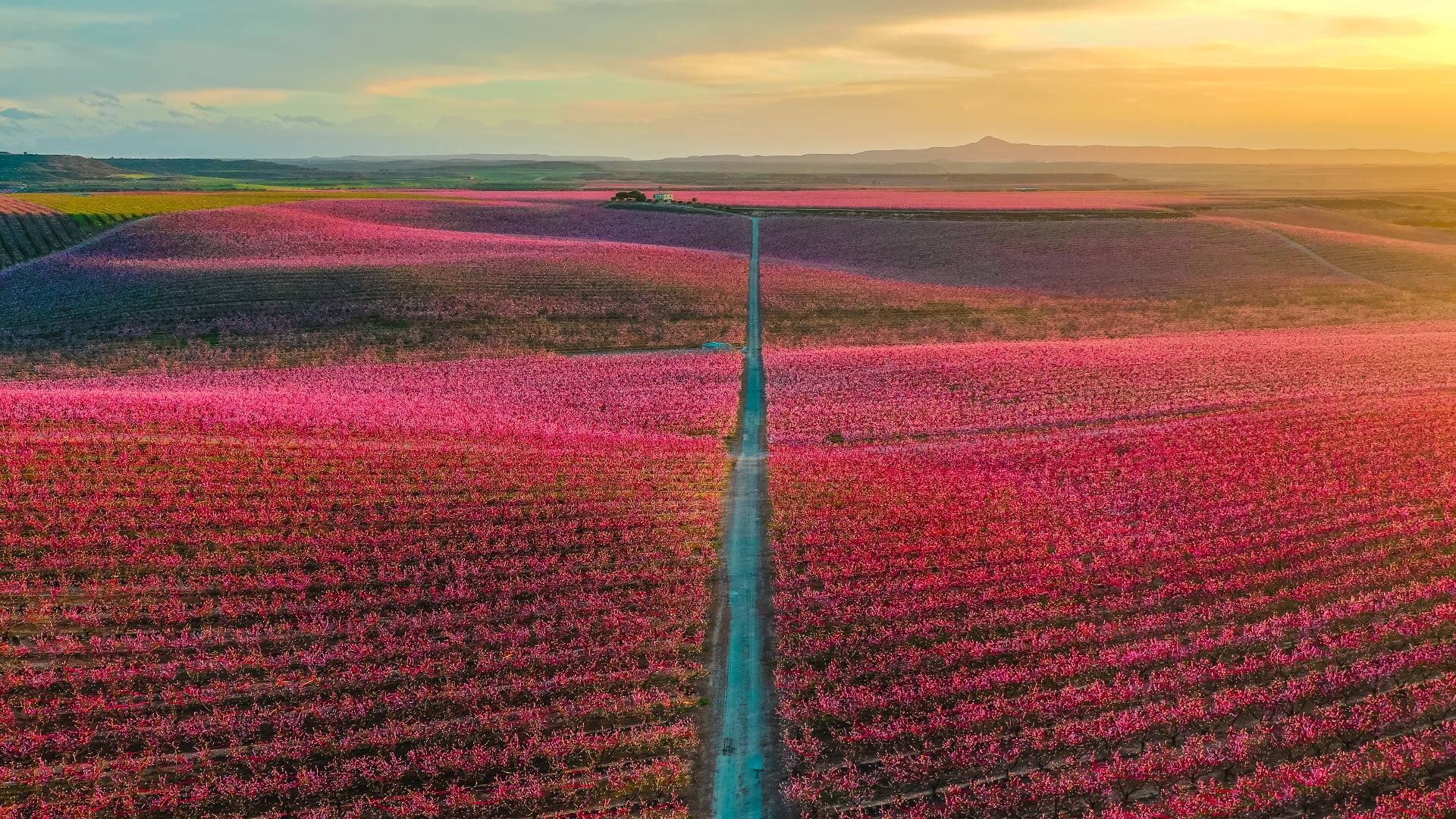

Route planner
Create your own plan for your trip to Spain with a route to suit your requirements

10 Epic Spain Road Trips - Maps, Itineraries and Tips
Want to experience an amazing Spain road trip but not sure where to go? Choose from these 10 stunning routes for your road trip in Spain with our guides, detailed itineraries and insider tips.
Whether you're looking to relax in the mountains off the Costa del Sol, navigate the narrow streets of Toledo or take a stroll down Barcelona's Las Ramblas, we can help you plan the perfect Spanish road trip for you.
Best Spain road trips comparison
We have driven up and down and across Spain a lot of times over the past 15 years. Before we dive into the ideas, here's the complete list of the best road trip routes with key information. Scroll down to see more detail on each one.
Whether you want a relaxing drive along the coast or drive around the entire country of Spain, here are the 10 amazing options for a Spain road trip to pick from.

1. Andalucia road trip
A perfect way to explore Spain is to drive around Andalucia . If you love the sun, beaches and perfect mountain hideaways overlooking the sea, Andalucia is the place for you.
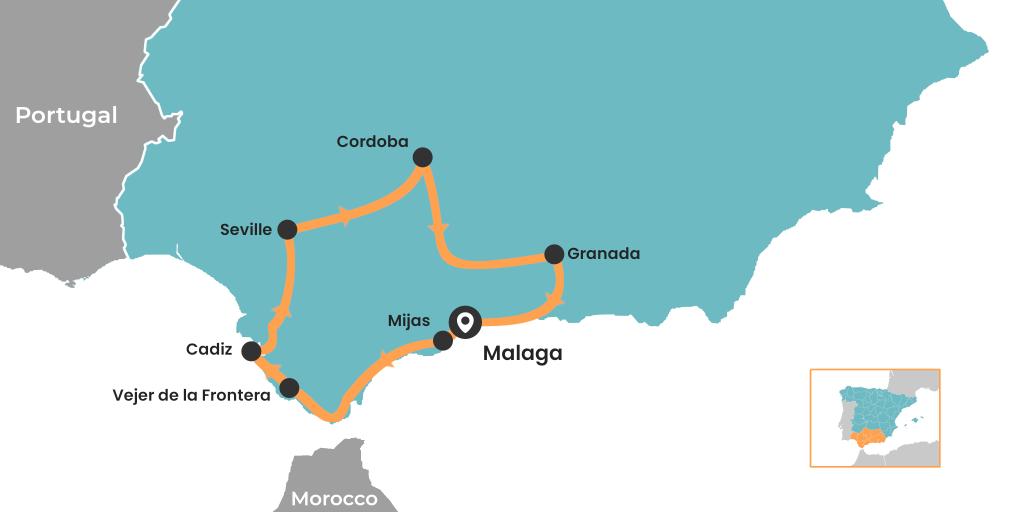
If you are more into culture and love grandiose cathedrals, medieval fortresses and jaw dropping architecture, Andalucia is also a place for you.
If, however, you just want to walk around historic towns and love traditional hearty Spanish food, you guessed it - Andalucia is your perfect destination.
The perfect Andalucia road trip will take you on a loop including coastal destinations such as Nerja, Malaga, Marbella, Gibraltar and Cadiz before going inland to discover Ronda, Seville, Cordoba and Granada.

This drive will scale mountains with breathtaking views and take you to the mesmerising Mezquita cathedral in Cordoba and the unique Moorish Alhambra complex in Granada.
You'll relax in the world famous Andalucian white villages of Mijas, Benahavis and Casares and mingle with new money in Puerto Banus' marina full of expensive supercars, people with too much plastic surgery and the world's biggest yachts.
Road trip length: 11 days
Total distance: 518 miles
2. Drive Spain's Mediterranean coast
Spain's Mediterranean coast is perfect for a Spanish road trip - just make sure you put sun screen on your left arm if you're driving - the sun gets hot!
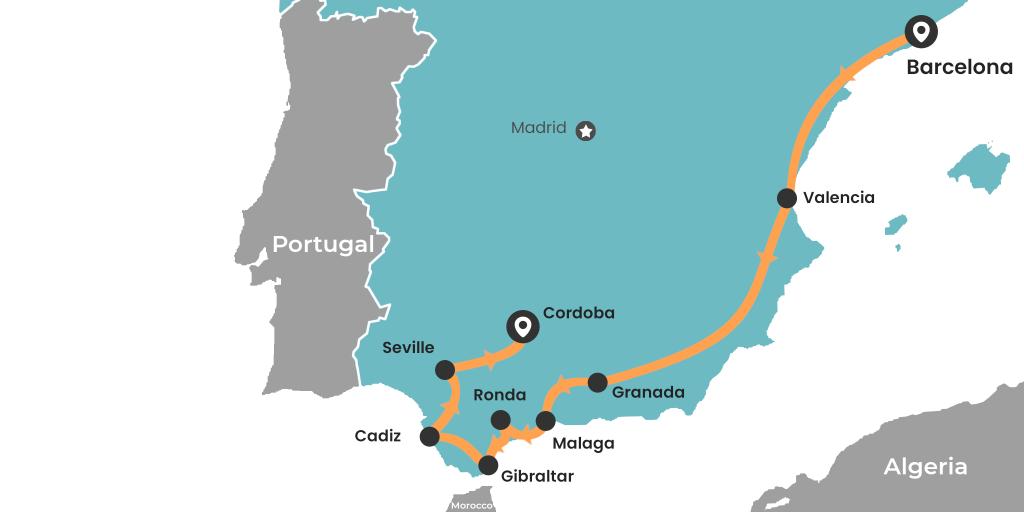
Start your road trip with a mini-break in Barcelona where you can visit sights such as La Sagrada Familia, Las Ramblas and unique buildings designed by Gaudi. There are few cities that offer as much as Barcelona so it's a perfect start to the Mediterranean coast trip.
Next leg takes you south to Valencia - a seriously underrated Spanish city that offers culture, food and sunshine aplenty with an amazing historical centre.
Once you've crossed over the Sierra Nevada mountains, your trip continues to Granada, Costa del Sol, Seville and Cordoba.
You will do an abridged version of the Andalucia road trip above, but get a much broader view of Spain having driven from one corner to another.
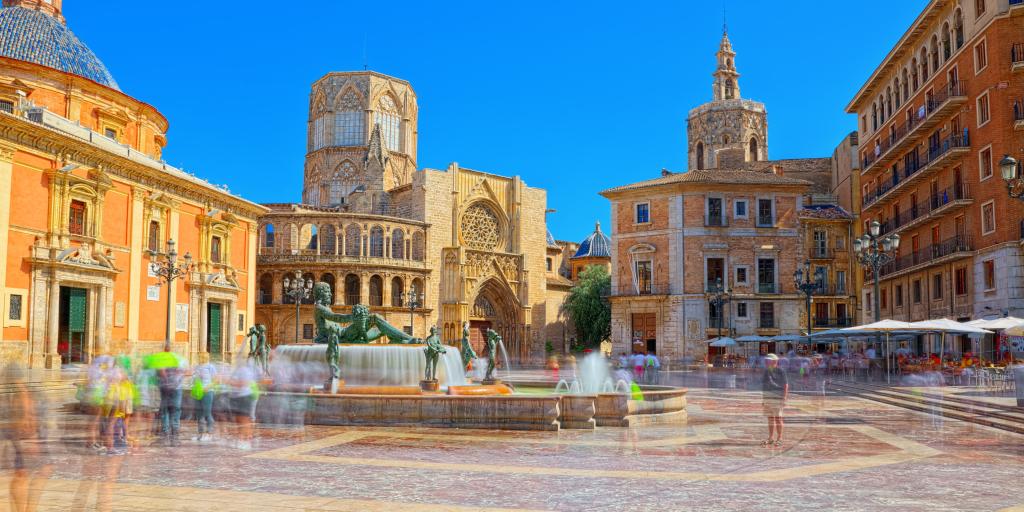
Hugging the coast for virtually the entire trip means that you are always a few minutes away from a beach - something that can provide welcome distractions on your way.
This road trip is a perfect mix of culture and relaxation so if you want to blend the two, give it a go. You will see the world's finest architecture in Barcelona, La Mezquita in Cordoba, the Seville Cathedral and Granada's Alhambra fortress but have time to relax in Puerto Banus, lay on the beach in Nerja and roam the narrow streets of Andalucian white villages.
Road trip length: 14 days
Total distance: 1,385 miles
3. Castille Leon - visit the heart of Spain
If you're flying in and out of Madrid, the Castille and Leon road trip can be an amazing way to explore Spain without having to drive all the way to the coast or spend weeks on the road.
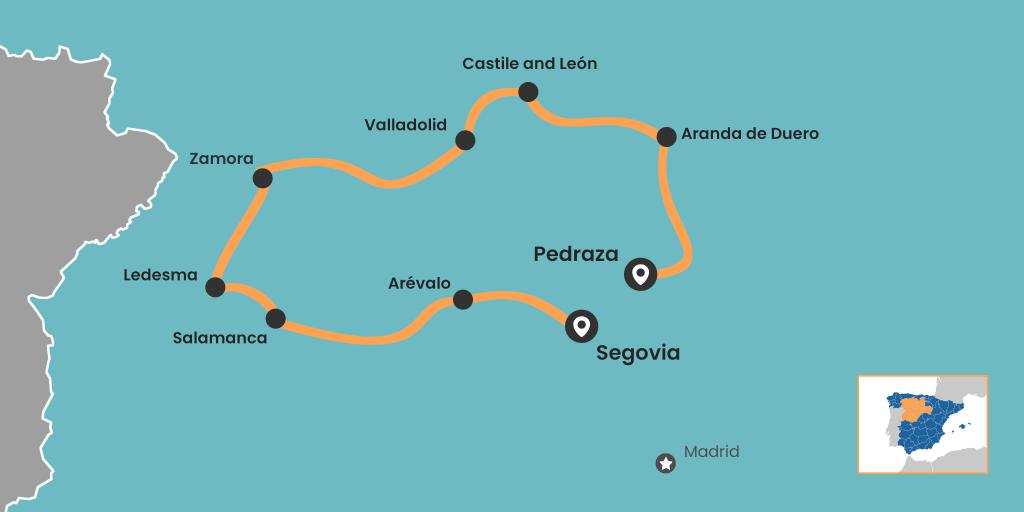
This road trip through Spain's heartland comes in a loop that starts and ends in the Segovia province.
You will start in the historic city of Segovia itself - famous for some of Spain's best architecture and declared a UNESCO World Heritage site.
After a day of exploring, the route heads west towards Salamanca via Arévalo. Arévalo is a small historic town famous for its Mudejar architecture and art giving it a special protected status in Spain and Salamanca is an ancient city with two cathedrals - the New one (it is actually called that) began construction in 1513!
From Salamanca, you can check out other beautiful historic towns of Ledesma and Zamora before a stop in Valladolid - the assumed capital of the Castille and Leon province. Its medieval history can be seen throughout the city - the Spanish Monarchy even made Valladolid their home in the 17th century!
After a visit to the city that shares its name with the Castile and Leon region, the trip ends with a drive through the Ribera del Duero wine region - hugely underrated relative to Rioja and the Portuguese Douro wine further down the same river valley.
The end of the trip gets you to Pedraza back in the Segovia province before taking a short drive back to Madrid's airport.

You can extend this road trip to include the historic Spanish cities of Leon and Burgos in the north of the province, but that will add a lot of mileage and time to your trip and southern Castille and Leon has a huge amount to see already - you can easily spend 2 weeks exploring this part of Spain and see new places every day.
Road trip length: 7 days
Total distance: 345 miles
4. Northern Spain road trip
So often overlooked in favour of Costa Brava, Costa del Sol or Costa Blanca, Spain's northern coast makes for an amazing road trip exploring the mix of cultures, fantastic food and rocky shore scenery.
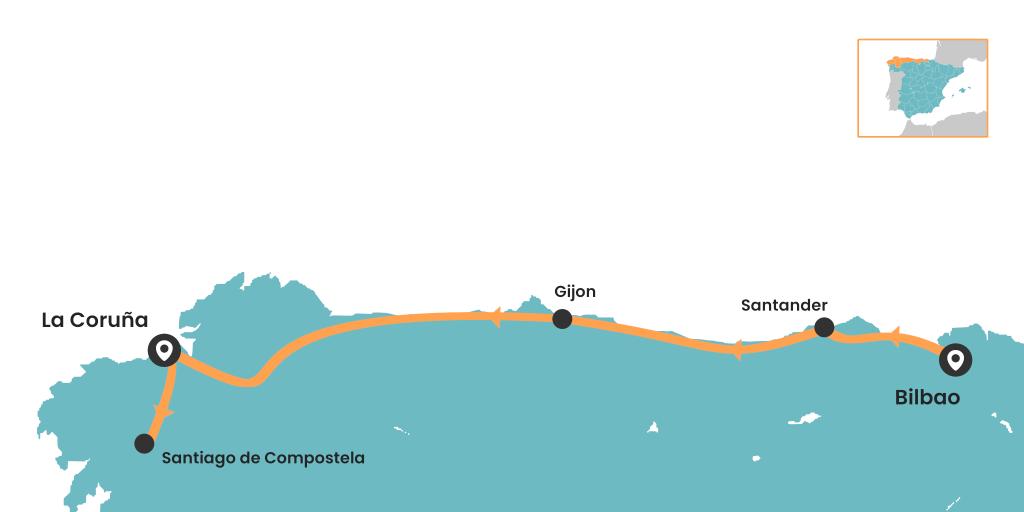
The road trip starts in the capital of Spain's Basque country - Bilbao. This is a place worth spending a couple of days in to explore its old historic centre, the surrounding mountains and the spectacular world-famous Guggenheim museum.
There is something for everybody in Bilbao with superb pintxos in street bars and michelin-starred restaurants, medieval streets and modern boulevards.
The road trip then moves west along the coast to Santander, before further stops in Santillana del Mar, the Picos de Europa national park and Gijon.

This trip includes a mix of beaches, historic Spanish cities and exploring nature - a perfect mix for a Spanish road trip!
Once you've hiked amazing gorges and filled yourself with pastries, it's time to hit the road and drive on to Oviedo and La Coruna.
Finishing off with a day trip inland to Santiago de Compostela, you will travel the entire length of Spain's Bay of Biscay coastline with everything to see along the way.
Depending on your flights, you might have to do a drive back along the coast to Bilbao or down to Porto or Madrid - this is one heck of a trip that you won't find in many recommendations or guides!
Road trip length: 10 days
Total distance: 737 miles
5. Basque country and Pyrenees
Spain's north-west corner lying on the Bay of Biscay and bordering France is full of history, tradition and... mountains.
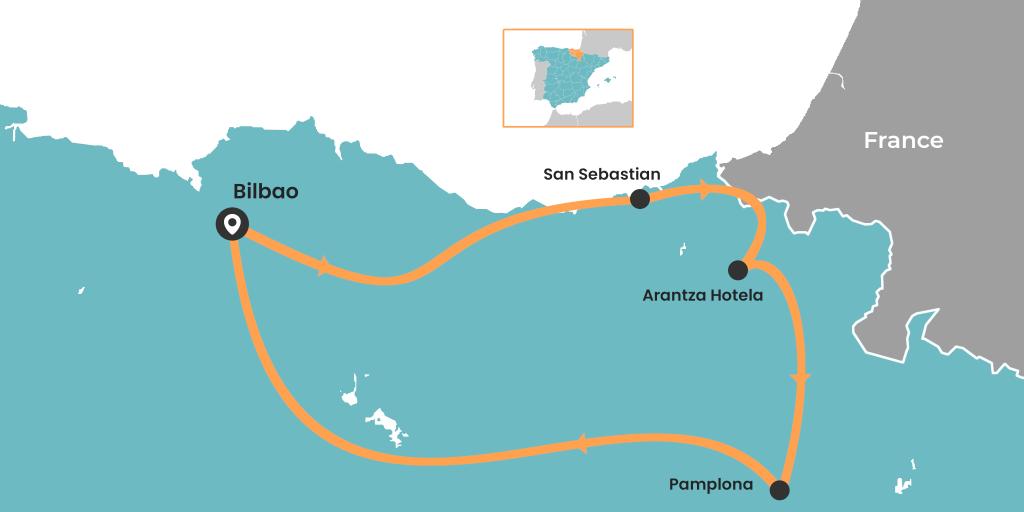
The Basque country is a unique part of Spain - they have a prominent local language, cities that make up two prominent medieval kingdoms (Basque and Navarre) and a unique link to the Pyrenees. In medieval times, Basque country spanned the mountain range, including parts of France on the other side.
Today the region fervently focuses on its culture. As you travel in major cities such as Bilbao, San Sebastian and Pamplona, you will get to try the local pintxos tradition. In some ways similar to tapas popular in the rest of Spain, pintxos are smaller bite-size snacks served in bars and charged by number or by plate.
If you get out of the tourist areas, you will find local pintxo bars where the snacks are free as long as you keep buying the drinks!
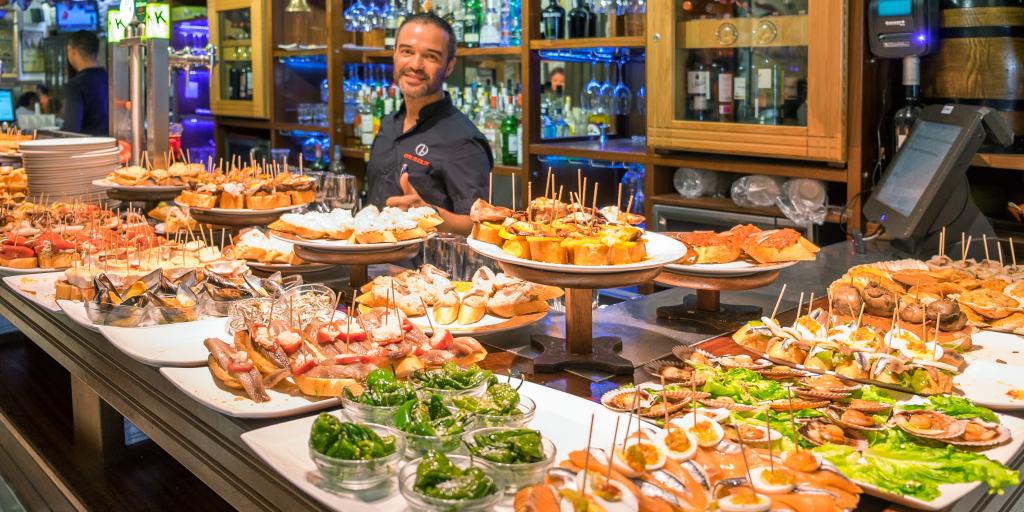
The Pyrenees are an amazing mountain range that is not high on many tourists' radars.
Often overlooked in favour of trips to the Alps or even Sierra Nevada further south in Spain, the Pyrenees are an older mountain range with a lot of peaks over 3,000m above sea level.
The roads through the Pyrenees are fantastic and can make for really great road trips with the added bonus of hardly any other cars as you drive around. There are some fantastic hotels if you want to really relax and go off the grid for a few days - we have stayed at The Arantza Hotela in the foothills of Pyrenees and cannot recommend it highly enough - it is expensive but super luxurious and worth it!
A small number of rooms have stunning views of the surrounding hills with morning fog climbing towards the peaks and you can relax in a jacuzzi looking out over the landscape before having an amazing dinner in the hotel's gastro restaurant.
After a few days of luxuriating, it's time to drive down from the mountainside and make your way to Pamplona - a historic city famous for its July bull running festival has far more to offer than the medieval tradition. Narrow streets, beautiful stone buildings and fantastic local coffee shops are great for unwinding in late morning.
The drive back to Bilbao airport is a little under 2 hours to get you back home!
Total distance: 240 miles
6. Driving tour of Catalonia
There is a whole lot more to Spain's Catalonia region than Barcelona. You can spend weeks travelling around the area and still not see dozens of amazing villages, secret beaches, mountain waterfalls or quirky museums.
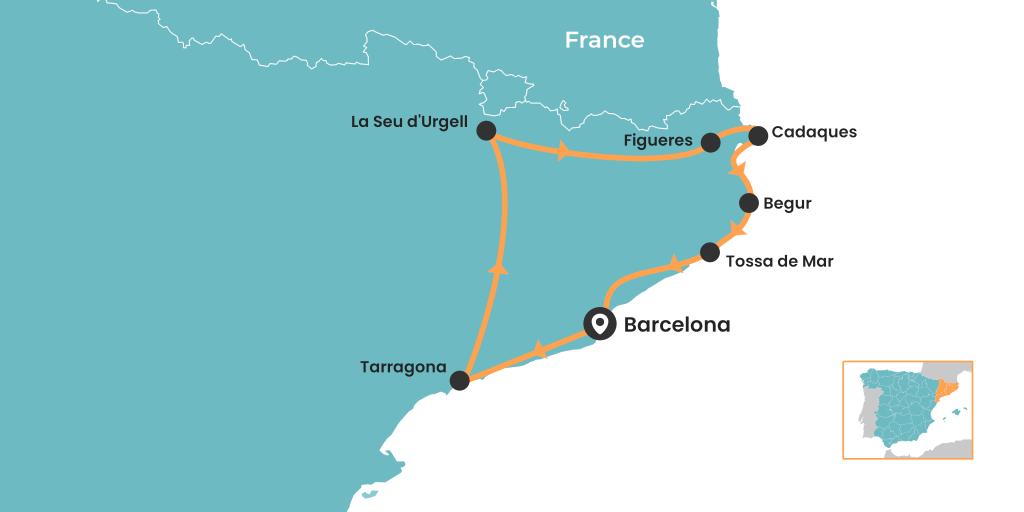
If you want to base yourself in Barcelona, instead of going on a road trip, check out our 40 day trips from Barcelona for inspiration on where you can get to!
A great route around the region can start and end in Barcelona to make it easy with flights.
From Barcelona, head south along the coast to Tarragona with a stop in Sitges and the option of relaxing in one of a few great beaches along the way.
From Tarragona, this trip goes inland towards Montblanc and all the way to La Seu d'Urgell in the Pyrenees via Solsona.
On your route across the north of Catalonia, you are spoilt for choice with the Garrotxa volcanic national park and the village of Santa Pau worth visiting, a detour into Andorra and towns like Besalu and Castellfollit de la Roca all great options before you arrive in Figueres.
After some cultural sightseeing, head on to Cadaques on the coast - there are some great beaches and a Salvador Dali House Museum.
The rest of the road trip follows the Costa Brava back down to Barcelona. There are tonnes of great places to stop including Roses resort, the canals of Empuriabrava, L'Escala and Begur. A drive inland to Girona is optional before you make it down to the relaxation end of the journey with beach stops in Tossa de Mar and Lloret de Mar on the menu.
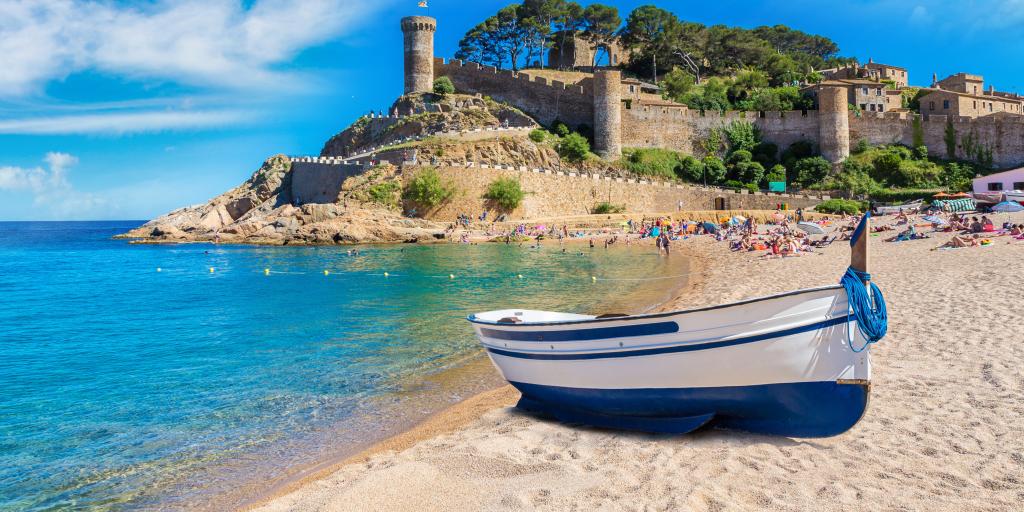
There are few parts of the world which have so much to see in such a compact region both culturally and in nature. If you love the mountains, hiking and being off the beaten track, a road trip around Catalonia is definitely the best choice in Spain.
Road trip length: 9 days
Total distance: 520 miles
7. Historic central Spain - Castilla-La Mancha
Castilla - La Mancha is one of the largest regions of Spain and also one of the least well known by tourists.
Hidden away in plain sight right next to Madrid, it stretches almost as far as Valencia and Murcia in Spain's south east.

Exploring this region brings a mix of natural sights and beautiful historic Spanish cities. As with the Castille Leon trip, it's easy to start and finish in Madrid if that's where you can get easy flights to.
This Spain road trip starts in the most famous city in the La Mancha region - Toledo. Toledo is famous as a blend of Christian, Muslim and Jewish religions and cultures. It was the capital city of the Visigoth Empire, Spanish Moors and later of Spain at some points during the course of history.
After a couple days of sightseeing, it's time to hit the road and head on south to Ciudad Real via Consuegra and Daimiel.
There is a lot to see in this part of Spain including the infamous windmills made famous by Miguel de Cervantes' Don Quixote. The majority of the region is set on a plateau with occasional barren hills.

The trip continues east to Cuenca and Siguenza - both stunning towns but in completely different ways and both very different from a lot of typical Spanish destinations.
If you're feeling adventurous, there are a number of national parks on the way where you can stretch your legs on a hike or just take a scenic detour.
Total distance: 380 miles
8. Galicia road trip
Getting to and from the region can be tough so you might have to adjust the route depending on where you're travelling from.
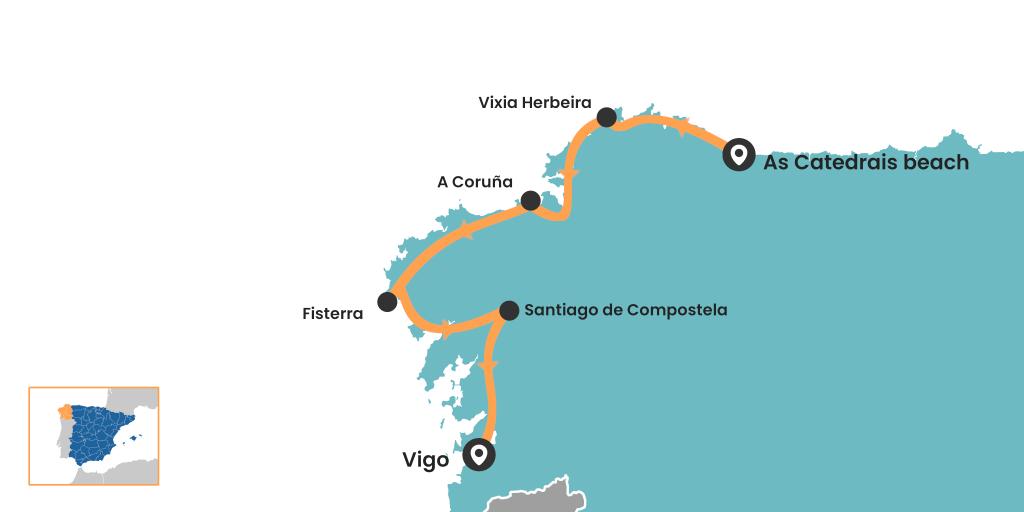
The plan with this road trip is to go all the way round the Galician coastline starting from As Catedrais beach. If you don't know it by name, you've definitely seen pictures of giant rocks and archways on the sandy beach before.
Although this trip is only 5 days long, you'll spend a few of these driving along small coastal roads. Our tip is to ignore the navigator which will send you inland along faster roads. Keep the sea to your right as you go and you're unlikely to go too far wrong.
After passing the Vixia Herbeira cliffs, you'll arrive in A Coruña. Other than the Hercules Tower, the main sight here is the light house. Naturally.
Take a day to see the city and its surroundings - seafood here is amazing as it's a functioning port supplying much of the region and beyond.
The trip then continues around the coast to Santiago de Compostela. You can take the direct short cut but you will miss out on a whole lot of stunning scenery, ocean-facing cliffs and spectacular locations for light houses - on the shoreline, on cliffs and even on their own islands.
After exploring the historic and religiously important city, the route goes back towards the coast and passes Pontevedra on the way to the pretty town of Vigo.
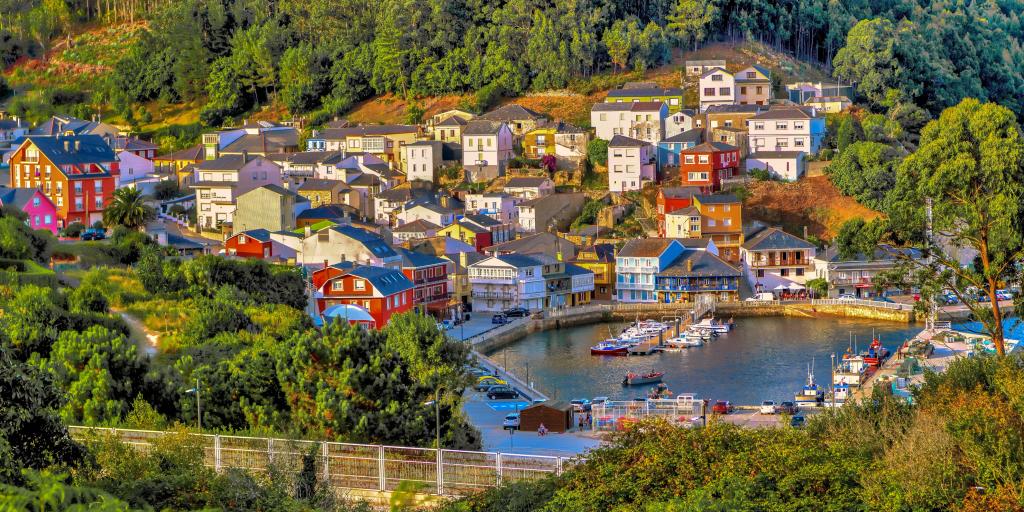
This might not be so much of a Spanish road trip as a gentle breeze along the coast (and there will be a lot of breeze!), but it's definitely one to keep in mind if you want to unwind and keep yourself away from the tourist traps around Spain.
Road trip length: 5 days
Total distance: 322 miles
9. Road trip around Mallorca
Many don't associate Mallorca with a road trip, but the island has a huge amount to offer beside the beaches and clubs.
Flying in and out of Palma means that's a great place to start and finish your trip.

Palma is the capital and often overlooked by visitors who go straight from airport to their preferred corner of the island. The city actually has a lot to offer so it's great to spend the first or last night here depending on your flight times.
Make sure you check out the huge Cathedral (you really can't miss it) and the part of the city around the market (only open in the morning).
Once you set off, the best way to see the island is to drive all the way around.
Start by heading along the narrow cliff roads along the coast to Valdemossa and Soler - the two very popular destinations to the north of Palma. After that the road trip continues all the way to Port de Pollença before heading across the island to Cala Mesquida.
Once you've navigated the tourists, a short drive down the coast takes you to Cala Agulla where the beaches are empty and the sun is just as hot for some relaxation.

To wrap up the trip, you've got to stop off at the resort town of Cala d'Or before making your way back to Palma.
A short trip with a lot of breathtaking views and cliffs in the north and resorts with fantastic beaches on the south can be the perfect way to unwind on a short break!
Total distance: 175 miles
10. The full circle - A complete road trip around Spain
If you have time on your hands and feel adventurous, a road trip around the entirety of Spain can be an amazing way to delve into the culture, see all the corners of this amazing country and really get immersed.

One key disclaimer is that while this one sits high on our list of bucket list trips, we haven't actually done the full trip - it's a long drive!
But if you're brave enough, you can start wherever along the route you like as you it goes in a loop.
Barcelona and Madrid are likely to be the best hubs for getting in and out of Spain and the route cycles down through Valencia to an Andalucian tour before heading back north from Cordoba.
After exploring central Spain with stops in Toledo and surrounding towns and a tour of Madrid, the drive continues into Spain's Duero valley, Valladolid and on to Galicia's Vigo, Santiago de Compostela and A Coruna while taking in breathtaking views of ocean-facing cliffs and huge waves.
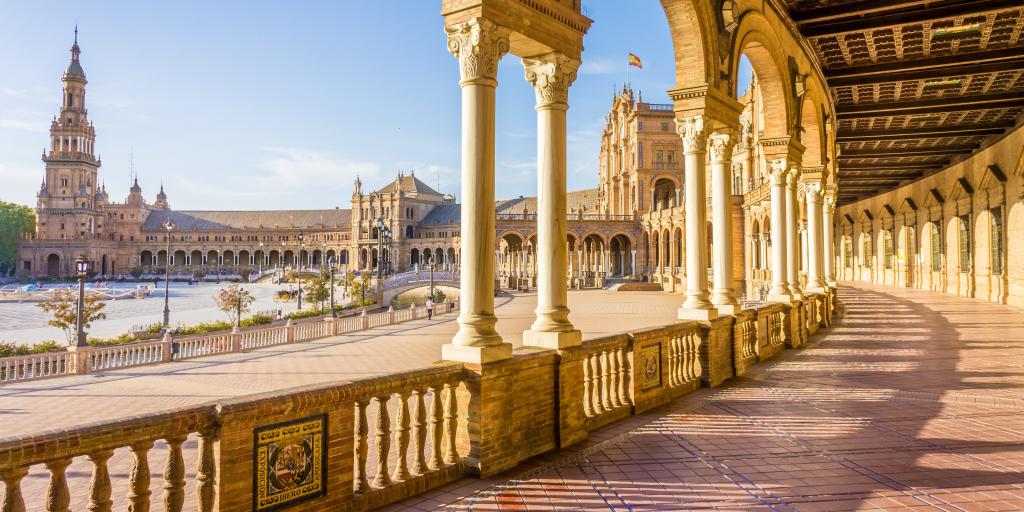
The trip continues along the north coast stopping off at Santander, Bilbao and San Sebastian before detouring off into the Pyrenees and the historic cities of Pamplona and Zaragoza. A mini Catalonia tour to end the trip wraps up the route that will take at least a month to complete if you want to do things other than driving.
If you do end up doing this one, please let us know! We'd love to see how you get on!
Road trip length: 35 days
Total distance: 2,800 miles
Join our email list!
By joining our email list, you give LazyTrips permission to use your email for sending you newsletters, emails and updates including for marketing purposes. Your email will not be provided to third parties.
Related posts
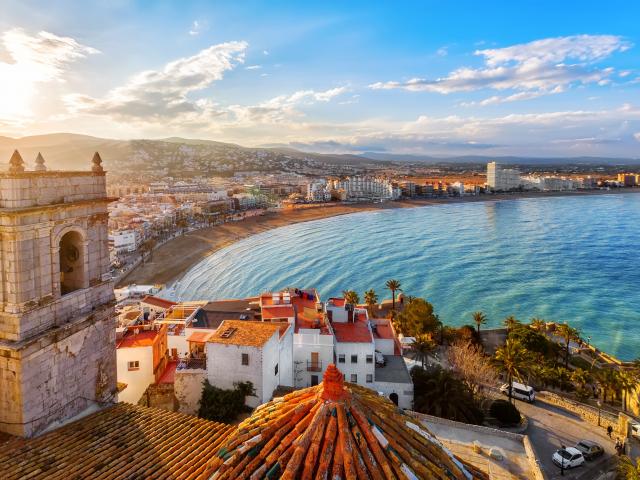
The best map of Spain

A map of Spain is essential. Every time that I plan a trip one of the first things I do is to look for a map. I like to locate sights, monuments, bars and restaurants and even my accommodation (or potential one if I haven’t made up my mind yet).
I find that it’s very important to get a glimpse of possible travel itineraries, know a bit more about distances (especially if it’s a big country).
Therefore, long before catching the plane I spend some time researching, downloading and drawing lots of maps. It helps me to maximize my trip and have a better knowledge of the place I intend to visit.
Moreover, once I’m on the road I consider that a map is vital. Unless I have a friend or relative that will be my guide, I always carry a map in my smartphone.
In the case of Spain, you’ll realize very soon that in most cities the center is pretty much a labyrinth, especially the older ones. And despite the numerous tourist offices and the fact that people are kind enough to provide directions, it’s definitely easier to have a map of each city with you.
Here you’ll find a complete list of maps. I have created some of them with the help of Google Maps; they show the location of key points of interest and are ready for printing. But I have also included additional maps, either online or in PDF format.
(You’ll need Adobe Acrobat to view and print the PDF files. If you don’t have this software you can get it here for free. Just download it and follow the instructions to install it.)
Table of Contents
Spain map: best online resources
It’s handy to have good Spain maps of all sort before you depart on your trip, but if you don’t, no worries. You’ll find lots of good maps readily available below.
- Here’s my free Google Map of Spain.
- Map of Spain divided by regions ( comunidades autónomas ) .
- Spain map: weather forecast (AEMET) .
- ViaMichelin: Michelin route planner and maps to help you with directions and traffic.
- Spain map: train routes .
Map: Spain’s main travel destinations
You’ll need a city map, but which one is best? I’ve used a ton of different city maps, map books, and guide books in my many visits to the all of these cities, so I’m in a good position to give you advice about the best of them — including ones for people (like me) who need to know everything.
Apart, from the ones included for each destination, you can always go to the local tourist office and get a paper map. They are not so practical, but they are free and will always do the trick!
Here is a list of Spain’s main travel destinations:
- Barcelona . You can download a sightseeing map or a Metro map with the main attractions .
- Cordoba . Here’s the best tourist map .
- Granada . Have a look at this map including all the highlights .
- Madrid . I love this map with all the information .
- Seville . Download a map with the main attractions .

Spain Road Trip: 8 Amazing Routes for an Epic Trip
This post may contain affiliate links, from which we earn an income.
Our Pick of the Best Road Trips in Spain
Amongst the beautiful landscapes of Spain, in the mountainous interior and along the gorgeous coasts, you’ll find fascinating history, vibrant culture, and incredible cuisine. One of the best ways to experience Spain is by taking a road trip.
With the lively attractions of Barcelona, UNESCO World Heritage Sites, the historic medieval cities of the interior, and endless summer days in Andalucia, Spain is an eclectic place to take a road trip.
We base ourselves in Spain when not traveling and have explored much of the country on four wheels and two! Whether you want historic cities, gorgeous landscapes, beaches and sun, or something a bit different, our detailed guide has the best Spanish road trip routes plus itineraries and travel tips, to help you plan the perfect trip.
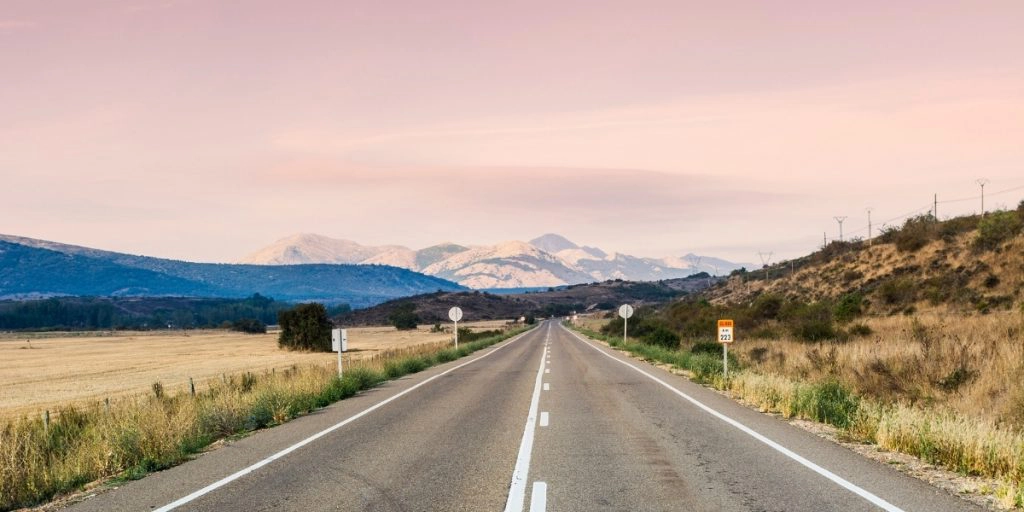
Getting to Spain
Whether you’re taking a Spain road trip in a car, motorcycle, campervan, or motorhome, self-driving is absolutely the best way to explore this spectacular part of the Iberian Peninsula.
When you road trip Spain you can stop whenever you want, try new activities, visit places you see along the route, and have the freedom to change plans at the last minute.
Spain is an easily accessible country from the UK and most of Europe, with a direct ferry route from England to Santander or Bilbao, and an established network of autovias to help your road trip across the country. Plan on getting to Spain as part of your trip and enjoy an epic road trip to Spain, followed by one in the country itself!
RELATED POST: Driving from UK to Spain – Routes & Tips
Book with Skyscanner and fly into the well-located international airports of Madrid , Malaga , and Barcelona are ideal starting points your Spanish road trip – you can be anywhere in the country within a day and that’s the beauty of a viaje por carretera , or road trip in Spanish!
Are you planning to rent a car in Spain? As one of the largest car hire aggregator companies in the world, we recommend Rentalcars.com because they have massive purchasing power which enables them to secure the best car rental prices, which benefits you when you’re planning a roadtrip in Spain.
For a real adventure , hire a motorhome or campervan in Spain. We recommend Motorhome Republic , an aggregate booking site who pull together all the best deals from a number of rental agencies, to offer you a wide choice of options alongside an excellent English speaking expert motorhome Concierge Team.
Best Spanish Road Trips Map
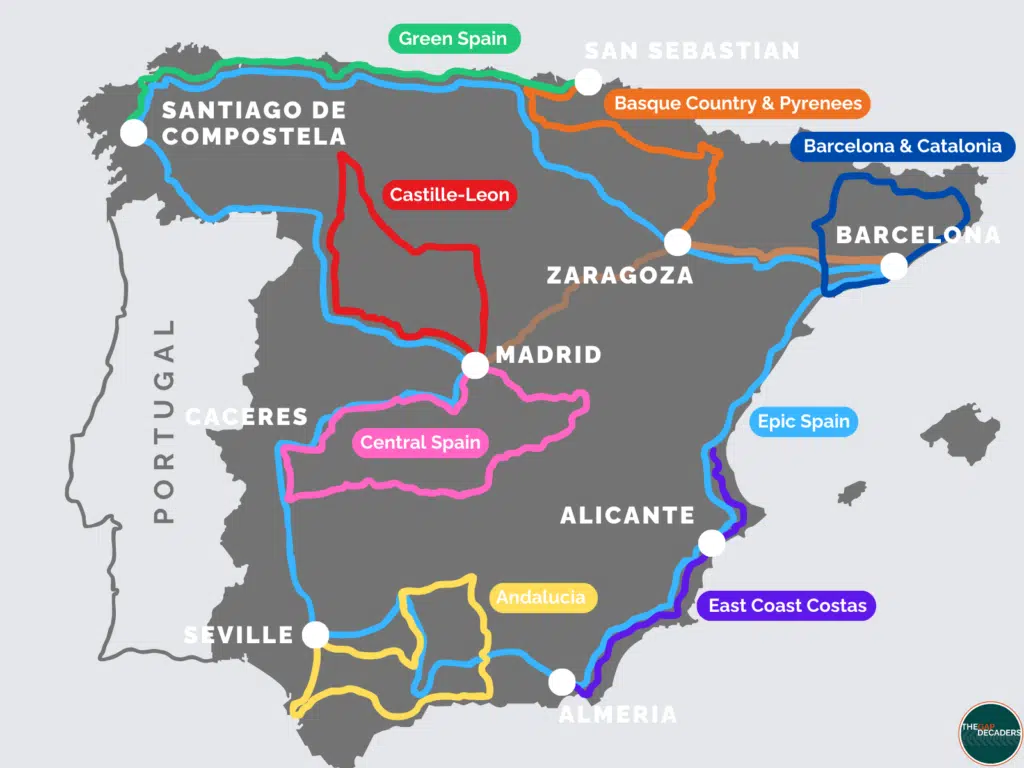
Which is the best road trip in Spain?
- Castille-Leon for historic cities, vineyards, and empty roads.
- Barcelona and Catalonia for beautiful beaches and lively party vibes.
- The Basque County and Pyrenees road trip is perfect for foodies and hikers.
- Andalucia for gorgeous Moorish cities, flamenco, and fantastic beaches.
- East Coast Costas for vibrant seaside resorts and sunny days year round.
- Central Spain for wild natural landscapes and off-the-beaten-path towns.
- Green Spain for quiet beaches, mountain hiking, and fab food.
- Epic Spain for an amazing journey through the best of Spain.
Is this your first time visiting Spain? Get all the information you need in our Spain Travel Guide , including what to pack, the best time of year to go, getting there, and practical tips to help you have the best trip!
Castille-Leon
Madrid – segovia – salamanca – zamora – león – valladolid – penaranda del duero – madrid.
- Distance: 915km
- Duration: 7-10 days
- Drive Time: 11 hours
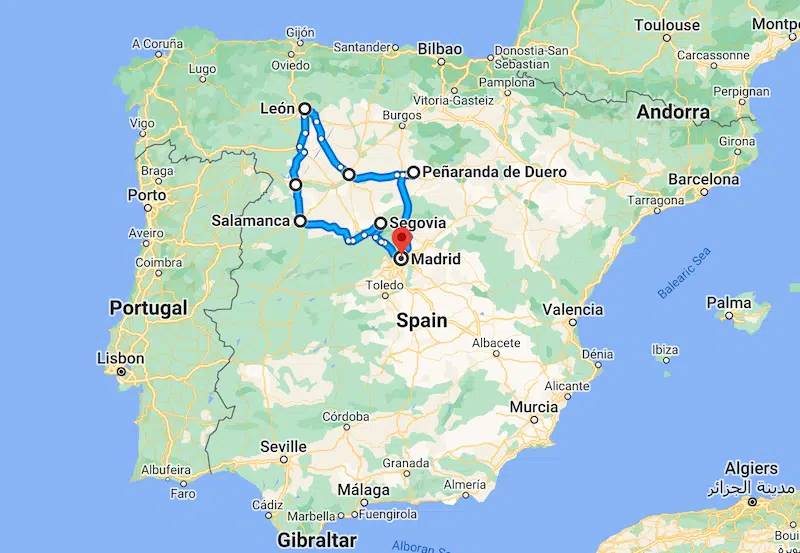
This fantastic seven to ten day Spain road trip itinerary through the land of frontier castillos and roads that stretch into the distance for miles will take you across the high plateaus and rugged mountains of central Spain. This is a road trip for those who want the real Spain.
It will be unbearably hot in summer and bitterly cold in winter in this part of Spain. This road trip in Spain should be taken in spring when the fields are carpeted with colorful wildflowers, or in autumn/fall for the late summer sun and the beautiful ochre and red of the Duero vines.
Pick up your hire car at Madrid airport and spend a day in Madrid , the largest city in Spain, seeing the most important attractions, including Plaza de España, the Prado Museum, Plaza Mayor, and the nearby Baroque Royal Palace before heading to the UNESCO World Heritage Site of Segovia, a walled city with grand squares and mansions from its days as a royal holiday resort, and one of the most distinctive medieval castles in Europe.
Next up, visit Salamanca , known as the Golden City because of the prolific use of honey-colored sandstone in the civic and religious buildings of the city. Salamanca is beautifully graceful, with learning at its heart, and the most elegant Plaza Mayor in Spain.
Zamora is your next destination. With its Romanesque churches and charming streets and squares of the old town, this makes a great stop for an overnight stay. Onwards to Leon, a sociable city with a fabulous casco antiguo, packed with great architecture and atmosphere, and a notable Gothic cathedral.
Valladolid, your next stop is high on the mesta (plateau) and has been lived in by many of Spain’s famous historical figures. Despite that, it is a more modern town than its neighbors. You’ll find restored plazas and churches along with some excellent museums.
To the east, the small town of Penaranda del Duero is deep in the lush rolling vineyards of La Rioja, where some of the best wines in Spain are produced. This gorgeous town, on the Ribera del Duero Wine Route, sits beneath an impressive castle and is a popular weekend getaway for Madrilenos .
Spain is famous for its history and if you have an extra day at the start or end of your road trip, visit Toledo , an hour’s drive to the south of Madrid. Known as the Imperial City, this UNESCO World Heritage Site has one of the most well-preserved old towns in Spain and more historical sites per square meter than Rome!
- Eat suckling pig in Segovia, a truly delicious local specialty.
- Head for the tapas bars of the cathedral quarter in Leon. Order a small beer and get a complimentary tapa!
- Visit a bodega along the glorious Ribera del Duero and enjoy a wine tasting.
Where to Stay
Madrid ⇒ Only You Hotel Atocha for its hip vibe, contemporary luxe decor, and fantastic public spaces.
Leon ⇒ Hotel Real Colegiata San Isidoro for its superb location, complete uniqueness, and fabulous history.
Valladolid ⇒ Abadia Retuerta LeDomaine for sheer luxury, fabulous restaurants, and an incredible spa. A fabulous hotel for the perfect end to your road trip.
RELATED POST: Madrid in One Day – Itinerary, Map, Tips & Guide
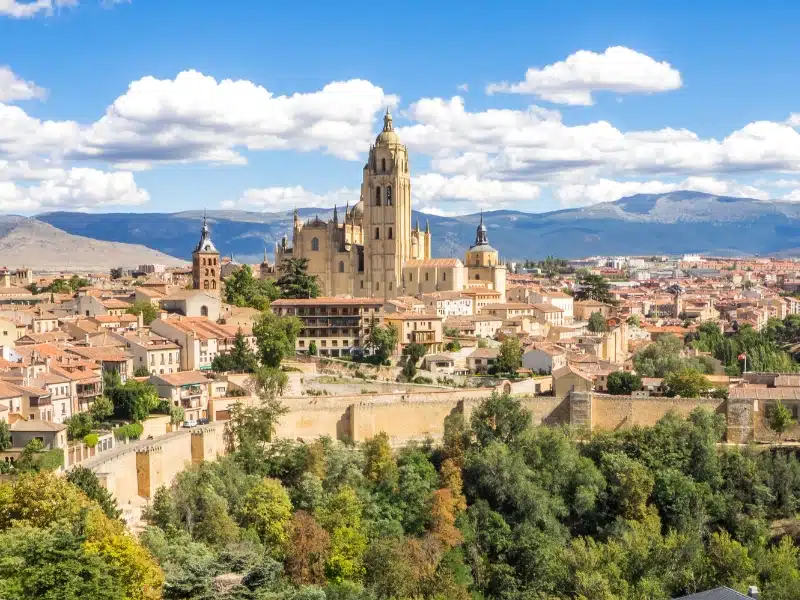
Make sure you have travel insurance you can trust when visiting Spain . We recommend True Traveller for their excellent TrustPilot reviews, variety of cover options, best activities cover as standard, great prices, and excellent service.
Barcelona & Catalonia
Barcelona – sitges – tarragona – la seu d’urgell – figueres – calella de palafrugell – tossa de mar – barcelona.
- Distance: 642km
- Drive Time: 10 hours
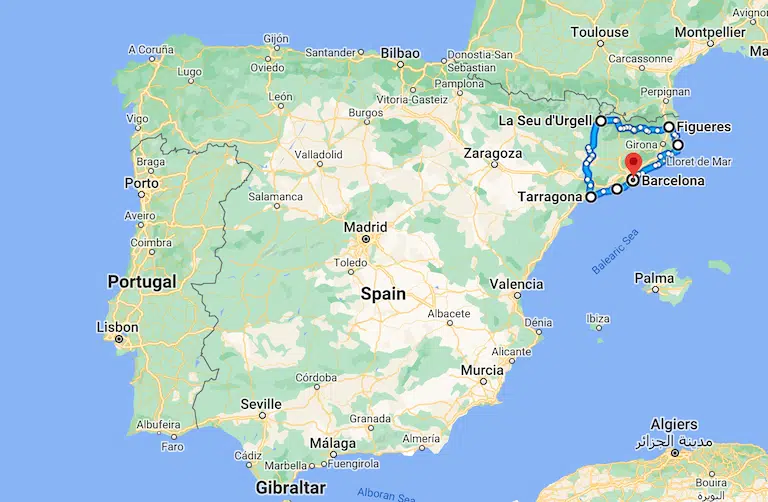
This seven day Costa Brava road trip from Barcelona takes you through one of Spain’s most distinctive regions. Catalunya is fiercely independent with a unique identity, and like nowhere else in the country. With its own language, Catalan, the region has long been an intersection of cultures and influences.
We start on the Costa Brava in the second biggest city in Spain, Barcelona. This is Gaudi’s city and home to the sublime but unfinished La Sagrada Familia cathedral. Once you’re done admiring his masterpiece, head for the Gothic Quarter, a great spot to while away an evening bar hopping in this most lively of cities.
If you have enough time, try hiking in Montserrat , just a short drive from the city. Famous for the cliff-hugging monastery and distinctive serrated rocks, you don’t even have to hike, you can get a cable car to the top!
Head south along the coast to beautiful Tarragona, stopping at Sitges if partying is your thing …but be prepared to party hard, the town is famous for its nightlife.
Tarragona is situated on a rocky hill above the sparkling Mediterranean Sea. With a fine historic center and a scattering of Roman ruins, this is a great place to spend the day visiting the must-see 2nd century Amfiteatre Romà, Necropolis, and Forum before wandering the Passeig Arqueològic for sweeping views of the city. Or you could just relax on one of the many beaches.
From here it’s inland and north to the Pyrenean medieval town of La Seu d’Urgell, overlooked by the Sierra de Cadí mountains. Replete with the Romanesque style architecture of Catalonia in the 11th and 12th centuries, this is a town for meandering.
From La Seu d’Urgell, it’s a hop and skip to Andorra, the sovereign landlocked country that crowns the Pyrenees. We’re on the fence about this tiny microstate, which we thought was a little… odd. But, if you want to tick another European country off your list, now is the time!
From here, a spectacular drive through the foothills of the Pyrenees takes you to Figueres, via La Garrotxa Natural Park, known for its many extinguished volcanoes. Figueres, the birthplace of artist Salvador Dalí, houses the Teatre-Museu Gala Salvador Dalí, which is worth a visit if you like Surrealism.
You’re heading south now, bypassing Girona (which is worthy of a visit all of its’ own if you have time) in favor of the Costa Dorada beach resorts of Calella de Palafrugell and Tossa de Mar.
Calella de Palafrugell is one of the most beautiful coastal villages in Spain, with cute white houses, colorful wooden boats on the beach, and rocky inlets and hidden coves, and makes a perfect spot to stop and relax for a couple of days.
Tossa de Mar has a beautifully preserved old town, complete with cobblestone streets and fortifications and a fine beach, at total odds with its near neighbor, Lloret de Mar, which was one of the first places to Spain offer package holidays in the post-Franco tourist boom in the 1970s and has the highest concentration of hotels in the Mediterranean.
- The works of Gaudi define Barcelona and the Sagrada Familia and La Pedrera are must-sees.
- Bar hop and eat pintxos, delicious small snacks on sticks, local to Catalonia and the Basque region.
- Take out a kayak or paddleboard from El Golfet Beach to enjoy a different perspective of the coast, and the clear turquoise waters.
Barcelona ⇒ B Hotel for its handy location between the airport and the city, glitzy rooftop terrace with pool, and welcoming staff.
Tarragona ⇒ Plaça De La Font for its excellent old town location, lively vibe, and superb breakfast.
Tossa de Mar ⇒ The Hotel Delfín for its beachside location, supremely stylish decor, and pool with a view.
RELATED POST: One Day in Barcelona – Itinerary, Map, Tips & Guide
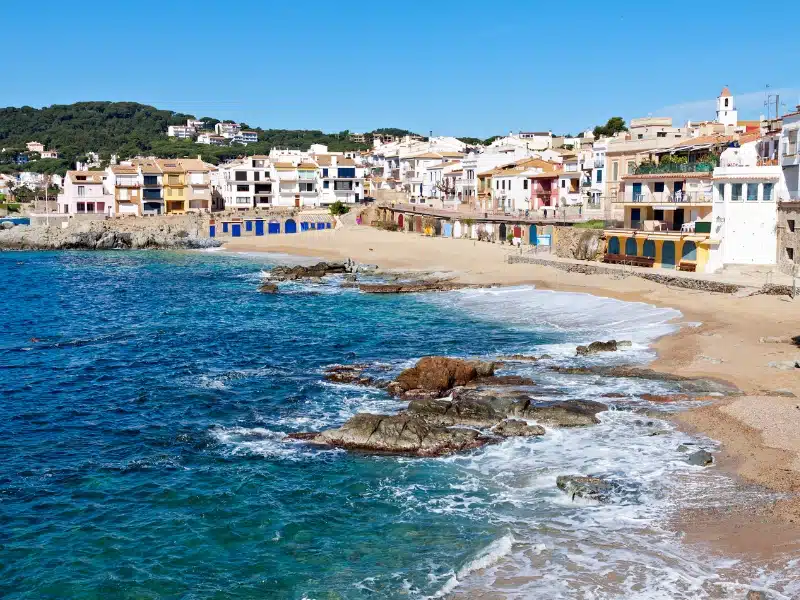
Don’t forget your road trip essentials! Our free road trip checklists help you remember everything, including road trip snacks , podcasts , and road trip songs for the journey!
Basque Country & Pyrenees
San Sebastián – Bilbao – Pamplona – Torla Ordesa – Ainsa – Zaragoza – Barcelona or Madrid
- Distance: 962km
- Drive Time: 12 hours
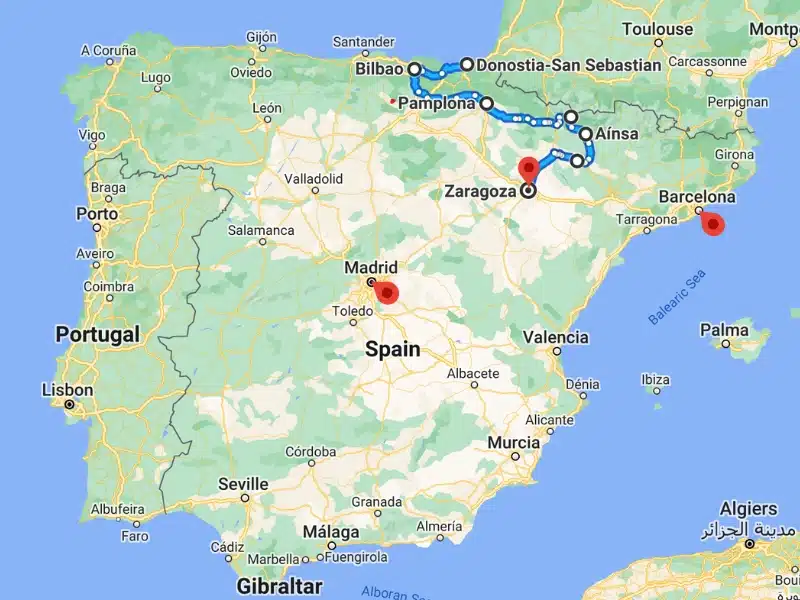
This northern Spain itinerary takes in the cities and coasts of the Basque Country, and the magnificent Pyrenees mountains that extend for more than 400 kilometers between Navarre, Aragon, and Catalonia, and create a natural barrier between the Iberian Peninsula and the rest of continental Europe.
Start in Donastia-San Sebastian, the jewel in the crown of the Basque resorts. A picturesque city with fabulous beaches, San Sebastian is perhaps best known as a foodie town, with some of the finest restaurants in Spain gracing its leafy boulevards and squares of the city center.
Bilbao makes a natural next stop and now rivals Donosti, as it’s known locally, as one of the top coastal cities in Spain. The beautifully curved and sweeping architecture of Museo Guggenheim and the fine Basque cuisine and freshly caught seafood served in its lively restaurants and bars make Bilbao a worthy stop.
In the northern Spain foothills of the Pyrenees, Pamplona is a town with a compact and enticing casco antiguo and a hulk of a citadel to visit. From its powerful fortress city history to the modern-day Fiestas de San Fermin (Running of the Bulls festival), this city is as swashbuckling and red-blooded as they come.
Visit in early July for the festival and nine days of riotous partying and entertainment, but book early as thousands of visitors descend and everything gets booked up at least nine months in advance.
From Pamplona, the mountains are enticingly close. Torla-Ordesa is the nearest village to the breathtaking Ordesa y Monte Perdido National Park where you can explore lush meadows, gushing waterfalls, and incredible gorges formed by glaciers millions of years ago.
The best way to see all this natural beauty is to hike the Circo do Soaso, a Pyrenean cirque that surrounds the vast Ordesa Valley. With sheer walls stretching up the 3,355m peak of Monte Perdido looking down, and over twenty cascades along the tumbling Rio Arazes to accompany your hike, this will undoubtedly be the highlight of your Pyrenees road trip.
Capital of the old kingdom of Sobrarbe, which became part of the kingdom of Aragon in the 11th century, Ainsa is a fantastic example of medieval city design and has the best views back to Monte Perdido from the preserved citadel.
From here, it’s south to Zaragoza, famous for the Baroque Nuestra Señora del Pilar basilica, a pilgrimage site with a shrine to the Virgin Mary and the Mudéjar-style Aljafería Palace, an 11th-century Moorish palacio. Together with La Seo Cathedral, the Mudéjar architecture of Aragon forms a UNESCO World Heritage Site.
And now you have a choice! From Zaragoza, it’s almost equidistant to Madrid or Barcelona, give or take 10km. So, Spain is now your oyster and you can go south for the museums and classical architecture of Madrid, or east for the laid-back vibes of Barcelona.
- Arriving at the Cola de Caballo horsetail waterfall at the far end of the Ordesa Valley, and having lunch under the mist.
- Sample the Basque seafood cuisine, like baked spider crab and clams marinière in the old town of San Sebastian.
- Watch the bulls (from a distance!) get a fair chance at Pamplona’s Fiestas de San Fermin.
San Sebastian ⇒ Zenit Convento San Martin for its central location, stylish decor, and rooftop pool.
Pamplona ⇒ Pamplona Catedral Hotel for its beautiful design, friendly customer service, and very comfy beds.
Zaragoza ⇒ Hotel Sauce for cozy rooms, great location, and exceptional homemade breakfast in their bakery.
RELATED POST: How to Hike the Circo de Soaso and Ordesa Valley
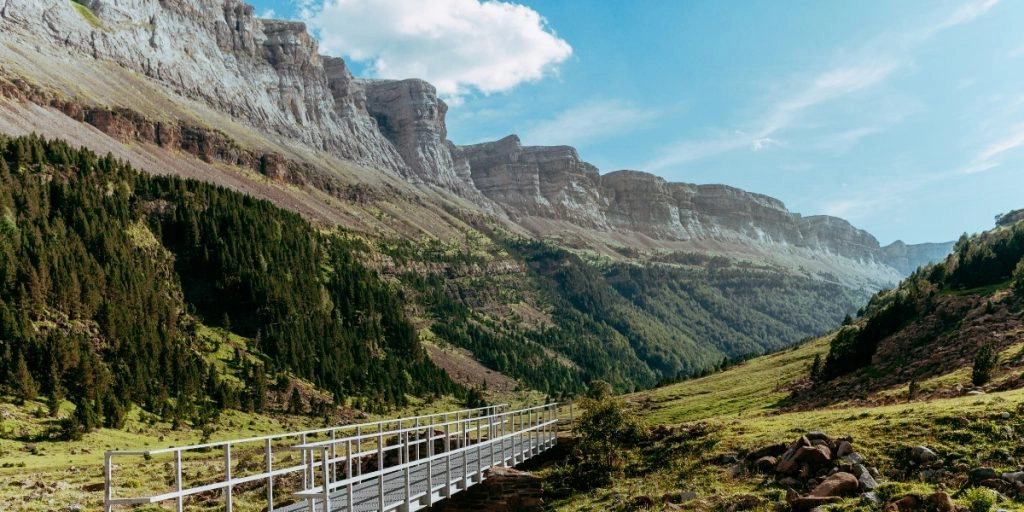
Malaga – Marbella – Ronda – Cadiz – Jerez de la Frontera – Seville – Antequera – Cordoba – Granada – Malaga
- Distance: 1041km
- Duration: 10-14 days
- Drive Time: 13 hours
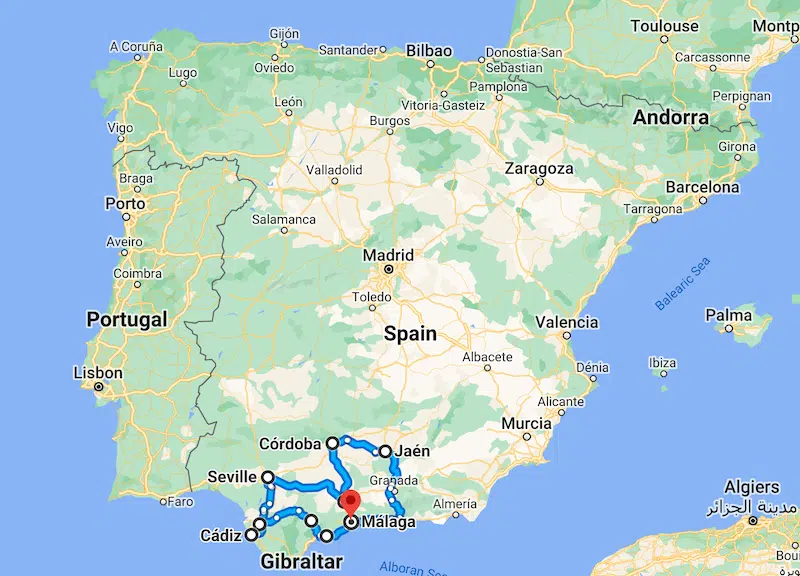
Andalucia in the south of Spain is the quintessential Spanish region and is home to some of the most colorful and vibrant cities in the whole of the country. Heavy with Moorish influence, evident in the fantastic food and historic architecture, the cities of Andalucia are a feast for the senses.
This south Spain road trip starts on the Costa del Sol, in the lively coastal city of Malaga , which comes to life on the seafront. A favorite place for Malaguenos to go for a stroll post siesta , a fiercely protected custom in the south of Spain, the seafront comes alive after 5pm. You’ll find whole families out, enjoying the sunshine and stopping for a beer and tapa along the paseo .
From Malaga, the seaside resort of Marbella beckons, where you can spend a day soaking up the sun on one of the three immaculately kept sandy beaches and enjoying the people-watching before visiting the charming old town. Head for Plaza de los Naranjos at the center of the Casco Antiguo and enjoy a coffee whilst watching the world go by. For lunch, find Taberna Casa Curro Marbella where you’ll enjoy great tapas and fruity Spanish wine.
Up next is beautiful Ronda, surrounded by the dramatic mountains of Sierra de Grazalema and Sierra de las Nieves. The drive from Marbella to Ronda is simply stunning, with white villages on every hillside and spectacular views as the road dips and swoops between lakes, valleys, and peaks.
Known for its Ronda its arched bridge of Puente Nuevo which spans the 120m deep river gorge of El Tajo, the bridge is best seen from the beautiful La Casa del Rey Moro , where you’ll find lush and fragrant gardens and a spectacular view. There’s also a spectacular bullring here, and whatever your views about the divisive sport of bullfighting, you should visit Plaza de Toros.
Just north of Ronda are the Pueblo Blancos of Zahara de la Sierra and Setenil de las Bodegas. Both are worth visiting, and the latter is known for its whitewashed houses built into the surrounding cliffs and that image, the one with the rock covering half the narrow street and its houses.
The faded splendor of the sea city of Cadiz , one of the oldest cities in Europe, will beguile you. Just across the water in the famed sherry triangle is Jerez de la Frontera, the home of sherry since the 14th century. The nearby towns of Sanlúcar de Barrameda and El Puerto de Santa María are the other points of the triangle.
Make sure to stop for a tour of a sherry bodega for a taste of Spain’s most famous alcoholic drink. Whatever you think you know about sherry, think again!
As well as sherry, Jerez is also famous for its flamenco tradition and is one of the best places to watch the steamy and seductive dance whose name literally means ‘hell-raising’!
Next is hot and steamy Seville, one of the most popular places in Andalucia, if not Spain! Seville boasts the Gothic Seville Cathedral, the imposing Giralda Tower, and the stunning Alcazar, all conveniently clustered together in the historic center, and located right next to the narrow streets of the Barrio Santa Cruz, the heart of Seville’s lively tapas culture offering some of the best plates in Andalucia.
Past the ancient dolmens and lover’s rock of Antequera is Cordoba, known for the UNESCO Mezquita mosque cathedral, which will take your breath away when you step inside for the first time. Meander through the nearby Jewish quarter where you’ll find narrow lanes and pretty squares where many of the whitewashed houses are covered in blooms from window boxes providing the perfect images of this gorgeous city.
Next up is one of Spain’s most underrated cities. Well off the beaten path, Jaén is known for its olive oil production, and its medieval fortresses, including Santa Catalina Castle. The Renaissance Jaén Cathedral houses the Holy Veil which is said to have been used to wash Christ’s face.
From Jaén, it’s a beautiful drive south to Granada, in the Sierra Nevada mountains and very possibly Spain’s most romantic city. The Alhambra, the spectacular Moorish palace sits high on a hill overlooking Albaicin, the old town of Granada, and is the jewel in Andalucia’s crown.
Finish this southern Spain road trip by hitting the Costa Tropical and the seaside resorts of Almuñécar, Salobreña, La Herradura, and Nerja.
- Watching live Flamenco in Seville , passionate, sensual, and a true art form.
- The Alhambra Palace is the most exciting and romantic of all of Europe’s ancient palaces.
- The Mezquita in Cordoba is one of the most spectacular mosque cathedrals in the world.
Malaga ⇒ Hotel Molina Lario for its perfect location, buzzy rooftop bar, and incredible cathedral views.
Seville ⇒ Case del Poeta for its perfect Santa Cruz location, live Spanish guitar gigs, and stunning roof terrace views.
Granada ⇒ the Hotel Santa Isabel la Real for cozy rooms, spectacular Alhambra views, and an exceptional cooked breakfast.
RELATED POST: The Perfect Andalucia Road Trip: Itinerary, Map & Tips
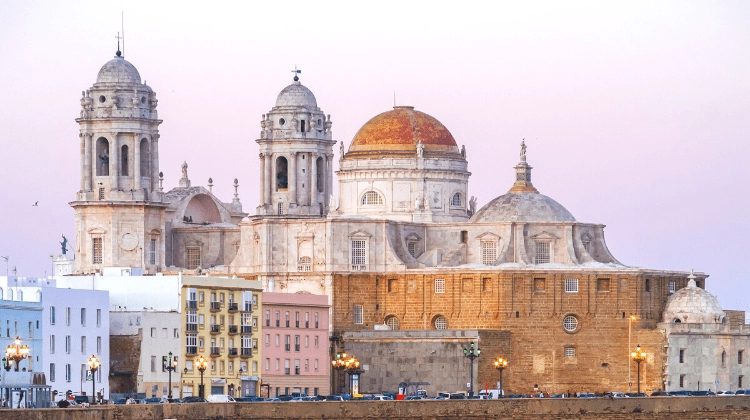
Looking for the best SIM card deals in Europe for your trip? Check out our guide to the best data SIMs in Europe and get the best deal for your trip to Spain.
East Coast Costas
Valencia – denia – xabia – altea – alicante – cartagena – almeria.
- Distance: 553km
- Drive Time: 8 hours
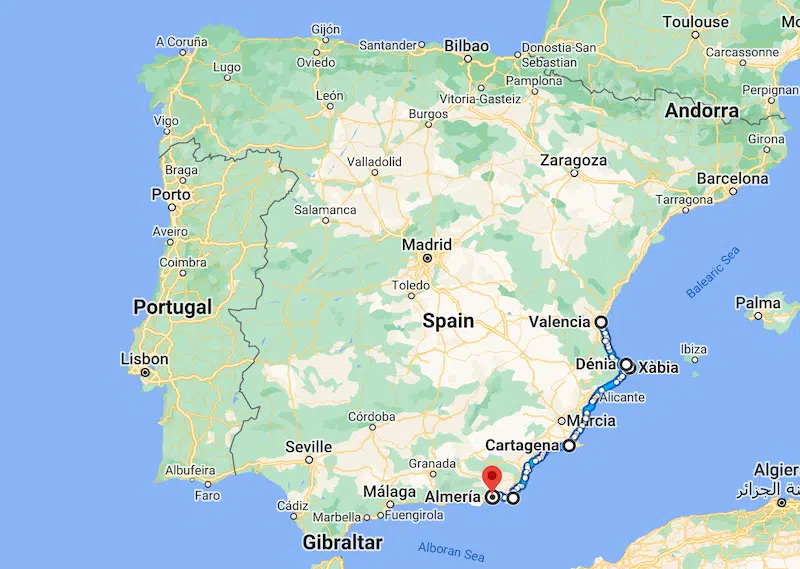
This delightful and easy seven day trip down Spain’s eastern Mediterranean coast bypasses the worst of the high-rise excesses and explores the best of the Spanish Costas, including some you’ve never heard of! Costa de Valencia, Costa Blanca, Costa Calida and Costa de Almeria.
Valencia is a seriously underrated city and is preferred by many Spaniards to Barcelona. The city is much less touristy than Barcelona but has the cultural variety of Madrid and the charm of Seville. Alive with noise and color, the city will surprise and delight you.
Visit Valencia during the fabulous Las Fallas when the city erupts with bonfires, music, and life. Don’t forget to sample a traditional drink of horchata (made from tiger nuts) when you’re in Valencia, it’s not to be missed!
Head south and make for La Albufera, a huge lagoon separated from the sea by a sandbank and surrounded by rice paddy fields, still irrigated by systems installed by the Moors.
An important wetland and the stopping-off point for thousands of migratory birds, the area is also where paella originated, due to the perfect growing conditions for rice. You can take a guided tour through the lagoon on a boat trip, and check out the ‘paella’ villages, including Perel-Lonet, the best place to get a taste of the real thing, not with seafood but with chicken, rabbit, and snails.
Next up is the old port town of Denia, less touristy and ex-pat, and the closest departure point in Spain for the Balearic Islands. From here, you can sail to Ibiza, Formentera, and Palma, to start your Mallorca road trip (if you have a few extra days!).
There’s more to Denia than the port though. Home to a modern marina surrounded by cool bars and an old town lined with fish restaurants and Spanish fusion food, this is a wonderful place for an overnight stop. Check out our favorite, Els Magazinos, for street food Spanish style.
Javea, or Xabia in the local dialect of Valenciano, is a pretty seaside resort close to Cabo de la Nao, a beautiful rocky promontory where you’ll find hidden coves and beaches. Lively in the evenings in summer, you’ll also find a beautiful sandy beach and a pretty old town.
For the best beach in the area, head south by around 5km to Playa la Barraca, a shingle beach with perfect turquoise water and a fantastic seafood restaurant.
Altea is your next stop, a small resort that sits below a historic hilltop village, which has incredible views. The old village is gorgeous with bougainvillea and jasmine in bloom, alongside alleys lined with alfresco dining and interesting boutiques and gift shops.
Bypass built-up Benidorm and head for the very Spanish city of Alicante, with its wide and spacious esplanades and seafront paseo. The renovated old town is a perfect place to stroll and people-watch, especially in the early evenings. You’ll also find good tapas restaurants and bars in this area.
Swing by the pink lake at Torrevieja . Las Salinas Torrevieja is a real sight, with its bubblegum pink water and fascinating history of salt production.
Head south, ignoring the outskirts of Cartagena, and make for the medieval narrow and twisting streets of the old town. The city will surprise you with its eclectic architecture, historic sites, and modern feel.
It’s quite a long drive down this part of the coast but the unspoiled and undeveloped resorts of Aguilas and El Puerto de Mazarron make good stopping points before arriving in the wild and beautiful region of Almeria , one of the driest places in Europe and home to some weird and wonderful landscapes and coastal rock formations, both on dry land and in the surrounding sea.
The Cabo de Gata particularly is a scuba diving hotspot and a kayaker’s and hiker’s paradise, and whales are sometimes spotted along these shores.
- The authentic and vibrant city of Valencia, where there are more Spanish than visitors.
- Exploring the gorgeous Mediterranean beaches of the Cabo de la Nao that are perfect for snorkeling.
- The sheer exuberance of Alicante, with its magnificent beaches and atmospheric old town.
Valencia ⇒ One Shot Mercat 09 for its historic location, rooftop pool, and hip vibe.
Alicante ⇒ Melia Alicante for its stunning views, casual style, and excellent service.
Cartagena ⇒ NH Cartagena for its central location, contemporary style, and welcoming feel.
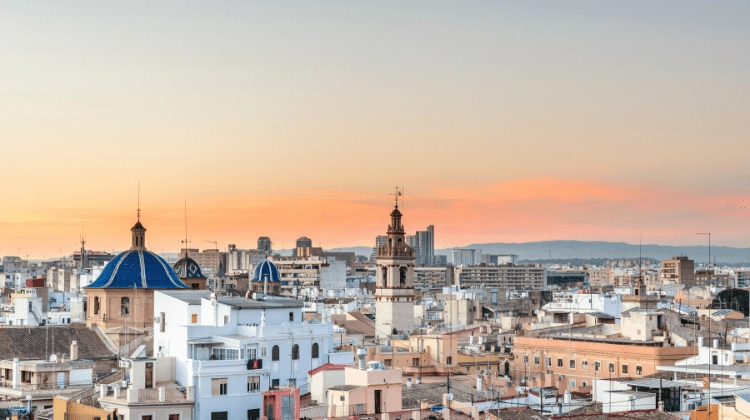
More Spanish Travel Inspiration
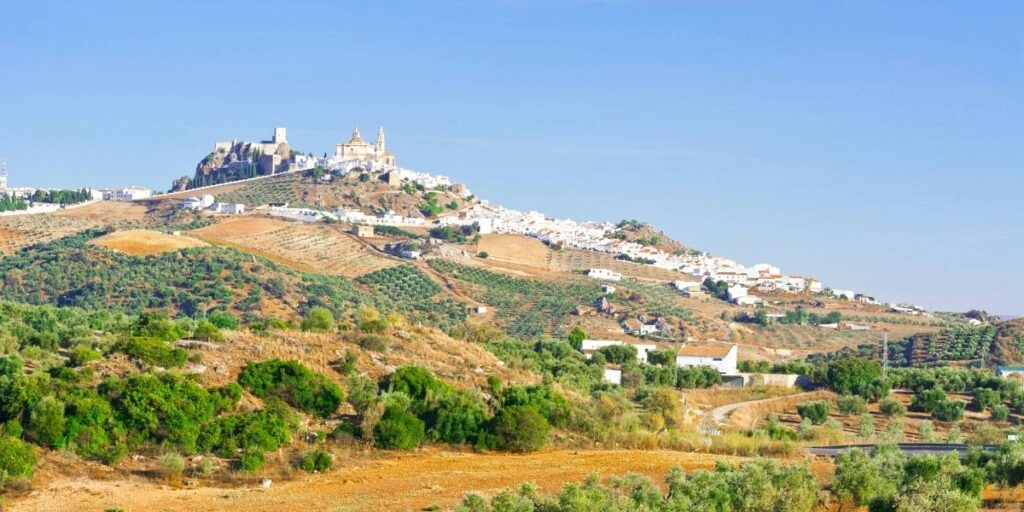
The Perfect Andalucia Road Trip: Itinerary, Map & Tips
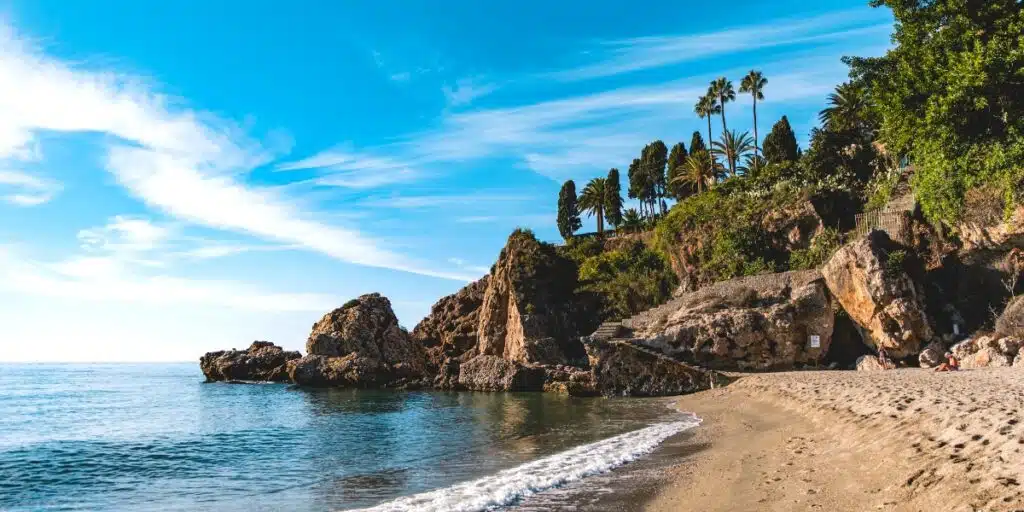
Wintering in Spain: Best Winter Destinations in Spain
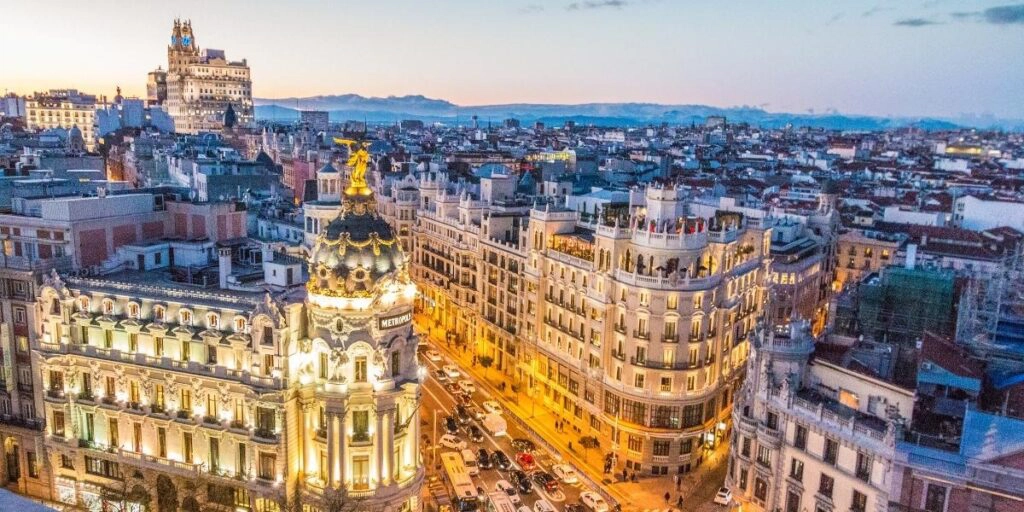
Madrid in One Day – Itinerary, Map, Tips & Guide
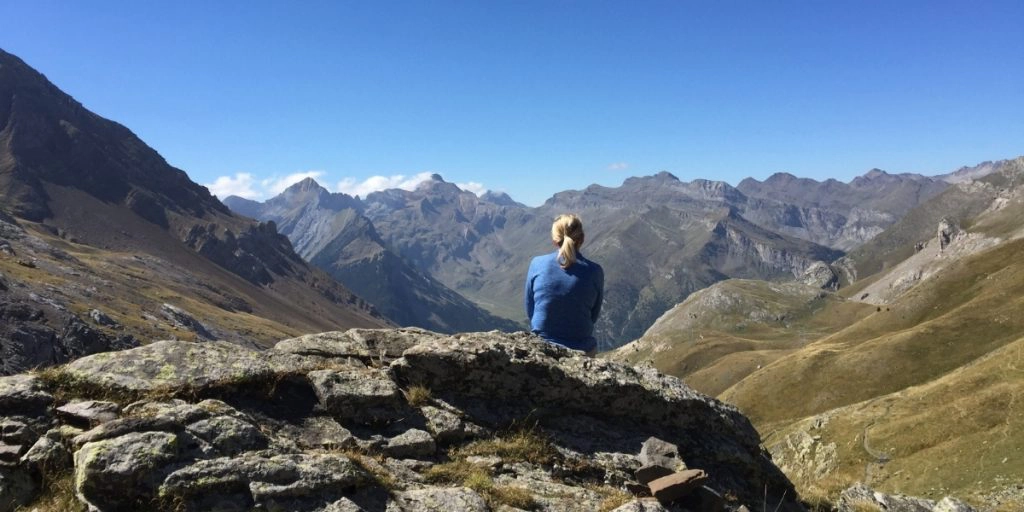
A Seven Day Pyrenees Hiking Tour
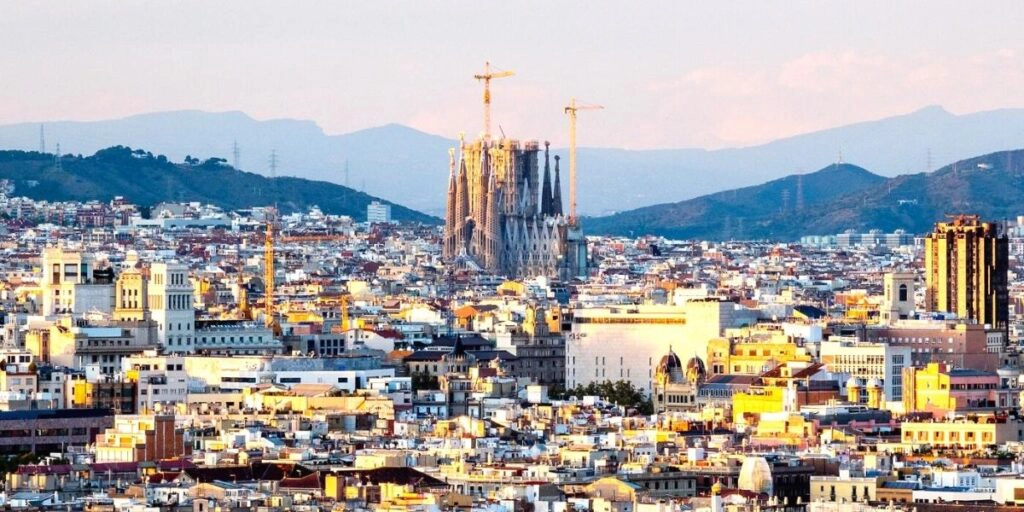
One Day in Barcelona – Itinerary, Map, Tips & Guide
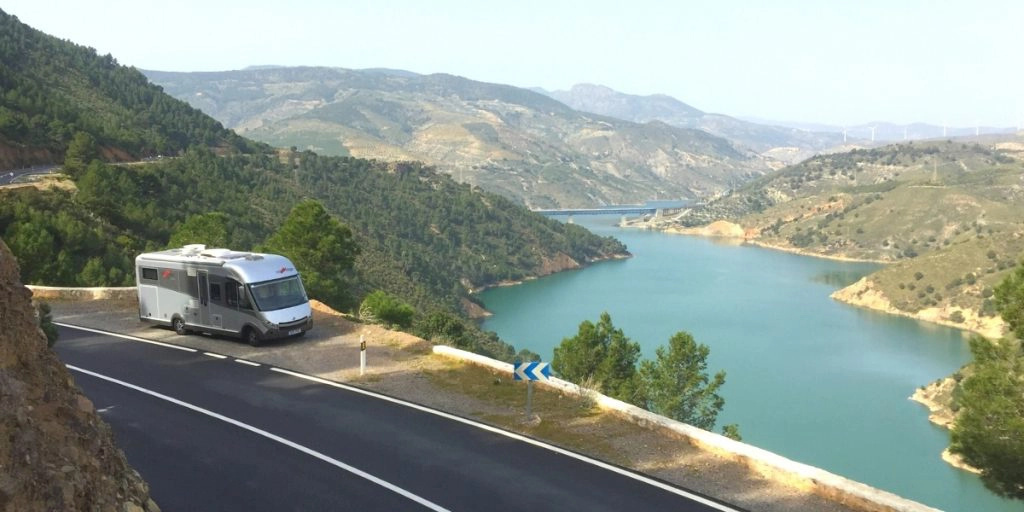
Motorhoming in Spain: Your Complete Guide for 2024
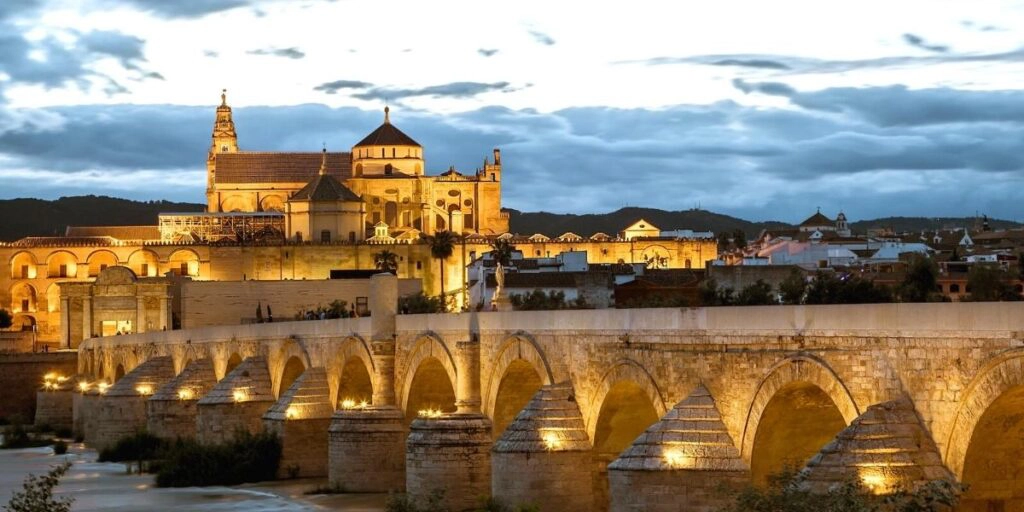
Cordoba in One Day – Itinerary, Map, Tips & Guide
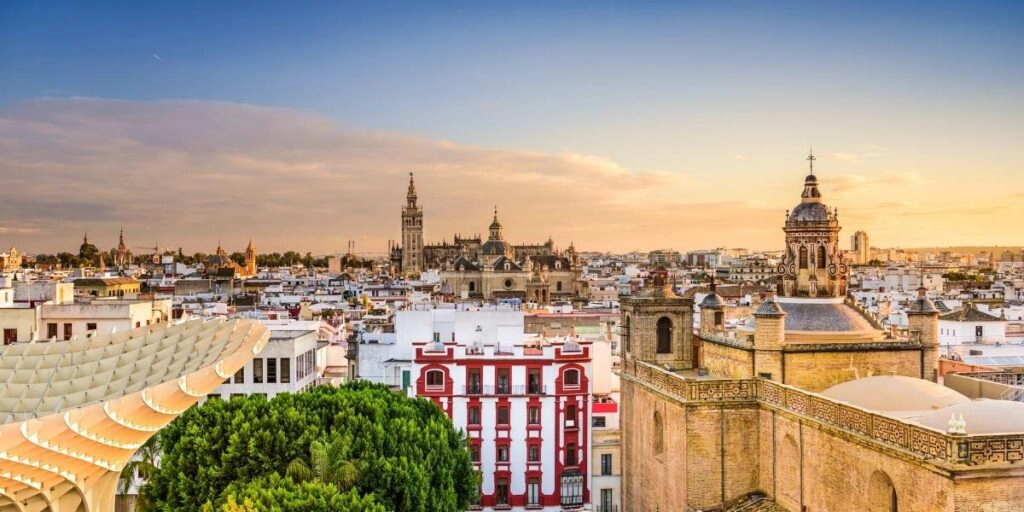
One Day in Seville – Itinerary, Map, Tips & Guide
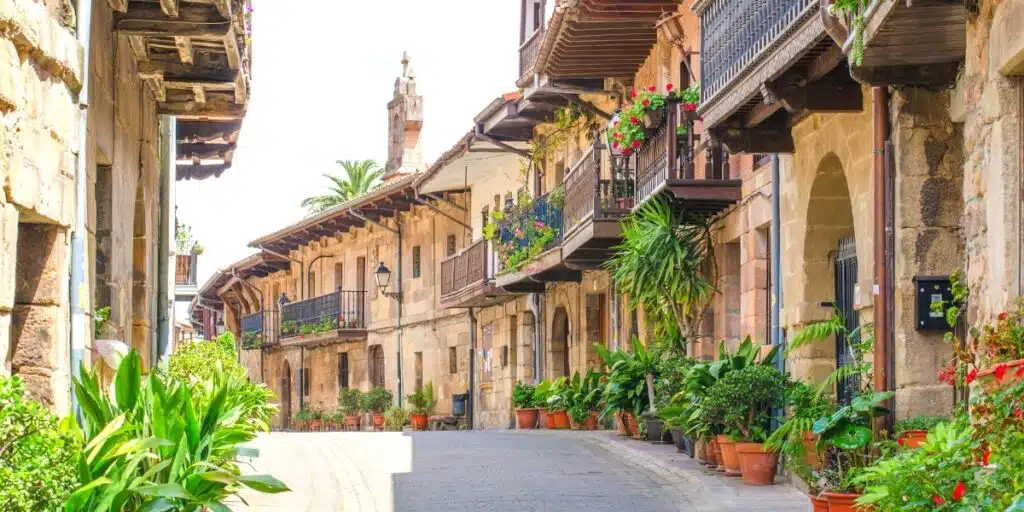
North Spain Road Trip: Itinerary, Route & Tips
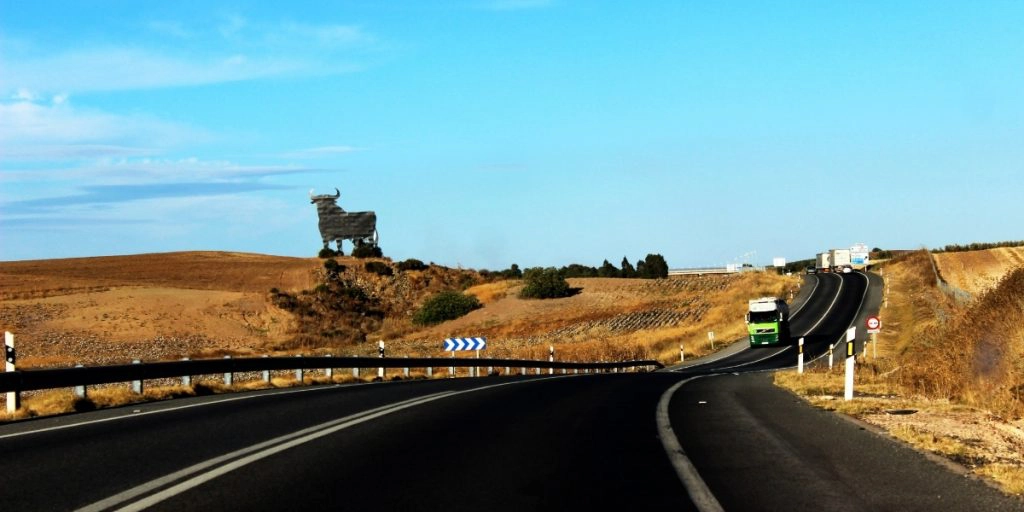
Driving to Spain from UK: Best Routes & Driving Tips
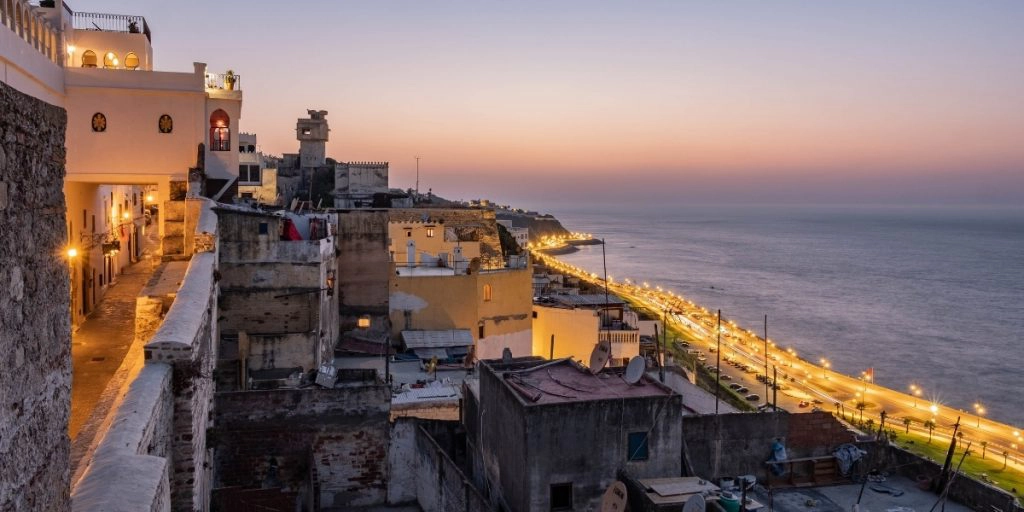
Tarifa to Tangier: Tips & Tricks for a Day Trip to Morocco
Central spain.
Madrid – Toldeo – Cáceres – Ciudad Real – Consuegra – El Toboso – Cuenca – Madrid
- Distance: 1085km
- Duration: 10 days
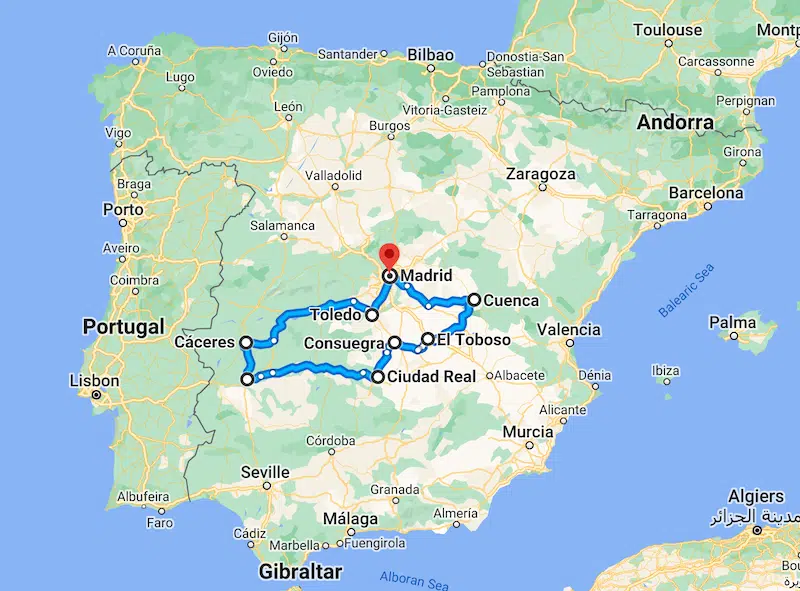
This road trip from Madrid explores the wild and windswept plateau of Castilla-La Mancha and Extremadura, parts of Spain’s interior that are really on the road less traveled. Amongst the hidden gems and architectural surprises expect abandoned villages and huge swathes of, well, nothingness.
For us, the the rolling steppe and vast plains, rich with birdlife and craggy outcrops more than compensate for its remote nature and long hours on the road.
Toledo is up first, and what a start to your road trip! An ancient city set on a hill above the plains, Toldeo is known for the medieval Arab, Jewish, and Christian monuments in its walled old city, giving rise to its name ‘City of the Three Cultures’. There’s also a connection with Hannibal who used extra-hard Toledo steel for his swords in the Punic Wars.
It’s a gorgeous drive through forests and rolling plains to medieval Cáceres, a UNESCO jumble of narrow alleys, castles, palaces, and squares, where it’s easy to while away a few days eating tapas and admiring the olive trees growing in serried ranks across the rolling lands which surround the town.
Ciudad Real is a quick stop to admire the 14th century Puerta de Toledo, one of the city’s original Mudéjar-era gates, and visit the Quixote Museum, dedicated to Miguel de Cervantes’ classic Spanish novel, Don Quixote .
Next up, riding the Cerro Calderico mountain and with the 12th century Castle of La Muela as a backdrop, are the Consuegra windmills, a line of twelve tower mills described in the story of Don Quixote , that are one of the most iconic landmarks in Spain.
Initially built to grind grain, the mills were modeled on the Dutch windmills of the 16th and 17th centuries. These tower mills were passed down through the generations until being retired in the 1980s when twelve of the original thirteen mills were restored and opened as a tourist attraction.
El Toboso is your next stop. Famous for being the hometown of the fictitious Dulcinea, lover of Don Quixote, El Toboso has a great many pretty corners and traditional buildings of masonry and whitewashed walls. Don’t miss the House of Dulcinea, a traditional La Mancha structure from the 16th century, which has been beautifully renovated.
Your final stop before returning to Madrid is Cuenca. Founded by Moors, Cuenca is perched on a limestone spur above the Júcar and Huécar rivers and has a historic Walled Town with steep cobbled streets and medieval castle ruins. Cueunce is most famous for its well-preserved casas colgadas , or hanging houses which are dramatically cantilevered over the Huécar gorge as they cling to the cliffside.
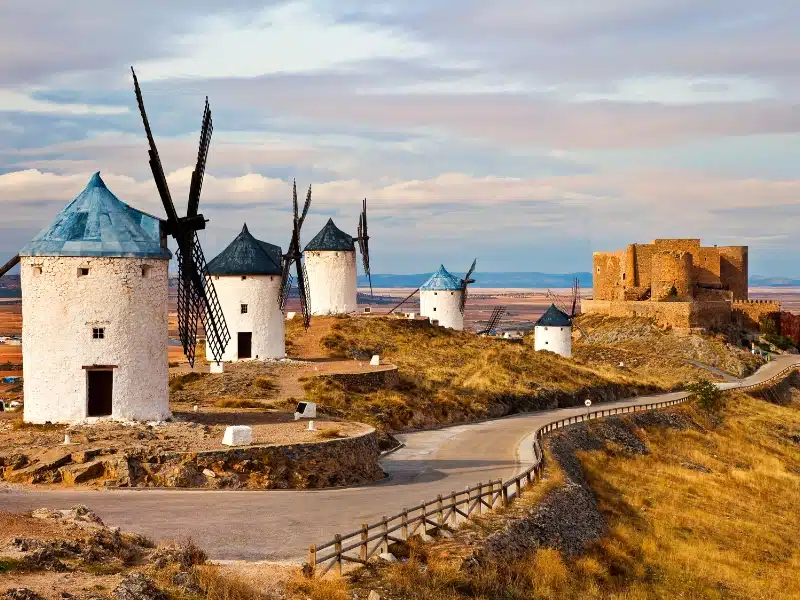
Green Spain
San sebastian – bilbao – comillas – oviedo – a coruna – santiago de compostela.
- Distance: 838km
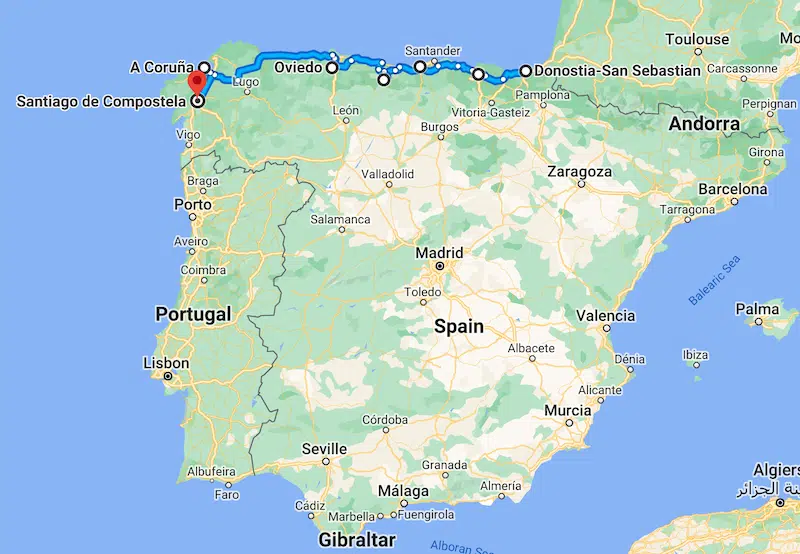
This north of Spain road trip will take you through the beautiful and lush, aptly named Green Spain, hugging the north coast along the Atlantic Ocean.
From San Sebastian through Cantabria, Asturias, and Galicia, you’ll see some of the most picturesque landscapes in Spain, enjoy amazing food, and crisscross the famous Camino de Santiago .
Start in gorgeous Donastia-San Sebastian, the most well-known of the Basque resorts. A picturesque seaside resort with fabulous sandy beaches, San Sebastian is known as a foodie town, and deservedly so. There is a great collection of fine restaurants and authentic pintxo bars here, serving world-class food produced from local ingredients.
Next is Bilbao, home of the incredible Museo Guggenheim and backed by beautiful green mountains. The museum itself is a work of art, with beautifully curved and sweeping architecture.
Bilbao now rivals San Sebastian as one of the top coastal cities in Spain , with its vibrant restaurant and bar scene, and offers fine Basque cuisine and freshly caught seafood in its atmospheric restaurants and bars.
Head west to the stunning Santillana del Mar, known as the town of the three lies. Not holy (santi), not flat (llana) nor by the sea (del mar) . This medieval town is well-preserved and worth a meander before you make your way to Comillas, further along, the coast.
Traditionally low-rise, you’ll find a lovely beach, a tiny fishing port, and a charming cobbled casco antiguo here. If you have a few extra days, head into the Picos de Europa National Park for excellent hiking in the beautiful peaks of this small, but perfectly formed mountain range.
Oviedo is the next stop and the starting point of the lesser-known Camino Primitivo (the oldest Camino). This compact and elegant city is another foodie delight, with a vibrant gastronomic scene.
Home to Spanish cider, you’ll find traditional sidrerías along Calle Gascona, known as Cider Boulevard. Visit in September for Fiestas de San Mateo, a live theatre and music spectacular. If you go in October, you’ll be in the middle of the apple harvest in Asturias, a region in which you could easily spend several weeks .
A Coruña is up next, passing by the spectacular Playa de Las Catedrales en route. The ‘beach of the cathedrals’ is one of Spain’s top natural landmarks and is best visited at low tide , when its possible to walk on the beach and get up close to the fabulous rock formations.
A Coruna is a dynamic city that is home to a busy port, a relaxed beachfront resort, and an atmospheric old town. The seafood here is some of the freshest and most delicious in Spain, with seafood tapas being a specialty. Take a walk out to the Tower of Hercules, a lighthouse that looks nothing like a lighthouse!
Finally, you’ll reach Santiago de Compostela, the end point of the famous Camino de Santiago, and your last stop. As you enter the city, you’ll see pilgrims covering the final few miles and proudly displaying their Vieira, the scallop shell badge that you’ll have seen along your route .
The UNESCO World Heritage Site of Santiago de Compostela is undoubtedly one of the most beautiful cities in Spain, full of labyrinthine alleys, dramatic squares, and historic religious buildings.
There are too many must-sees to list, but consider a walking tour with a local guide if you don’t have much time, you’ll get to see the most important things and learn about the history of the city too.
It’s a hop and a skip from here into tiny Portugal, via fascinating Vigo. Portugal packs a powerful punch with incredible coastlines and vibrant cities and a Portuguese road trip makes the perfect complement to your Spanish road trip.
- Visit the highly recommended Guggenhei m Museum Bilbao and be awe-struck by both architecture and art.
- Explore the cathedral in Santiago de Compostela and make the climb to Las Cubiertas , the cathedral roof, for incredible views of the city and the landscape beyond.
- Walk along the boardwalks at Playa de Las Catedrales and marvel at the extraordinary natural arches and racing sea.
Bilbao ⇒ Hotel Tayko for its minimalist style, hip location, and excellent restaurant.
Oviedo ⇒ Barcelo Oviedo Cervantes for its laid-back vibe, modern decor, and smooth service.
Santiago de Compostela ⇒ Parador De Santiago de Compostela for its history, traditional decor, and HUGE breakfast buffet.
RELATED POST: North Spain Road Trip: Itinerary, Route & Tips
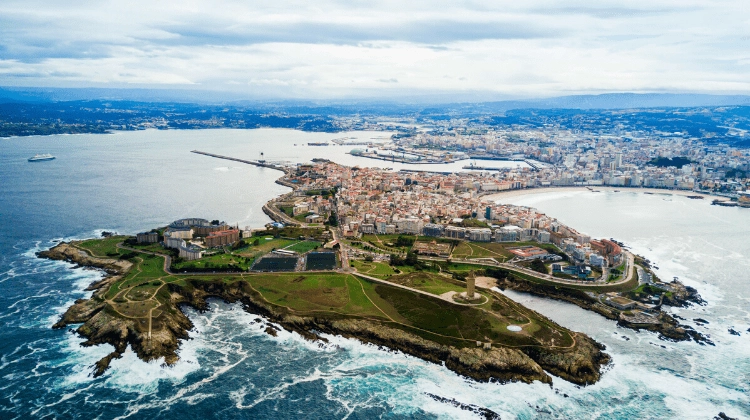
Madrid – Salamanca – Santiago de Compostela – San Sebastián – Barcelona – Valencia – Alicante – Almeria – Granada – Malaga – Cordoba – Seville – Cáceres – Toledo – Madrid
- Distance: 3791km
- Duration: 3-4 weeks
- Drive Time: 38 hours
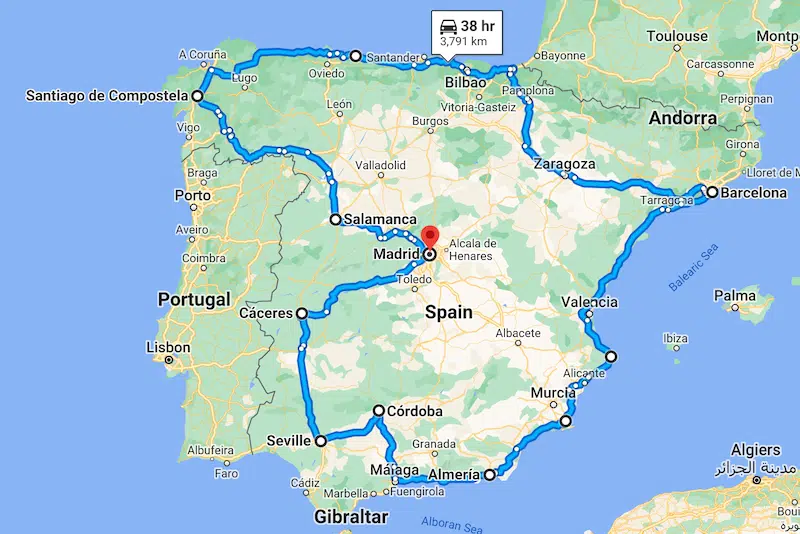
If our seven great driving tours of Spain have whet your appetite but you have a bit more time and want to experience all that Spain has to offer, why not try this combination of all our Spain road trips together?
Stop in the major cities on this eclectic itinerary, and take day trips as you go to see the main attractions along the route. Enjoy local gastronomy, learn about regional customs, and marvel at the variety that Spain has to offer.
From coast to mountains and taking in all the major cities and must-see places, this ultimate Spain road trip will give you the drive of your life and show you the best of Spain in all its wonderful guises.
Want to plan your own road tri p? Get our step-by-step road trip planning guide to help you organize the perfect trip., or check out our favorite road trips in Europe for inspiration.
Planning Your Spain Road Trip
Spain road trip resources.
Here are the websites and services we personally use and recommend for traveling in Spain.
- Search for affordable flights to Spain with Skyscanner
- Search for availability and book hotels and accommodation in Spain with Booking.com
- Find and book the best campsites in Spain with Eurocampings
- Book the cheapest and most reliable hire cars in Spain with Rentalcars.com
- Find and hire your perfect motorhome or campervan with Motorhome Republic
- Get highly rated, reliable, and trustworthy travel insurance with True Traveller
- Check if you need a visa and arrange your documents with Visagov
Best Time to Visit Spain
Spain has varied weather and different climate systems, depending on where you are in the country.
The weather of Spain in spring is just perfect for those who want to enjoy the beautiful climate and it’s no wonder that this is also considered to be one of the peak seasons for travelers in Spain.
From March to May, the weather is pleasantly warm and you definitely won’t need your winter woolies! You may need a long-sleeve top for the evenings, and if you’re visiting the north of Spain, it’s a good idea to pack a cozy fleece or jumper and a waterproof.
A visit in spring also offers the opportunity to experience Easter or Semana Santa . Catholics in Spain celebrate Holy Week through traditions that commemorate the crucifixion and resurrection of Jesus and each day has its special traditions, like processions on the streets and bringing olive branches to church. It really is a spectacle, and best seen in Seville or Granada.
Summers in Spain can be punishingly hot, especially in the south, and there will be a greater influx of European tourists heading to the popular beach resorts and historic cities, although most Spaniards will stay at home during these months.
Lower temperatures in the green north make it a great option during the summer, but be aware that prices for flights, accommodation, car hire, and activities increase everywhere.
Similar to spring, fall sees milder temperatures and fewer visitors, making it a good option for a post-summer break. Spain turns the most beautiful shades of russet and yellow during fall and hotels and other accommodation are reasonably priced at this time.
Winter temperatures are where the extremes really show. Northern Spain may see snow and Madrid in winter can be super cold, just as Malaga is one of the hottest winter destinations in Europe with the sea warm enough to swim in!
This is also a good time for budget travelers to plan Spain trips as prices tumble and there are real bargains to be had. Avoid the north and Pyrenees though, which regularly see snow in winter.
RELATED POST: Autumn in Europe: 23 Stunning Destinations for Fall
Fiestas in Spain
Right across Spain, from the largest cities to the smallest villages, fiestas or parties, are an important annual marker and a great excuse to celebrate life.
Usually held to mark a religious day, these riotous parties are one of the greatest pleasures of traveling in Spain.
The streets are adorned with decorations, street food is prepared, wine flows, and live music is played as people come together. Everyone is welcome; to visit Spain and not join a fiesta is to miss the ethos and spirit of this country entirely.
You can find a fiesta calendar here to help you plan your trip and coincide your visit with the best of them.
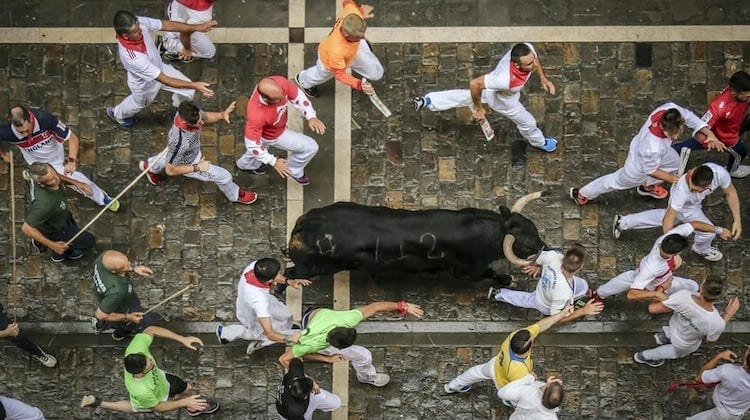
Driving in Spain
Car travel in Spain is easy, with a good network of Autovias (A) and Autopistas (AP). The latter were toll roads until 2020 when many (but not all) became toll-free.
Fuel and car hire are some of the cheapest in Europe making Spain a really cost-effective place to take a road trip.
Touring Spain by car in rural and mountainous areas can take longer than you think although the standard of non-motorway roads in rural areas is generally good. Allow time to get off the beaten track and experience the real Spain as you tour this fabulous country.
Whether you’re driving your own vehicle to Spain or you’re in a rental car, follow our driving in Spain tips;
- You must have at least three months remaining on your passport (issued in the past ten years) at your intended date of departure from Spain.
- You must have at least 3rd party insurance for your vehicle when you roadtrip Spain.
- Citizens of non-EU third countries may require an IDP, you can check here .
- You must carry two warning triangles for the front and rear. These warning triangles are now being phased out and from 1st July 2021, a new law requires that a V16 flashing emergency light is used, although both means of advising other traffic will be legal until the end of 2024.
- You must also carry a reflective jacket (for the driver and all passengers) a spare wheel and the tools to change a wheel or a tire repair kit.
- If you wear glasses you must also carry a spare pair in the vehicle.
- UK cars will need headlight beam converters to be fitted (unless they adjust automatically).
- The use of winter tires in Spain is regional. Look out for traffic signs indicating that winter tires or snow chains are compulsory where you are.
- Anything with a screen (television, video, DVD, etc.) that could distract you when driving should be positioned where you can’t see it. This doesn’t apply to a sat nav but you must not touch or program your sat nav unless parked in a safe place.
- Using radar detection equipment is prohibited under Spanish law and new regulations from January 2021 mean that it will also be illegal to be in possession of such equipment .
- On roads with single carriageways, the speed limit established may not be exceeded by more than 20km/h when overtaking.
- Free parking is almost impossible to find in Spanish cities. A better way is to book a hotel or accommodation with its own parking.
Are you looking for more incredible road trips? Check out these top posts…
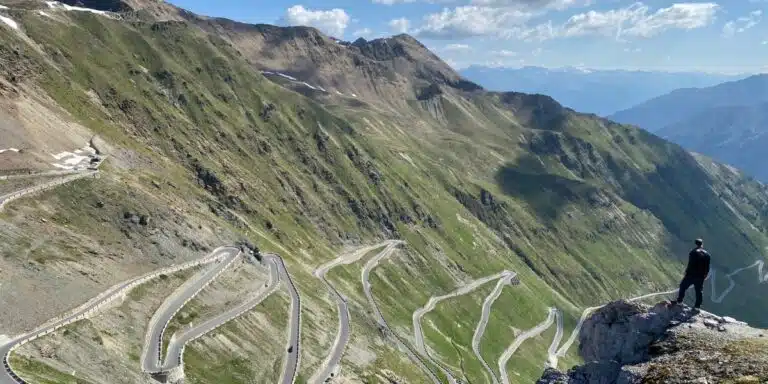
Stelvio Pass: The Best Mountain Road in Italy?
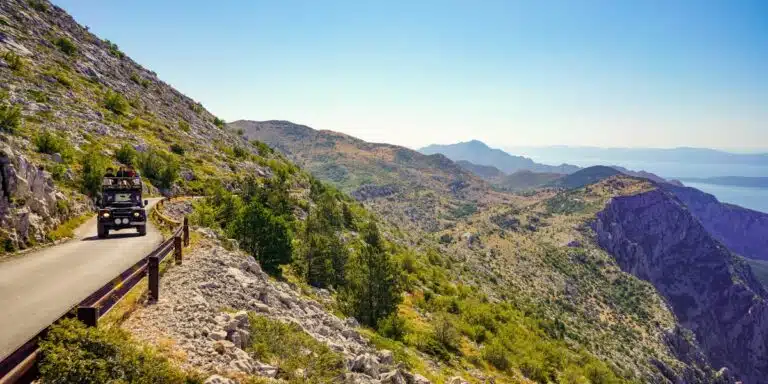
Croatia Road Trips: Five Incredible Routes
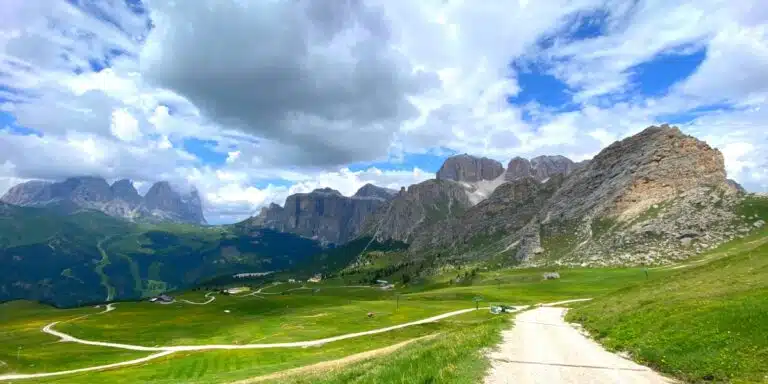
Dolomites Road Trip: Explore the Best of Northern Italy
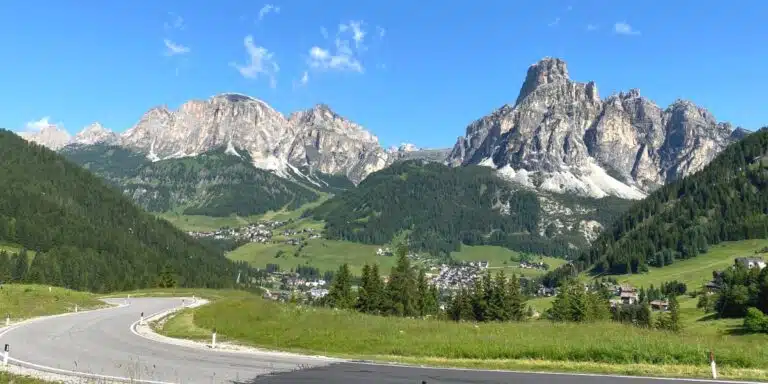
Great Dolomites Road: Absolutely Everything You Need to Know!
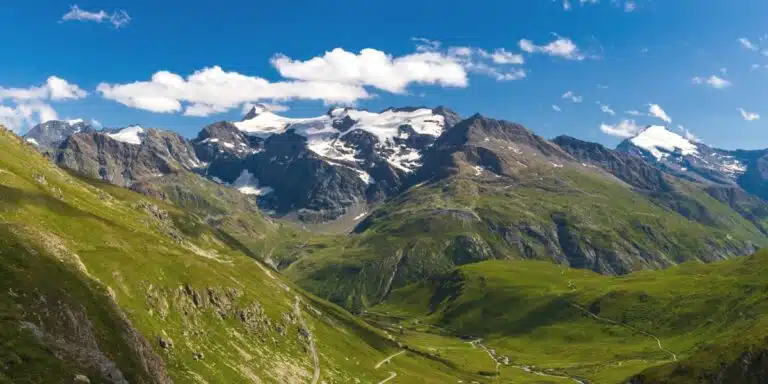
Route des Grandes Alpes: An Epic French Road Trip
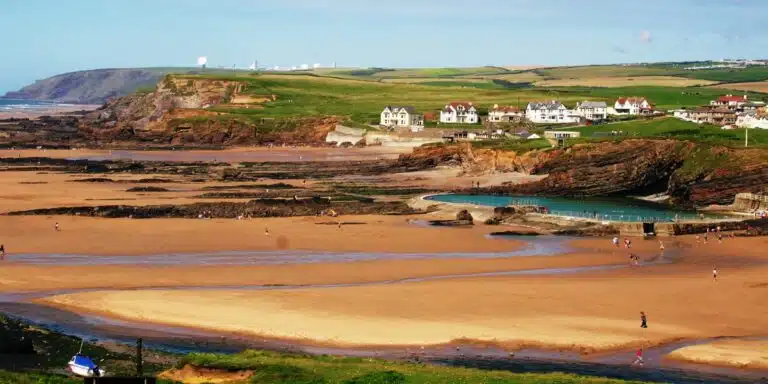
Atlantic Highway: An Epic Devon & Cornwall Road Trip
Love it pin it.
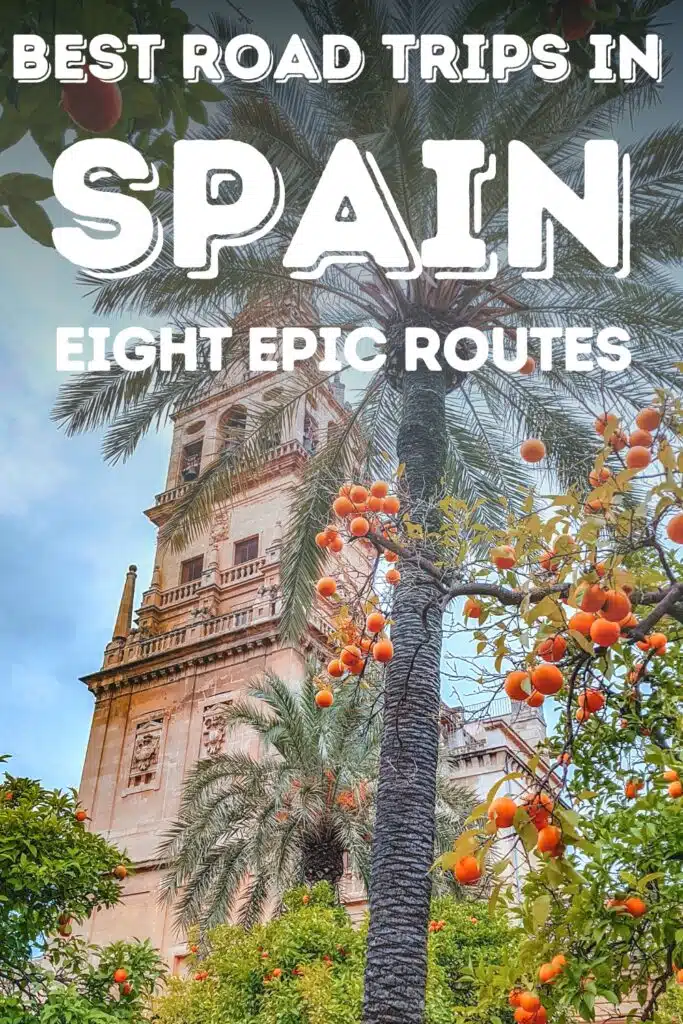

The Best Road Trips in Spain and Their Self-Drive Itineraries
March 11, 2021

From rocky volcanic coasts to medieval city charm, driving in Spain can be an absolute joy. After years on the road as a travel writer and resident, I bring you the best road trips in Spain, plus the ultimate Spanish road trip itinerary. Bucket lists at the ready? Let’s go! Updated 2021.
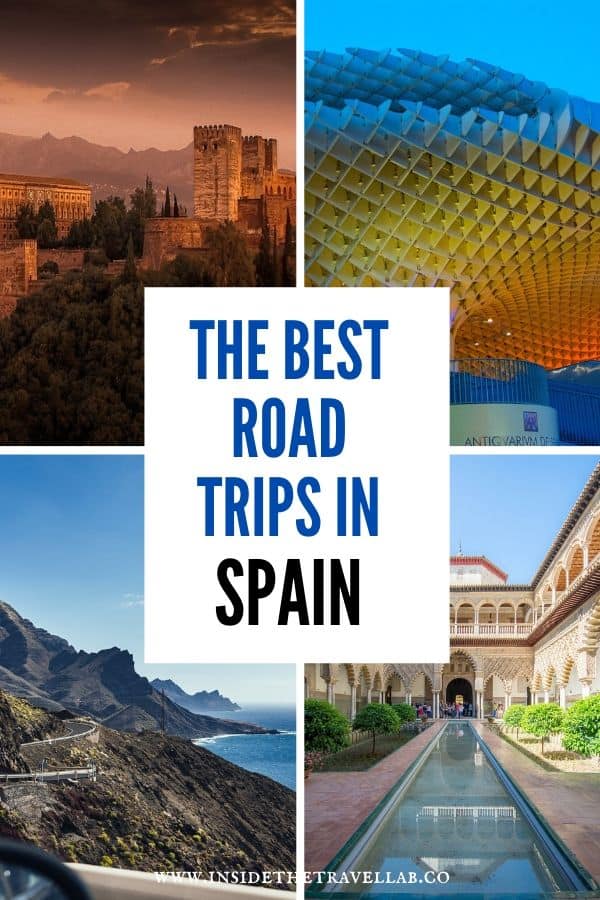
Table of Contents
THE BEST ROAD TRIPS IN SPAIN
If walking is one of the best ways to see a city, then driving is one of the best ways to see a country. Driving in Spain has brought me deep, deep joy, rising through the red dust of Andalusia and plunging through the deep green of Galicia.
You can find the separate road trip itineraries through Spain dotted throughout the article, but this article focuses on the best road trips in Spain.
- Download your free road trip essentials list and road trip packing list.
- Download the road trip planner and toolkit here.
Recommended
I love sharing the best travel resources I can find.
- I never book a flight without looking on Skyscanner first
- My favourite one stop shop for airport transfers, food tours & excursions is Get Your Guide
- Out of the big accommodation machines, I use Expedia and Booking.com the most
- I’ve hand-picked useful travel gear and tools for you in my Amazon shop . Never leave home without a travel adapter or collapsible water bottle . I’d also recommend these soft ear plugs and a sleep mask .
- Access all our planners and budget spreadsheets in the Travel Toolbox ©
- Plan the perfect road trip with our Road Trip Planner & Toolkit ©
- Use these packing cubes to make life so much easier on the road.
- Save on mobile phone roaming charges with an eSIM from Airalo .
TRAVEL SPAIN BY CAR
We start with the ultimate Spain road trip itinerary, taking in the mainland for first time visitors. But don’t forget Spain’s islands, not to mention delving deeper into the regions to find a richer, more authentic experience when you have more time.
Whether you call it fly-drive, self drive or want someone else to help you travel Spain by car, this is the collection of the best road trips in Spain.
Happy planning!
The Ultimate Spain Road Trip Itinerary
If all you have is two weeks, then this is the best Spain road trip itinerary for you. This two week self-drive Spain itinerary brings you the highlights of the country at a reasonable, but not relaxed, pace.
However, I’d always advise that you take is slow if you can. It’s far more enjoyable to spend more time out of the car than in. With that in mind, check out some of the other regional road trip ideas below.
Of all the places in the world, Spain is disinclined to rush. People here like to take their time and savour the joys of everyday life. Racing to fit your busy schedule does not usually rank highly in that regard.
The Ultimate Spain Road Trip Itinerary At a Glance
- Day 1: Arrive Barcelona
- Day 2: Barcelona
- Day 3: Girona and the Pyrenees
- Day 4: Valencia
- Day 5: Valencia to Madrid
- Day 6: Madrid
- Day 7: Madrid to Toledo
- Day 8: Toledo to Granada
- Day 9: Granada and the Alhambra
- Day 10: Alpujarras Mountains
- Day 11: Seville via Cordoba
- Day 12: Seville
- Day 13: Cadiz via Doñana National Park
- Day 14: Malaga to fly home
Historical city centres in Spain were designed for pedestrians and, at a stretch, horses. They were not designed for cars! Be careful when following SatNav instructions into steep, old towns. You can find yourself unable to make some tight turns and then somehow need to reverse backwards down a narrow road. Stick to the main roads in town!
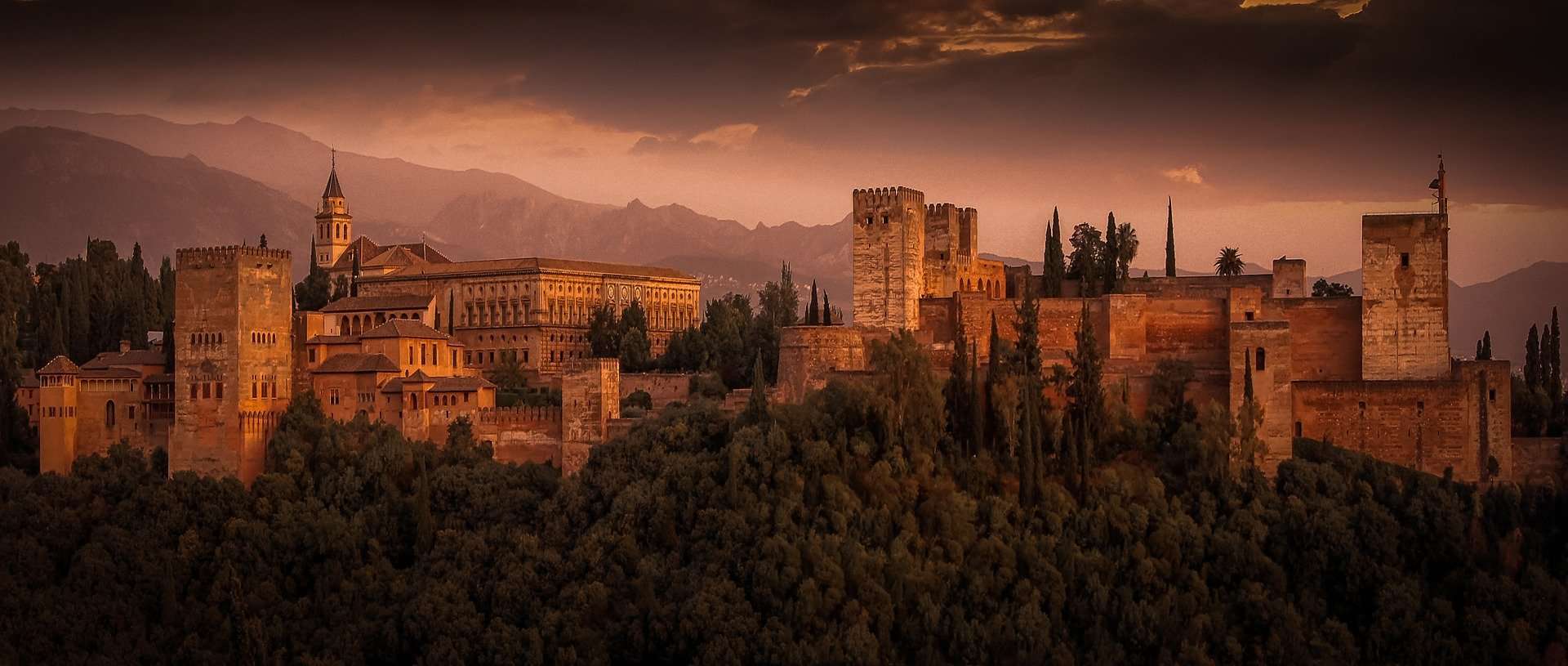
Southern Spain Road Trip Through Andalusia
A road trip through Andalusia, Spain’s biggest region, unsurprisingly covers a lot of ground. This passionate place is the home of flamenco, jamon and sherry, as well as staggering, world-renowned monuments.
You can easily fill two weeks with UNESCO World Heritage Sites like the Alhambra in Granada, the Real Alcazar in Seville and the unbeatable mosque turned cathedral in Cordoba.
But a self-drive road trip through Spain allows you to visit off the radar places and explore local traditions like joining the olive oil harvest in the mountains. From the beaches to the snowy peaks of the Sierra Nevada, driving through Andalusia really is one of the best road trips in Spain.
Andalusia Road Trip Itinerary At a Glance
- Day 1: Arrive Malaga.
- Day 2: Drive to Cadiz
- Day 3: Cadiz to Seville via Doñana National Park
- Day 4: Seville
- Day 5: Seville to Granada via Cordoba
- Day 6: Granada & Alpujarras Mountains
- Day 7: Back to Malaga to fly home. Find the complete southern Spain road trip itinerary here.
- Malaga is the biggest international airport but you can also fly into Seville and Granada with relative ease.
How about the Madrid to Seville drive?
With so many international flights arriving in Madrid, you may be wondering whether or not you should drive from Madrid to Seville or take the train instead.
A Madrid-Seville Road Trip can pass through many off the beaten path destinations, like Zafra and Merida, but in my opinion, it’s not one of Spain’s best road trips.
If you are short on time, I’d highly recommend taking the extremely fast and efficient Madrid-Seville train and then picking up your rental car in Seville to tour Andalusia.
It’s also possible to drive from Madrid to Granada by car, swerving up and down the Alpujarras Mountains, but again, I’d suggest picking up your wheels in Andalusia instead.
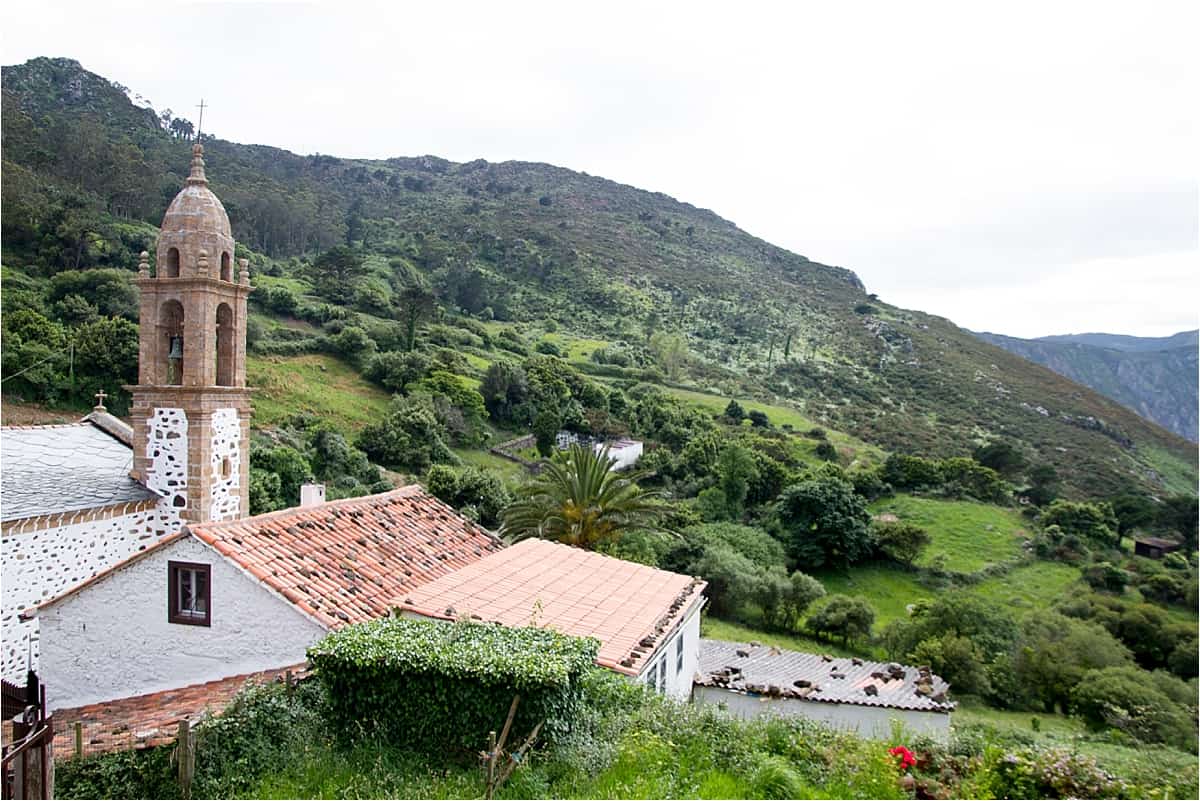
The Sanctuary of Dismembered Wax Body Parts
Northern Spain Road Trip Itinerary
Prepare to be surprised when you find out what makes this one of the best road trips in Spain.
The northern area of Spain swaps dry plains for rocky coves, and bull rings for lighthouses and salt marshes amid the green. Famed for its seafood and as the finishing point for the Santiago de Compostela pilgrimage route, this northern Spain road trip itinerary will show you a different side of the country.
- Want more detail? Explore this Galicia road trip itinerary.
Northern Spain Road Trip Itinerary At a Glance
- Day 1: Arrive San Sebastian
- Day 2: San Sebastian to Bilbao
- Day 3: Bilbao to Aviles
- Day 4: Aviles to A Coruña
- Day 5: A Coruña to Santiago de Compostela
- Day 6: Santiago de Compostela to Vigo
- Day 7: Back to San Sebastian to fly home
Recommended reading: Road Trip Galicia, Spain; The Undiscovered Northern Coast
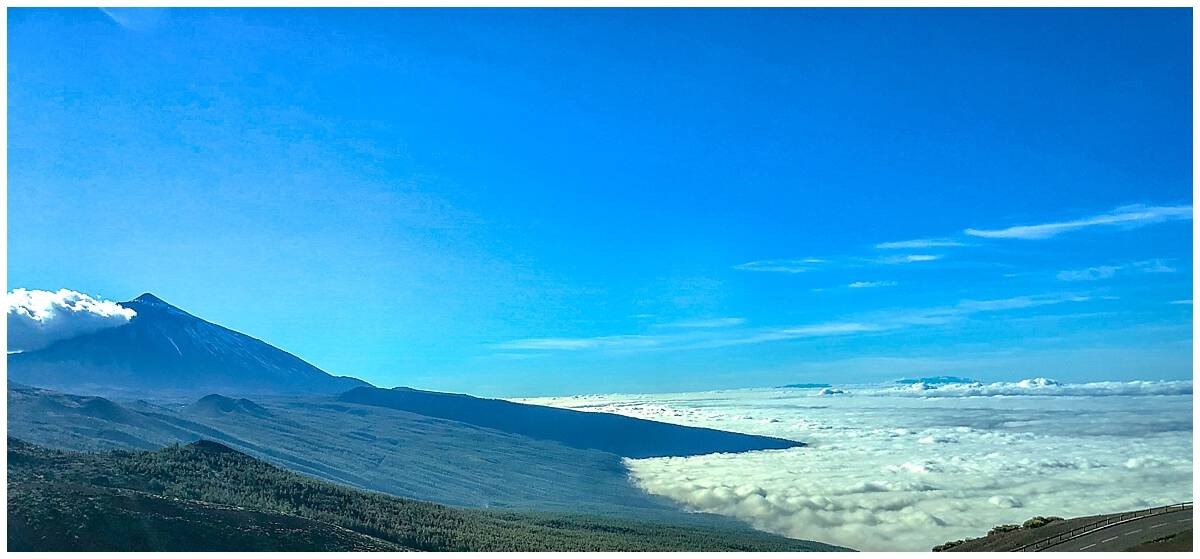
View above the clouds on El Teide in Tenerife
Road Trip Through Tenerife (Canary Islands)
As the largest Canary Island off the northwest coast of Africa, Tenerife is famous for its fly and flop beach holidays. But there are so many unusual things to do in Tenerife , from UNESCO World Heritage cities like Laguna to primitive biosphere reserves in Anaga. It’s a hiking paradise and if tight turns and steep roads don’t phase you, a great wild landscape awaits.
Driving through Spain takes on new and heady heights when you’re bounding over black volcanic stones and watching the clouds appear beneath you. This is one of the best road trips in Spain because it is also one of the most beautiful.
It’s also easy to combine with staying in one place and organising a series of day trips around the island. So if packing and unpacking on a road trip becomes a chore for you, try this instead.
Road Trip Through Tenerife at a Glance
- Day 1: Arrive and stay in UNESCO World Heritage La Laguna
- Day 2: Drive El Teide Volcano
- Day 3: Los Gigantes for a whale watching excursion
- Day 4: Hiking in Anaga National Park
- Day 5: Orotava, Icod de los Vinos and Garachico
- Day 6: Pyramids of Guimar
- Day 7: Explore La Laguna and fly home

Casa Mila: worth it on any Barcelona itinerary
Road Trip Through Catalonia (Catalunya)
Barcelona is the most famous part of Catalunya but to see more of the Catalan character, get behind the wheel and enjoy one of the best road trips in Spain.
Travel by car in Spain to discover the curious city of Girona, the sandy coast of Costa Brava and the smoky peaks of the Pyrenees.
Costa Brava offers volcanoes, sleepy coves and some of the best restaurants in the world. That’s not a boast. That’s actually a validated claim (read more about that here. )
You’ll also find flamboyant artwork from local household name Salvador Dalí, a great spot for a hot air balloon ride and a renewed appreciation for the difference between Catalan and Castilian Spanish.
- How to spend three days in Barcelona, an inside guide
- Unusual things to do in Barcelona
Road Trip from Barcelona At a Glance
- Day 3: Barcelona to Girona
- Day 4: Figueres and Cadaques
- Day 5: Garrotxa Natural Park
- Day 6: Tarragona
- Day 7: Return Barcelona to fly home
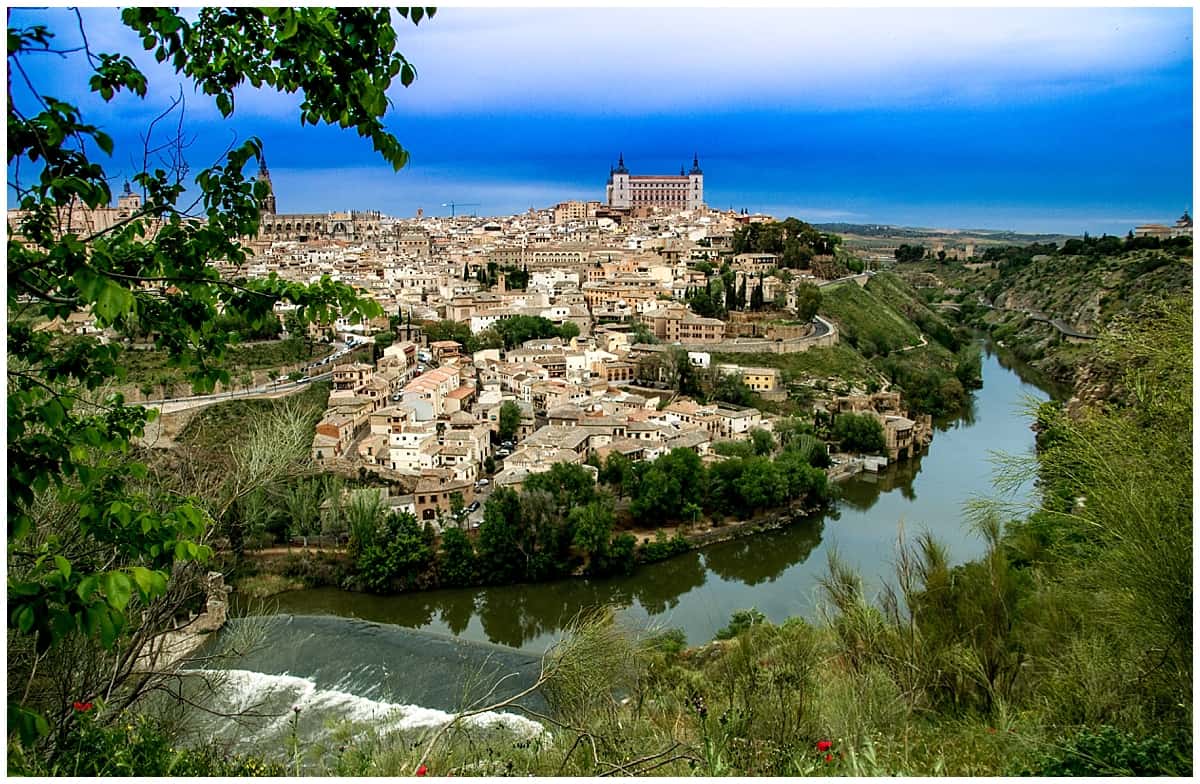
Road Trip Through Central Spain
Treat yourself to a literary, gastronomic and thoroughly authentic journey through this central part of Spain, the region of Castilla La Mancha. It’s one of the best road trips in Spain for hidden gems and a sense of exploration.
Take in Toledo, the former capital and UNESCO World Heritage Site. Search the hills for the windmills made famous by Don Quixote. Hike through one of the best bird reserves in the country. And relish taking your time amid small Spanish villages, far from the crowds.
Road Trip Through Central Spain at a Glance
- Day 1: Arrive Madrid
- Day 2: Madrid
- Day 3: Madrid to Toledo
- Day 4: Toledo
- Day 5: Don Quixote Countryside
- Day 6: Hike through the Tablas de Daimiel
- Day 7: Return Madrid to fly home
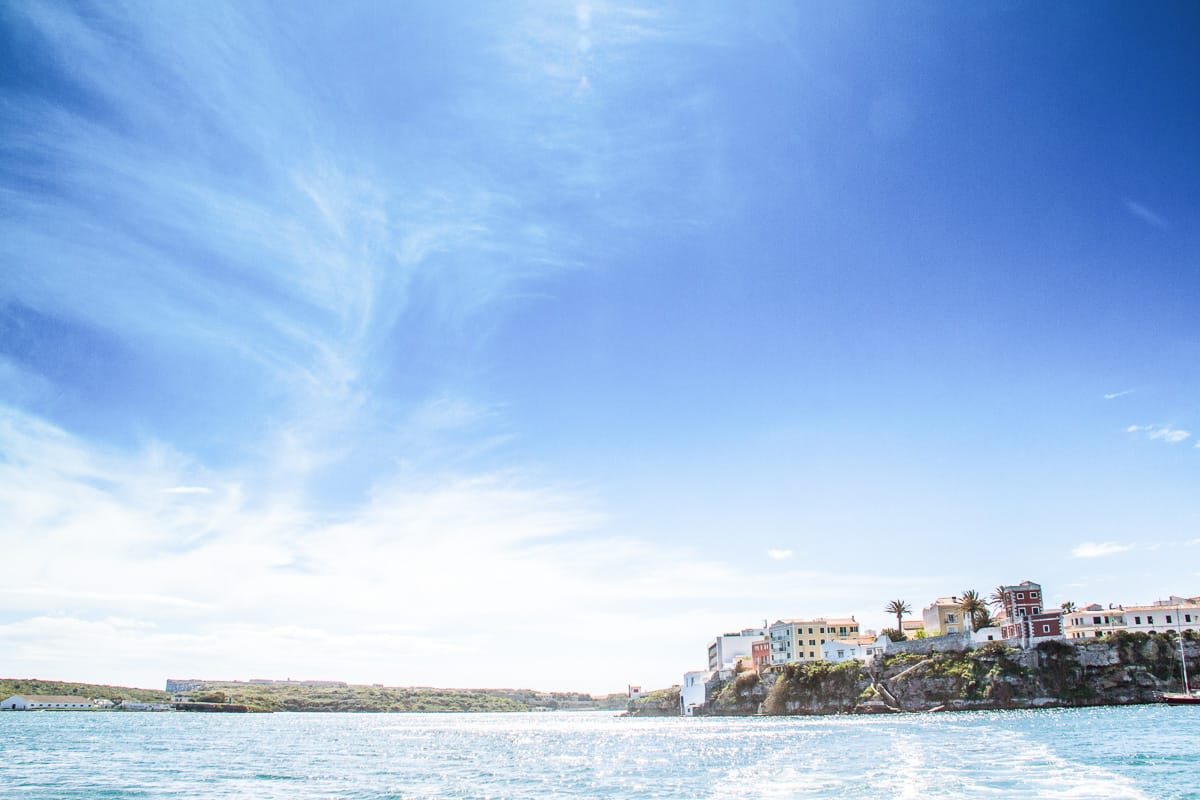
Both islands have stunning coastlines (but this place is Menorca!)
Driving the Balearic Islands
One of the best road trips in Spain involves flying to one of her smaller islands and taking a laid back approach to plans and itineraries all together. Mallorca and Menorca are the two main Balearic Islands and each has a distinctive character. Mallorca has party spots, UNESCO World Heritage and wild hiking routes. Menorca specialises more in family beaches, quiet streets, small towns and an awful lot of gin.
- Menorca or Mallorca for your Balearic Island holiday?
Set yourself up with one home base for a week and take a series of day trips to explore either island.
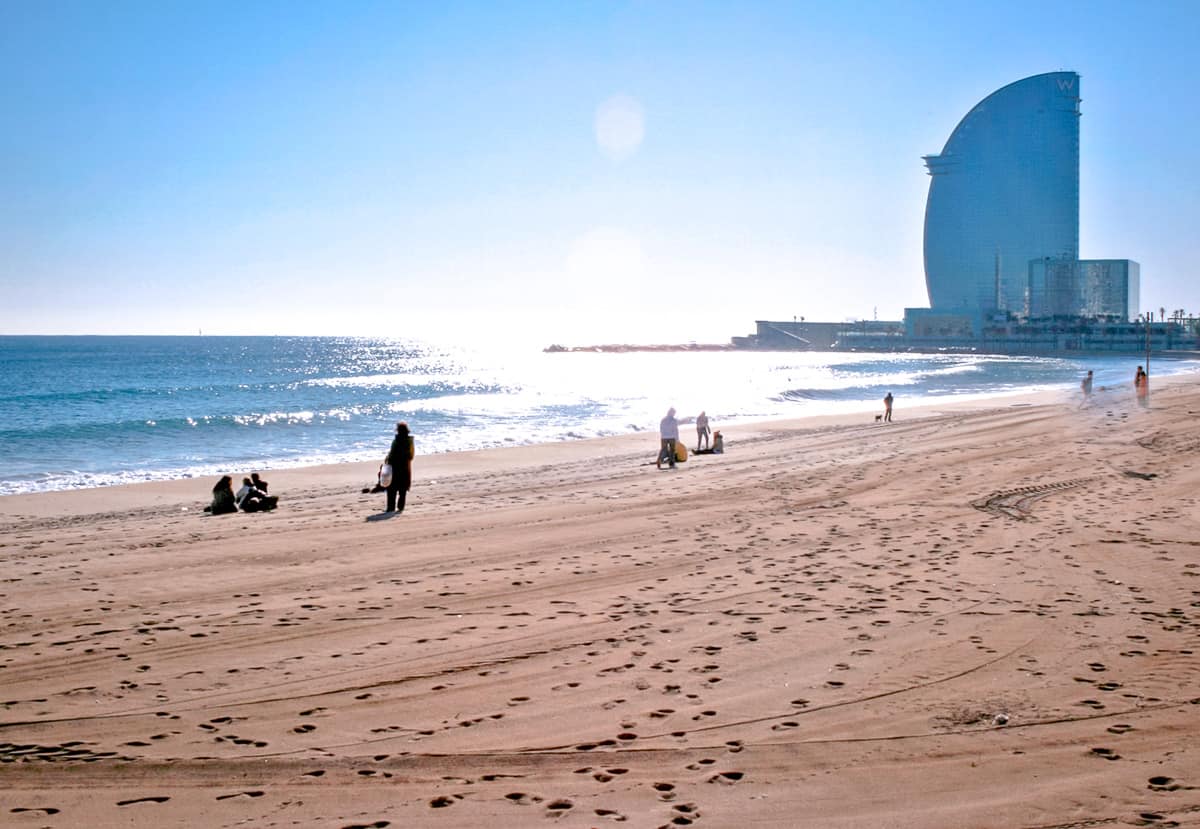
One of the best things about Barcelona is that it leads right onto a sandy beach…
Road Trip Along Spain’s East Mediterranean Coast
Drive from Barcelona to Valencia to experience two of Spain’s most interesting cities and her sparkling coastline as well. Find the Roman amphitheatre at Tarragona and the rice fields that gave us paella outside Valencia. If you have more than one week to ten days, continue south to the Moorish fortress in Amería as part of a road trip through Andalusia.
Road Trip Through the East Coast of Spain At a Glance
- Day 2: Barcelona and Girona
- Day 3: Valencia via Tarragona
- Day 5: Alicante and the Costa Blanca
- Day 6: Almeria and Cabo de Gata
- Day 7: Back to Barcelona to fly home (or to Malaga)
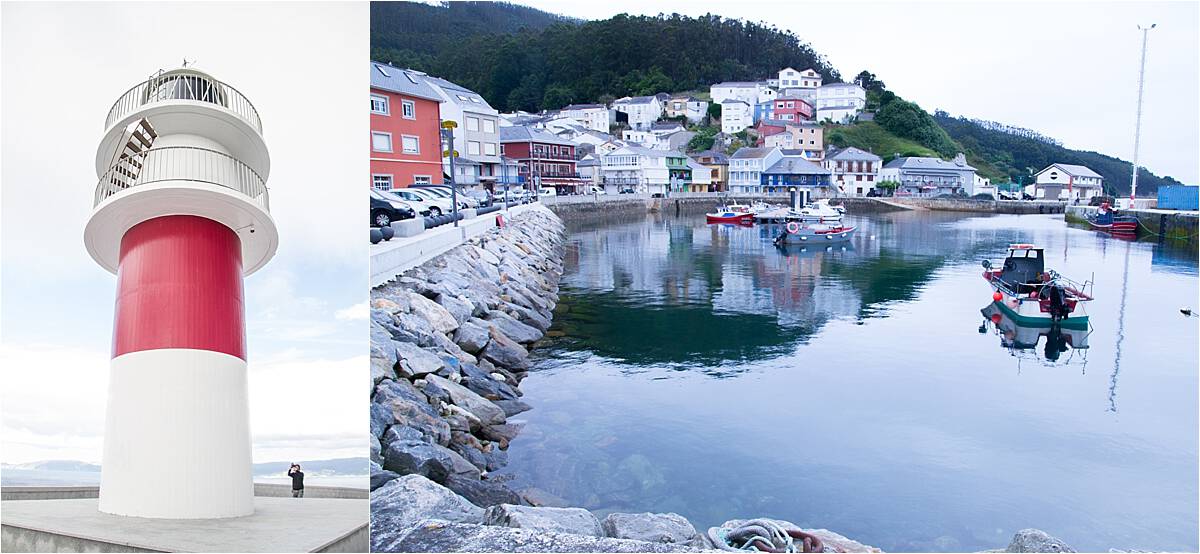
Road Trip Across Galicia
Decked out in deep green hues and bursting with salty seafood, a road trip through Galicia provides a completely different experience of Spain.
With a coastline more reminiscent of the rugged, craggy inlets of Ireland than the white sand of the south, it’s no surprise that Galicia offers seafood to make even the uncertain smile. Expect lighthouses, green fields, great walking routes and great food.
- A Galicia Road Trip: Northern Spain’s Rugged Green Coast
Road Trip Around Galicia at a Glance
- Day 1: Arrive La Coruña
- Day 2: Pontedeume and Redes
- Day 3: Porto do Barqueiro & Viveiro
- Day 4: Praia das Catedrais
- Day 5: Torre de Hercules Lighthouse & home

Road Trip Around the Basque Country
Link up San Sebastián, Bilbao and Santander for an epic road trip through Spain’s Basque country. Taste arguably the best food in the country in the pintxos bars in San Seb and take in the curls and swirls of the Guggenheim in Bilbao.
Add in secluded coastal curves and surprise museums, like the Balenciaga museum in Getaria , and you will find yourself with an unforgettable Spanish Road Trip.
Road Trip Through the Basque Country at a Glance
- Day 1: Arrive Bilbao
- Day 2: Bilbao
- Day 3: Bilbao to Logroño via Pamplona
- Day 4: Logroño to San Sebastian
- Day 5: San Sebastian
- Day 6: Hiking in Getaria
- Day 7: Back to Bilbao to fly home
What to know if you travel Spain by car
Cars drive on the right and you’ll need a full and valid driving license.
Tips for Spain Road Trip Itineraries
If you book through these links, we may earn a small commission at no extra cost to you. Cheers!
Typically, it’s best to pick up a vehicle at at the airport unless you have your heart set on exploring an historic city centre first. Bring your full driving license and book in advance. I’d highly recommend booking your car rental through Hertz.
Planning in Detail
I rely on the AA Route Planner to give me times and directions in Spain. Make sure you check for:
- Tolls (or factor them into your budget anyway)
What You Need to Drive in Spain
For a robust rundown of what you need to drive in Spain head to the Government website . From here you can check the latest recommendations and legal requirements, including information on an international driving permit.
Booking Hotels
Many smaller, boutique hotels in the centre of cities will not have parking options. It’s best to either park on the outskirts of town and walk in (in some places, such as Seville, taxis will struggle to get in as well) or if that’s too difficult for you then book a hotel on the outskirts of town and use their transport to travel in.
Highlights of Driving in Spain
Travel Spain by car and you’ll find all the following benefits.
While the big cities can get the pulse racing, for the most part, driving in Spain is a beautiful experience. Here are five reasons why:
1) THE ROADS ARE EMPTY
Outside the main cities that is. Gleaming wide main roads covered with smooth tarmac are the rule rather than the exception. Drive from Granada to Seville or Segovia to Merida and you’ll hardly see another car for miles.
2) THE SCENERY IS STUNNING
Low swirling mist rising over olive groves, intense sunshine hugging the contours of rust-red rock. Sparkling coastlines and white-washed towns with church towers spiking out of scorched plains. The green cloaked mountains of Galicia, the almond-scented mountains of Alpujarras and the Catalan curves of the eastern Pyrenees. Unlike driving in some countries, these views are visible from the windscreen of the car – you don’t have to wait until you park and get away from the roads.
3) GIANT BULLS ON THE HORIZON
Not real ones, of course. But building-sized, black, one-dimensional bull cutouts. Apparently, these first appeared as part of an advertising campaign for sherry. They were due to be removed until people clamoured for them to stay. Now, they add to the fun, as you never quite know when the next one will appear.
4) FRESH TAPAS AT SERVICE STATIONS
Forget about crisps, biscuits and overpriced coffee. Most petrol stations along the road in Spain are family run affairs with a chef on site. Coffee costs less than a euro while a plateful of patatas bravas, chocos, gambas or more is only a few minutes away. And if you’re feeling too hot? Try refreshing gazpacho instead.
5) FREEDOM AND GETTING OFF THE BEATEN TRACK
For reasons I’ll never quite understand, Spain has a reputation as a sand-and-sea destination and that’s about it. Visitors tend to cling to the coast and never realise just what they’re missing. Hiring a car and hitting the roads is the first step towards fixing that. Stop off in one of Andalucia’s pueblos blancos, for example, and you’ll probably be the only foreigner in town.
And that’s just for starters.
What is the best way to travel across Spain? Road trip or by train?
Great question. And the answer is: it depends.
Driving through Spain is an absolute joy, once you are out of the cities. Road tripping through Spain allows you to reach hidden villages and hike through unspoilt landscapes. It also makes life much easier if you are travelling with your children.
If you mainly wish to city hop between the big cities like Madrid, Barcelona and Seville, then the train is the better option. If you want to get off the beaten track and explore, go for a road trip.
Tools & Planners for the Best Road Trips in Spain
You’re in road trip heaven here, as we have everything from a full list of road trip essentials to the Ultimate Road Trip Planner for people who love freedom and hate spreadsheets.
And just for fun, we have the best road trip quotes and some road trip questions and games to help everyone get along.
Also, check out our road trip planning series on YouTube:
- The 5 biggest road trip planning mistakes people make (and how to fix them)
- The 7 best road trip planning tools.
1 thought on “The Best Road Trips in Spain and Their Self-Drive Itineraries”
The scenery is stunning indeed. I didn’t have to go driving to notice that. It’s wonderful!
Comments are closed.
Wander-Lush
The Ultimate Spanish Road Trip Itinerary: Barcelona to Seville
Plan your dream road trip through Spain with this epic Spanish road trip itinerary! I’ll show you how to spend a perfect 3 weeks in Spain travelling from Barcelona to Seville, plus everything you need to know about renting a car to self drive in Spain.
I was part-way through planning a six-week Eurotrip with my partner when I became fixated on visiting Spain.
Spain had never really factored into my travel plans. But as soon as I realised just how much variety the country has to offer – from majestic mountain villages and enthralling cities to romantic small towns and a postcard-perfect coastline – not to mention the sheer number of historical and UNESCO sites held within its borders – I decided we should spend a whole three weeks in Spain.
Wanting to pack as much into our short stay as possible, we thought renting a car for a Spanish road trip would be the best way to see the main sights plus a few smaller towns.
We were right – the action-packed Spain itinerary we devised saw us criss-cross the country from north to south, taking in most of the country’s top attractions .

Spain is one of the top places for a self drive holiday in Europe. Both rental cars and petrol are relatively affordable. Travelling in shoulder season (November), we were often the only car on the road. For the most part, parking is cheap, even in hot spots like San Sebastian.
Best of all, having our own transport opened up a lot of opportunities to visit smaller towns and squeeze more into each day than our slow travel style would normally permit. Our trip was certainly fast-paced, but it was worth it to get a good overview of Spain in a short period.
This tried-and-tested itinerary for a three week self drive road trip across Spain includes my top recommended activities for key cities, ideas for where to break the journey, some handy Spain driving tips, and much more.
Please note: This post contains affiliate links, meaning I may earn a commission if you make a purchase by clicking a link (at no extra cost to you). Learn more.
Where to hire a car in Spain
Hiring a car in Spain is an efficient and affordable way to see a large part of the country in a short period of time. Since a lot of visitors drive in Spain, the market for rental cars is competitive, meaning you can usually get a pretty good deal.
We planned our Spain road trip from Barcelona, so we decided to rent our car on our last day in the city. I recommend collecting your car from Barcelona-Sants train station because it’s easy to get to using public transport, and easy to leave from to get to the highway.
There are two main things to consider when choosing a hire car: transmission type, and size of the vehicle. Manual cars are much more ubiquitous in Spain so it can be harder to find an automatic car to rent. In addition, you should prioritise hiring a small car that will be easier to park on the street and can better navigate narrow village roads (these were our two biggest qualms about driving in Spain!).
Discover Cars lets you easily browse and compare different rentals cars from a variety of international and local agents. It lets you choose the exact features you want, and offers a full range of price and date options so you can find the best value for money. Visit Discover Cars and plug in your dates to see what’s available .
At the end of the itinerary, I’ve included a few driving tips for Spain.
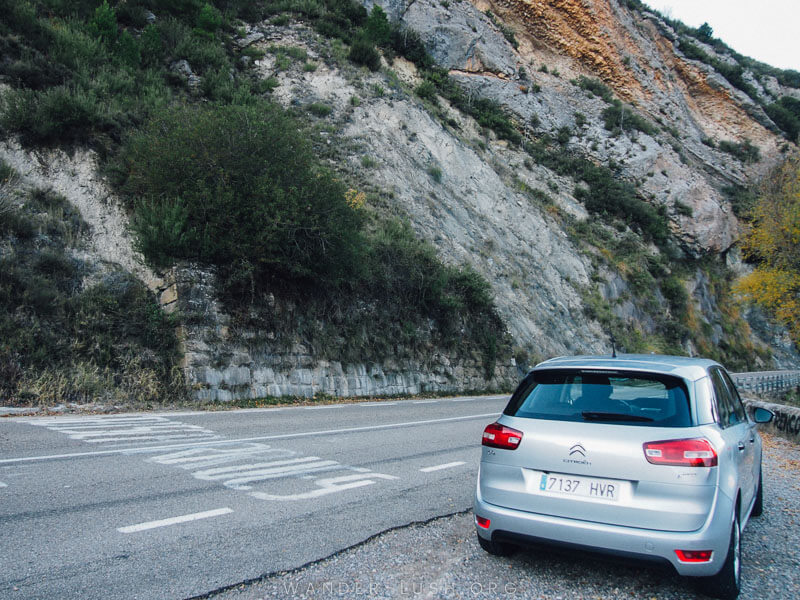
About this Spain itinerary
Looking back over our itinerary makes my head spin a little! We drove almost every day and covered a lot of ground, but by splitting the long drives up into smaller journeys, we still got to visit some interesting local towns.
Spanish highways are incredibly easy to drive on and the scenery is invariably stunning no matter where in the country you are. Because of this, driving never really feels like a drag – it’s all part of the experience.
We started our road trip in Spain from Barcelona and finished up in Seville. From there, we continued on to Tarifa by bus and caught the ferry to Tangier, Morocco. You can adapt this itinerary to create a loop, but I recommend paying the one-way car rental fee so you don’t have to backtrack. If your Spain trip ends there and you’re not continuing on to Morocco , you can fly straight out of Seville.
There are endless options and itinerary combinations for seeing Spain by car. I’m not saying mine is the best road trip in Spain – but I can tell you that it’s tried and tested. Of course there are some things missing (you can’t possibly see all of Spain in 3 weeks), but after I did this road trip, I felt like I’d seen the main highlights.
If I had my time again, I would extend our stay in Madrid by a few days.
A good way to save time is by taking advantage of the Spain day trips and tours mentioned in this itinerary. If you think there’s too much packed in, you can easily take out a few places and stay in certain locations for longer (Madrid and Granada would both be ideal places to extend your time).
How much time do you need to drive across Spain?
A Spain road trip can be as long or as short as you want it to be. As you’ll see from the map, we covered most of the country (apart from the north-west) in 21 days touring Spain by car.
Remember you don’t want to rush driving across Spain too much. Three weeks is the absolute minimum amount of time you need for a Spain road trip like this one – unless you’re prepared to seriously cut down on the number of places you visit.
This 3-week self drive Spain itinerary is fast-paced, but if it’s a once-in-a-lifetime trip to Spain that you’re planning, you probably won’t mind hustling to see as much of this beautiful country as humanly possible.
If you have less time in Spain, you can do a shorter itinerary that focuses on the North of Spain (Basque Country) or the South of Spain (Andalusia).
Spanish road trip route overview & drive times
Let’s start with a basic overview of our Spain road trip itinerary and the 17 cities, towns and villages we visited in Spain in 3 weeks.
Remember you don’t have to follow this itinerary exactly – you can use it as a Spanish road trip planner to pick and choose the destinations that most appeal to you.
- Days 1-3: Barcelona
- Day 4: Barcelona to Sos del Rey Católico via Zaragoza (400km; 4.5 hours of driving)
- Day 5: Sos del Rey Católico to Bilbao via Pamplona and San Sebastián (217km; 2 hours of driving)
- Day 6: Bilbao
- Day 7: Bilbao to Madrid via Segovia (400km; 4 hours of driving)
- Day 8: Madrid
- Day 9: Madrid to Toledo (72km; 1 hour of driving)
- Day 10: Toledo to Valencia via La Mancha (270km; 4 hours of driving)
- Day 11: Valencia
- Day 12: Valencia to Cartagena (270km; 3 hours of driving)
- Day 13: Cartagena to Lanjarón (330km; 3.5 hours of driving)
- Day 14: White Villages and the Sierra Nevada
- Day 15: Lanjarón to Granada (46km; 45 minutes of driving)
- Day 16: Granada to Córdoba (200km; 2.5 hours of driving)
- Day 17: Córdoba
- Day 18: Córdoba to Seville (145km; 1.75 hours of driving)
- Days 19-20: Seville
- Day 21: Depart Seville – or Seville to Tangier via Tarifa
This Spain itinerary covers a whopping 2,450km (1,523 miles). Remember that not all the driving is back-to-back, there are some rest days in between!
Spanish road trip map
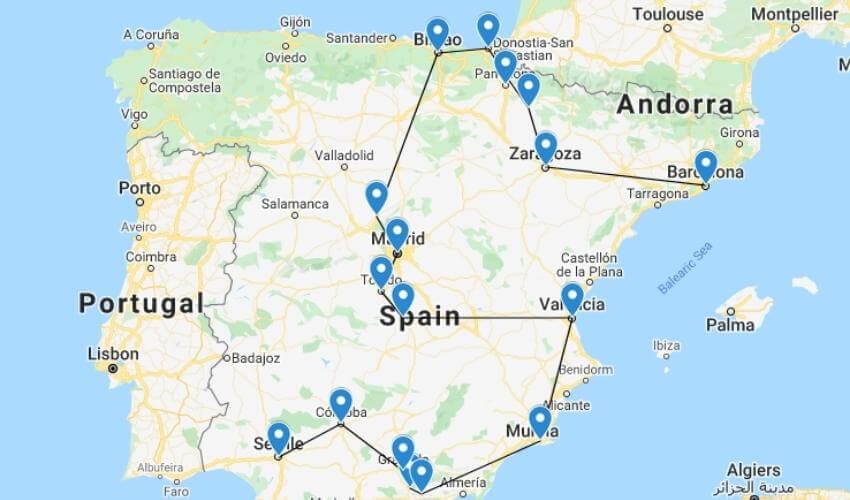
Detailed self drive Spain itinerary
This section includes a detailed day-by-day breakdown of our 3 weeks in Spain, including the best things to do in each city, where to stay, and where to break up longer drives.
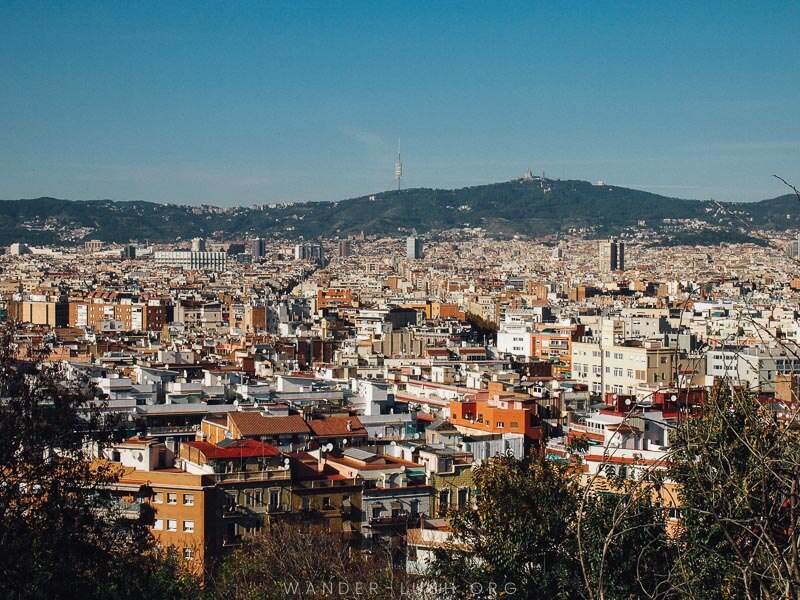
Vivacious Barcelona is the perfect place to start your Spain road trip itinerary. Capital of the autonomous Catalonia region and the second-largest city behind Madrid, Barcelona is quintessentially Spanish and offers a perfect introduction to many of the things that make Spain so great – incredible architecture, beautiful beaches, and fabulous cuisine.
On top of that, Barcelona is logistically the best place to start a trip through Spain. It’s home to an international airport, a train station with services from most other countries in the region (we arrived by night train from Geneva), and a ferry terminal.
I recommend spending at least 3 days in Barcelona to get a good feel for the city and see the main highlights. The city has a great public transport system, so you don’t need a car here – in fact, it would be a major burden.
I highly recommend picking your car up on the day you leave Barcelona. Most rental companies have offices at Barcelona-Sants, the city’s main train station. This is a good place to start as the traffic isn’t too hectic and you can easily get to the highway.
Where to stay in Barcelona
Barcelona is huge – where you stay can make or break your trip. Take some time to familiarise yourself with Barcelona’s inner-city neighbourhoods so you can make an informed decision.
Here are a few recommendations for where to stay in Barcelona – car or no car.
- Ayre Hotel Rosellón . Located in the shadow of the Sagrada Familia, you won’t find a better patio view anywhere else in Barcelona (just look at the pictures if you don’t believe me!). Parking at the hotel is guaranteed and only costs a modest 16 Euros extra per night.
- Barcelona Catedral Hotel . This modern boutique hotel has light-filled, spacious suites, a rooftop pool and patio, and offers free walking tours for guests. Note that secure parking costs a bit extra, and you’ll need to reserve a spot in advance.
- Motel One Barcelona-Ciutadella . Don’t let the name ‘motel’ fool you – this is a boutique hotel through and through. If you can tear yourself away from the trendy lounge-bar and rooftop terrace overlooking the city, it’s a short 20-minute walk to Las Ramblas. Private parking is offered at a nearby location and costs an extra 20 Euros.
- Unite Hostel Barcelona . My top budget choice in Barcelona, this boutique hostel offers dorms and private rooms, all bright, clean and minimally furnished. The yoga studio and co-working spaces are the cherry on top. Reserve on-site parking in advance for 18 Euros/night.
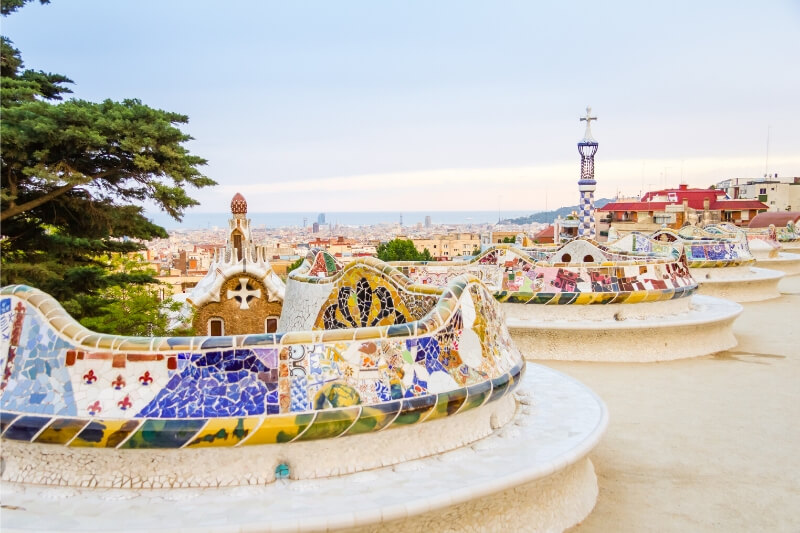
Things to do in Barcelona
In all honesty, planning a Barcelona itinerary can be a bit overwhelming. There’s just so much to see and do. I’m only recommending a few select activities and restaurants that we really enjoyed – know that there is a lot more out there!
Start by pounding the pavement on Sandeman ‘s free city walking tour . This will help you get your bearings while introducing you to some of Barcelona’s must-sees, including the Gothic Quarter and Barcelona Cathedral.
La Sagrada Familia , the grand cathedral designed by Gaudi, is the symbol of Barcelona. You should prioritise visiting on your first or second morning. Skip-the-queue tickets are essential – or else you risk spending hours waiting in line. Pre-buy your skip-the-line tickets for the Sagrada Familia online.
Gaudi’s other works in Barcelona, including the iconic Park Güell Monumental Zone (buy fast-track tickets here ) and Casa Batlló are absolutely worth a visit as well. Even if you’re not that interested in architecture, these buildings all capture the spirit of Barcelona and tell a fascinating story of Spanish and Catalonian history. The experience is even richer if you’re accompanied by a guide who can illuminate the symbology.

Ride an e-bike around the gorgeous Gothic Quarter to explore one of Barcelona’s most charming neighbourhoods. For a break from the hubbub, head for the hills and spend an afternoon wandering around the cactus gardens at Montjuïc . Take the cable car over La Barceloneta beach for fantastic views, and visit the beach itself if the weather is right.
Don’t skimp on the food, either! Barcelona is packed with incredible restaurants . We especially loved eating Spanish ‘ hamburguesas ‘ at Hamburguesería Bacoa and pigging out on homemade churros at Bar Churrería Layetana . If you’re a foodie, this market to table tour of Mercado de La Boqueria , Barcelona’s biggest produce market, is a must-do.
Take advantage of the free entry to Museu Picasso every Friday night – it’s busy, but it’s a wonderful experience. And for something truly memorable, try to see a gig at the Palau de la Música Catalana (we watched an unforgettable performance by the late, great Sharon Jones). If there’s nothing on, I highly recommend booking in for a short guided tour – it’s truly one of the most majestic buildings I’ve ever been in (aside from Sagrada Familia!).
Recommended day trips from Barcelona
If you decide to extend your stay in Barcelona, there are lots of fantastic day trip opportunities within a few hours’ drive of the city.
- Get your Game of Thrones on in charming Girona
- Visit family run wineries and taste tapas in the Penedès region
- Discover the mysteries of Montserrat solo or with a guide
No car? This 12-day journey around Spain by train , starting from Barcelona, takes in some of the country’s best cities and beaches.

It’s time to hit the road! After collecting your car in Barcelona, start heading due west towards the Bay of Biscay. The drive to Zaragoza takes 3 hours. If you want to make it in time for lunch, try to leave the city as early as possible (by 8am at the latest). That way you’ll also beat most of the traffic.
Zaragoza lies smack-bang in the middle of northern Spain. Capital of the autonomous Aragon region, it’s one of the country’s most underrated cities and an ideal place to break for lunch and a short walk.
On reaching Zaragoza, we stopped at a small tavern in the shadow of the Aljafería Palace and ate a bowl of fideos negros (black noodles simmered in fish stock). There are plenty of restaurants and gastrobars around the river, close to the historic centre. However, it might be tricky to find a car park, so I recommend heading to the city’s western fringe like we did.
Sos del Rey Católico

When I picture an archetypal Spanish town, the Sos is what comes to mind. This little village on the frontier of the Pyrenees is located another 1.5 hours’ drive north of Zaragoza, so I recommend leaving after lunch no later than 1pm to maximise your time in Sos.
Ferdinand II of Aragón, husband of Isabel I of Castilla and one-half of the most influential royal couple in Spanish history, was born here in Sos. The little town is loaded with history and packed with charm.
The town is petite and easily navigated during an evening or early morning stroll ; admire the flower boxes, pop in and out of charcuterie shops, and listen to the church bells toll.
We stayed a night at the Parador de Sos del Rey , which sits on a low rise overlooking the Sos’ ancient cobbled streets (you might recognise it from the 2017 film The Trip to Spain ) and had a very memorable meal at the Parador’s Cinco Villas-themed restaurant.
Where to stay in Sos del Rey: Hotels with parking
- Parador de Sos del Rey Catolico . It’s honestly worth the splurge to stay at this Parador. Set in a historic Aragonese mansion that overhangs Sos’s winding streets, it’s one of the most romantic hotels I’ve ever had the pleasure of spending a night in. Rooms are plush as, and the set dinner at the on-site restaurant is a must-try (I’ve never eaten so much food in my life). Parking on the grounds is free and easy.
- El Peiron . For a budget-friendly alternative, this hotel has a similar 17th century ambiance. Cozy rooms feature large beds and exposed stone walls. The location on Sos’s main street, close to some of the village’s best tapas bars, will make you feel like you’re part of the city (unlike the Parador, which makes you feel like absolute royalty). Free street parking is available near the hotel.

On your next full day of driving, break the 2-hour journey to the Bay of Biscay by stopping off in Pamplona for lunch. This will be your first taste of Basque Country tapas ! Pamplona is the perfect place to practice the art of ordering ahead of your arrival in San Sebastián.
Outside of the famous San Fermin (Running of the Bulls) cultural festival , which takes place in Pamplona every July, the streets are surprisingly peaceful and sparse. Bakeries and boutiques run the length of the main pedestrian drag and are well worth a browse.
San Sebastián

Most people head straight for San Sebastián’s pintxos bars , but don’t forget to take a stroll along the waterfront promenade , too. After a day’s drive, this is exactly what you need to stretch your legs and re-fuel.
We spent a few early evening hours in San Sebastián, and while I didn’t really fall head over heels for the town like I’ve known other people to do, it’s a worthwhile stopover on the way to Bilbao. If food is in your wheelhouse, you can easily switch your itinerary and stay in San Sebastián instead of Bilbao.

Bilbao and San Sebastián are only an hour’s drive apart, so you can plausibly stay in one city and visit the other as a day trip. If I had my time again, I would probably stay in San Sebastián instead.
The futuristic Guggenheim Museum is Bilbao’s main attraction, but I found the rest of the city a little bland. One full day is ample time to see the museum and explore Bilbao’s riverfront.
In 24 hours, you can discover the city by bicycle and tour a few of the key Game of Thrones filming locations around Bilbao. An in-depth Basque County gastronomy tour is worth considering if you’re particularly interested in food and wine (let’s face it, if you’re planning a trip around Spain, you probably are!).
Where to stay in Bilbao: Hotels with parking
- Hesperia Bilbao . These trendy self-contained apartments are a 10-minute walk from the city centre (just across the river from the Guggenheim) and feature everything you need for a comfortable stay in Bilbao. There’s even a Japanese restaurant and a rooftop terrace bar – because both those things are basically travel essentials nowadays. Secure parking can’t be reserved but is available at an extra charge.
- Ercilla Hotel . For something with a touch more old-world charm, this boutique hotel offers pretty rooms with herringbone floors and chequerboard tiles. The restaurant serves traditional Basque food, and there’s a panoramic bar here as well. Park on-site for 20 Euros (reservations essential).
- Parador de Limpias . If you don’t mind staying outside the city, this Parador is a 50-minute drive from Bilbao. The former summer residence of King Alfonso, the setting amongst private gardens and a protected woodland is just divine. Free parking is plentiful.

After a short but sweet introduction to Basque Country, it’s time to leave the coast and start driving inland towards Madrid.
Segovia is 100km shy of Spain’s capital city. Coming from Bilbao, you’ll naturally pass through it – so there’s no reason not to stop off and check out two of Central Spain’s most impressive historical sights.

Aqueduct versus alcazar – when an urban landscape is a battle between the most important Roman civil engineering work in Spain and a Moorish palace so beautiful that it’s instantly recognisable from pop-culture, you know you’re in for a treat.
Segovia is a complete contrast to Madrid. Park your car on the hill leading up to the aqueduct and ease your way into the capital by wandering around this charming town for a few hours first.

Climb the concealed staircase to the right of Segovia’s UNESCO-listed aqueduct for a different perspective on this feat of engineering. Visit The Alcazar , apparently Walt Disney’s architectural inspiration when creating Cinderella’s castle.
Between 10.30am and 4.30pm you can join a 60-minute guided tour of Segovia Cathedral , another of the city’s landmarks. This particular tour also allows you to climb the 500-year-old bell tower for a panoramic view of Segovia.
And as a reward for all that walking, treat yourself to a Pasteleria Limon y Menta , Segovia’s signature pastry. It’s lemony, it’s minty, and it’s wrapped in caramelised marzipan. Yum!
If you opt to drive straight into Madrid, you can always visit Segovia on a day trip.

Our first experience of Madrid was the nightmarish drive through the city at peak hour. Don’t make the same mistake we did – try to arrive in Madrid before nightfall!
Where to stay in Madrid: Hotels with parking
- Only YOU Hotel Atocha . The design of this jaw-droppingly beautiful hotel draws on the 19th-century building its housed inside. Deluxe rooms face onto an inner courtyard and are bright and airy as a result while still feeling private. There’s a cafe, bakery and lounge, and breakfast is served on the 7th floor with city views. The Prado Museum is only 900m away, making this a great choice for museum and culture lovers. Parking on-site is guaranteed and costs extra.
- Hostal Patria Madrid . Coming in at under $100 a night, this hotel is excellent value for money in Madrid. Rooms are basic but comfortable with Scandi-style furnishings, and the location on a popular cafe strip is perfect for hungry travellers. Parking (reservation required) costs a very reasonable 17 Euros.
- Parador de Alcala de Henares . If you want to avoid driving into Madrid (smart choice!), this Parador is 45 minutes outside of Madrid. The 16th-century convent building reminds me of a Silk Road Caravanserai. There’s an outdoor pool, and parking on the grounds costs a little bit extra.
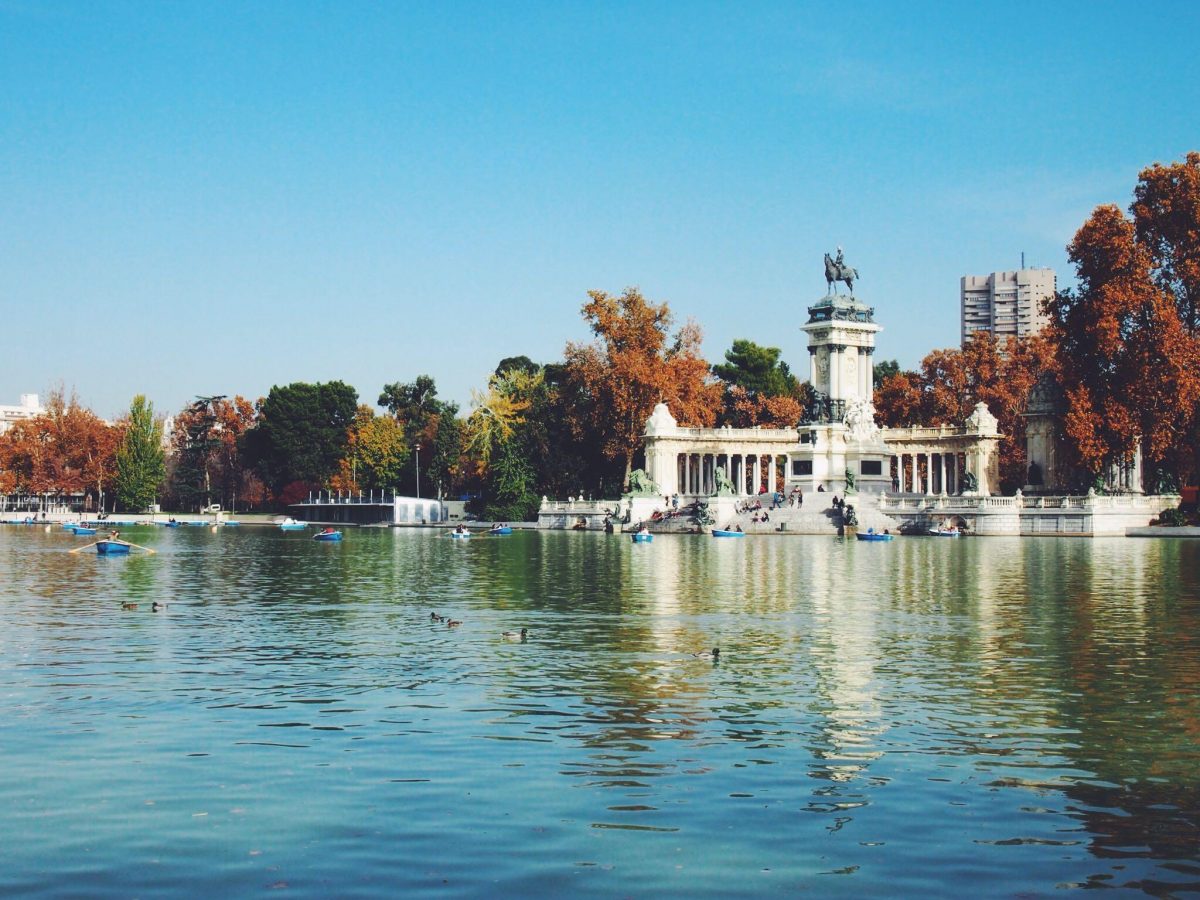
Things to do in Madrid
An easy walk or cycling tour through the city is the best way to see central Madrid. Make sure you explore the gorgeous Real Jardín Botánico , wander through the bookstalls that line Cuesta del Moyano , and top it off with sunset at the Temple of Debod , an ancient Egyptian temple that was dismantled, shipped to Spain, and reassembled in all its glory on a hill in the city centre. A live flamenco performance is the perfect way to end your first day in Spain’s capital.
For a dose of history and culture, visit Madrid’s four most iconic landmarks: The Plaza de Toros de Las Ventas , the Royal Palace , the Plaza Major , and of course the Prado Museum .
Here are my top tips for exploring historic Madrid:
- Join a tour of Las Ventas to access some of the building’s hidden nooks and crannies.
- Take in the scale of the magnificent Plaza Major on a bicycle. This 3-hour small group tour takes in many of the city’s highlights.
- Let a professional guide show you around the Throne Room, Banquet Hall and Private Royal Apartments inside the Royal Palace. This 2-hour tour is excellent value for money.
- Skip the line by buying your Prado tickets online in advance through Get Your Guide .
Recommended day trips from Madrid
- Visit the UNESCO World Heritage Site, Cuenca , and its amazing ‘hanging houses’
- See the ‘three cities’, Segovia, Avila and Toledo, on a day trip (a good option if you want to condense your Spain road trip itinerary and stay longer in Madrid)
- Tour the wineries around Madrid and taste the local drop
- Cast your eyes on the surreal landscape of El Escorial and the Valley of the Fallen

Leaving Madrid, start your journey to Southern Spain’s enchanting Andalusia region. Over the next 12 days, you’ll be driving from Madrid to Granada and Cordoba via some of the loveliest small towns and historical villages in the country.
The first of these, Toledo , is just an hour outside Madrid. After the chaos of the capital, it’s a salve. Toledo’s mix of old-world charm, literary heritage and multicultural influences makes it one of my favourite places in all of Spain. I highly recommend staying for at least one night.
Toledo is the first place where you can see, hear and smell the Middle Eastern/North African influence that becomes more and more pronounced the further south you travel. We had a wonderful introduction to Syrian and Turkish food in Toledo, which became our go-to cuisine for the remainder of our trip.
Where to stay in Toledo: Hotels with parking
- Hotel Santa Isabel . A great budget choice at under $40 per night, this charming guesthouse is right in the heart of Toledo. Private balconies overlooking the town rooftops and a central courtyard are terribly quaint. Rooms are a bit boxy, but nicely finished and clean. Reserve parking in advance for 12 Euros per night.
- Parador de Toledo . This is another great candidate for a little splurge. Set 4km from the centre of Toledo in a low-set historic building, rooms here are a bit more outdated than at other Paradors, but the outdoor pool and panoramic terrace are lovely. Parking is free.

Toledo is the spiritual home of Don Quixote , Spain’s literary legend. A great way to see the old town is by walking the Don Quixote Trail . Alternatively, let a Toledo local show you around on a private walking tour .
Fall in love with Syrian food at Posada El Cristo de la Luz , then down a sampler box of marzipan from Santo Tome (the signature sweets of Toledo).
For more Toledo inspiration, see this list of the top 10 things to do in Toledo .
Consuegra, La Mancha

I’m a huge fan of Miguel de Cervantes’ Don Quixote , but even if you’ve never read the book, a quick detour through Spain’s iconic La Mancha landscape, with its towering windmills and patchwork fields, is an absolute delight.
Leaving Toledo and driving east, aim to arrive in the small town of Consuegra in the early morning before the tour buses pull in at around 10am.
Stop at one of the provincial bakeries for a quick bite. You can then drive all the way to the top of the hill and explore the windmills on foot.

Spain’s third-largest city, Valencia has all the charm of Barcelona and all the amenities of Madrid with a laid back, beach-town feel. This is the Orange Blossom Coast , and the streets of Valencia are lined with citrus trees (which you must pick and sample – luckily our Airbnb came with a juicer!).
Valencia is also the traditional home of paella and Spain’s signature beverage, horchata. While we weren’t all that impressed with the City of Arts and Sciences , we loved cycling through the elongated Cabecera Park that runs through the heart of the city. (Perhaps we should have opted for the rooftop wine and tapas tour instead!) If you’re an outdoorsy type, you’ll adore Valencia.
Driving in Valencia is relatively easy compared to Barcelona or Madrid, so you can stay in the city centre without having to worry too much about traffic or navigating the roads.
Where to stay in Valencia: Hotels with parking
- HQ Rooms Apartments San Vincente . Spacious and featuring all the mod-cons, this self-containted apartment sleeps up to 8 people and comes with a large private balcony. It’s 1.5km from the centre of the city, and there are bicycles available to rent for a small fee. Parking costs an extra 15 Euros.
- Palacio de Rojas . 350m from Valencia’s Central Market, it doesn’t get much more inner-city than this. The canary yellow facade, the indoor-outdoor living spaces, the high ceilings and the heavy doors… This must be one of the most beautiful hotels in all of Spain. Seriously. Palacial apartments sleep up to 9 people and all feature a full kitchenette. Underground parking is available for an additional 15 Euros.
Things to do in Valencia
You’ll probably be quite content hiring a bicycle and exploring Valencia at your own pace. If you want a deeper look, try joining a private walking tour with a local .
For a hands-on activity, I highly recommend taking a paella cooking class and learning just why Valencia is the birthplace of Spain’s most famous dish. Head to the Plaça de Santa Caterina to try a glass or horchata (or two) at one of the open-air cafes. Horchateria Santa Catalina is my personal favourite.
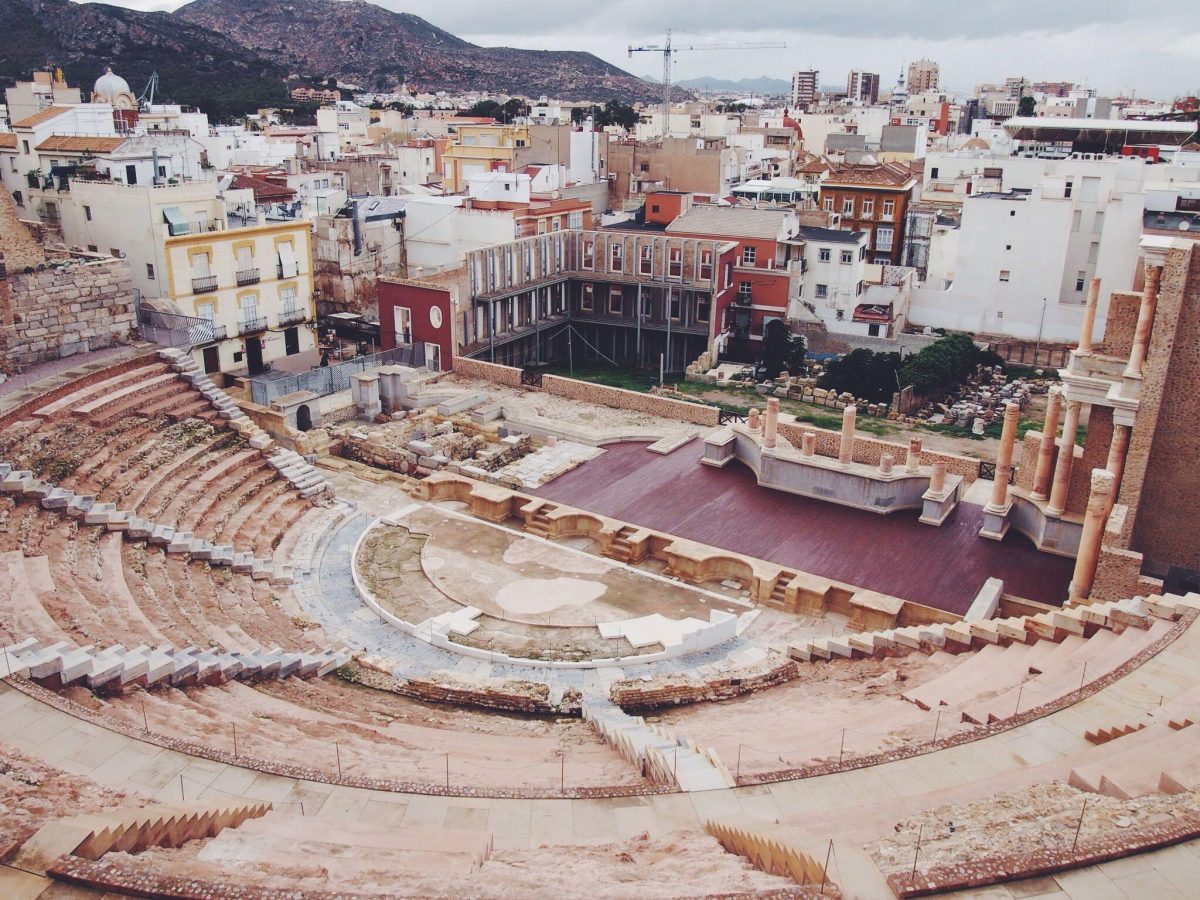
Three hours’ drive down the coast from Valencia, Cartagena is another of Spain’s most underrated cities. We rolled into the sleepy historic centre in the early afternoon and were greeted by a medieval festival, the annual Mercado Medieval (how’s that for timing!).
Catagena’s Roman amphitheater is one of the best-preserved in all of Europe, and exploring the state-of-the-art museum was honestly one of the most enjoyable ‘historical’ experiences I had in Spain. It’s fascinating to see how the city has been built-up around the ruins.
Cartagena is small so you only need a day or two at the most. Start by getting your bearings with a walk around the inner city. The food scene here is great, so I also recommend doing a gourmet tapas tour .
Where to stay in Cartagena: Hotels with parking
- NH Cartagena . Elegant rooms with a view of Cartagena port are the stand-out feature of this efficient hotel. It’s only 200m from the Roman Theatre but in a quiet corner of town, so you can still get a good night’s sleep. Reserve paid on-site parking at the time of booking.
The Sierra Nevada: Lanjarón and the White Villages

Leaving Cartagena behind, you’ll next be driving the coast of Spain (at least a portion of it) and dipping inland to visit one of Spain’s most beautiful natural landscapes, the Sierra Nevada.
Once you hit the mountainous Las Alpujarras region, you’ll realise what a blessing your hire car truly is. Navigating the windy, steep, narrow roads around the white villages was nail-biting at times, but I can’t imagine trying to get around any other way.
Base yourself in Lanjarón , the area’s most populous village and home to a number of quirky accommodations, including the healing retreat/yurt we stayed in.
Once a hippie mecca and still famed for its spring water and olives , Lanjarón is a gateway to the smaller villages of Pampaneira, Bubio and Capileira . If you can brave the altitude, add Trevélez (Spain’s highest settlement) to your driving itinerary.
Some of the villages take a good few hours to get between, especially in inclement weather, so I recommend setting aside at least two days to explore the area, more if you intend on hiking between the villages .

Where to stay in Sierra Nevada: Hotels with parking
- Hotel Alcadima (Lanjarón). Homely suites at this quaint little hotel are excellent value for money. Indoor and outdoor pools, plus a kids’ play area, make it a great choice for families. The restaurant specialises in roast lamb with cinnamon. Need I say more? Parking costs an extra 10 Euros.
- Enchanting Yurt (Lanjarón). One of the coolest Airbnbs we’ve ever stayed at, this whimsical yurt is set in an olive grove at the foot of the mountains. It’s absolutely magical, and the Israeli hosts are very kind and welcoming. Free parking is plentiful.
- Parador de Nerja (Nerja). Another town, another Parador! This one is a bit different because it’s set inside a modern building on a cliff top overlooking the ocean. An elevator ferries guests down to the nearby beach (how cool!). Private parking is available for an additional charge. Note that it’s a 60-minute drive to Lanjarón.

Granada boats a quixotic mix of Spanish and Moorish cultures. The Alhambra is an architectural triumph – if it’s not on your itinerary, you’re doing Spain wrong!
You need to buy tickets to the Alhambra and Generalife Palace and Gardens a day or two ahead of your visit (or a week in advance if you’re travelling in summer). The easiest way to do that is by booking online through Get Your Guide .
On the day of your visit, make sure you leave early to account for the time it takes to access the complex (which includes a long, beautiful walk through the forest if you’re using public transport).

Where to stay: Granada hotels with parking
- Eurostars Catedral . The exception location 70m from Granada Cathedral is only topped by the traditional coffered wooden ceilings inside some of the suites. Rooms are otherwise modern and luxurious with more subtle nods to the building’s history sprinkled throughout. Parking costs an extra 22 Euros per day.
- Anacapri . This 18th-century house turned boutique hotel wears its heart (and its history) on its sleeve. The inner courtyard is outstanding, and rooms are very comfortable. It’s even closer to the cathedral and just 20 minutes’ walk from the Alhambra, right next to the start of the pathway. No reservation is required for the off-site parking (an extra 20 Euros per day).
- Alhambra Palace . Just shy of the city walls to Granada’s iconic UNESCO attraction, this hillside hotel has spectacular views, Moorish-inspired decor, and of course, quick access to the Alhambra. Secure parking is off-site and costs 22 Euros.
Things to do in Granada
After the once-in-a-lifetime experience of The Alhambra, everything else pales in comparison! However, Granada has a lot more to offer, which is why I suggest staying an extra night (or even longer, if you can).
Discover the city’s most charming neighbourhoods , Albaicín and Sacromonte, on foot with a walking tour. Watch a traditional flamenco performance inside Albaycin, and treat yourself to an authentic Arabian hammam bath .
There is a secret sunset spot in the hills above Granada where you can watch the warm light bathe the entire Alhambra complex before someone flicks the switch and it lights up like a beacon on the hill. Don’t miss it!

From The Alhambra to Códoba’s Mezquita, a fascinating mosque-cum-church that is home to a set of much-photographed candy cane archways. Córdoba is an archetypal Andalusian city (my favourite in the region) and has many other offerings, including a pleasant waterfront and some incredible vegetarian restaurants.
Every year, Córdoba hosts the Patio Festival , which showcases the amazing indoor gardens that are a traditional part of every home here. Make sure you peek inside a few doorways as you’re wandering the town’s lanes. This is also a good place to catch a Flamenco/equestrian show – our pick is the Royal Stables of Córdoba .

Where to stay: Córdoba hotels with parking
- Hotel Boutique Patio del Posadero . This intriguing little hotel features bespoke rooms and a beautiful patio (as is the style in Cordoba). The outdoor swimming pool and terrace lounge are perfect for summer. Reserved parking costs extra.
- Hotel Cordoba Center . A bit further from the mosque, this ultra modern hotel sits on the city’s Golden Block next to the AVE Train Station. The 7th floor pool and Jacuzzi are particularly noteworthy, but it lacks the charm of some other Cordoba hotels. Non-reserved parking is located on site.
- Parador de Cordoba . It’s almost your last chance to stay in a Parador! Cordoba’s is a fine choice – another renovated summer palace, it’s located north of the centre and boasts a massive pool plus sprawling gardens (the grounds, Los Naranjos, are where the first palms brought to Europe were planted.) Rooms are extremely spacious and well-appointed. Parking is free.

Things to do in Córdoba
Join the official Mezquita tour (price includes entry) and see this incredible UNESCO mosque-cathedral up close. In the summer, cycle the waterfront on a bicycle tour , or visit seven of Cordoba’s most impressive patio gardens and learn about the history of the city’s courtyard tradition.
If you have an extra day, venture outside the city to see the impressive Azahara Medina .

An entire day can easily be spent inside Seville’s Alcazar complex , another incredible palace – this time in the Andalucian style – that mirrors The Alhambra in its layout and design. GoT fans will recognise the Alcazar as the setting for the Water Gardens of Dorne.
Seville is a sun-bathed walking city, and the Plaza de Espana , Barrio Santa Cruz and Parque de Maria Luisa are all worth a wander.
I found Seville a lot grungier than other places in Spain. The streets are filled with cool v intage stores and hip cafes , and the city has a great vibe.
We returned our rental car in Seville and got around the city very easily using public transport. I recommend you do the same.
Where to stay in Seville: Hotels with parking
- Hotel Las Casas de la Judería . If it’s atmosphere you want, look no further. This charming hotel is set with 27 traditional houses (yes, it’s big), all connected by courtyards and internal passageways. Traditional decor including antique furniture and French windows is straight from the history books, while the rooftop pool brings the property up to date. Some of the rooms are just spectacular – I couldn’t imagine a better way to end your Spain road trip than with a few nights here. The location in the old Jewish Quarter means there’s lots to be explored nearby, including the cathedral, which is just a 7-minute walk away. Off-site parking costs 24 Euros.
- Melia Sevilla . Modern, minimal and a complete contrast to the previous property, this hotel is centrally positioned off Plaza España. Twin hot tubs and a hamman round-out the ample services. Public parking near the hotel costs 24 Euro. Staff can help you coordinate, but I recommend you return your hire car before you check in.
- Hotel Rey Alfonso X . This trendy hotel features a summer pool that overlooks Seville’s oldest church. Business-like rooms are smart if not a little soulless. On-site parking costs extra (enquire at the time of booking).

Things to do in Seville
The Alcazar should be top of your list for things to do in Seville. This skip-the-line ticket includes a guided tour.
Marvel at Seville’s Cathedral and Giralda Tower , watch a flamenco show at Museo del Baile Flamenco (the birthplace of this Intangible Heritage icon), and walk through the gorgeous Santa Cruz Jewish Quarter (don’t forget your camera!).
If you want to get even further off the beaten path in Seville , I highly recommend this alternative market and walking tour .
Seville is a great place for a Spanish cooking class . This one shows you how to prep several popular Seville-style tapas , and includes bottomless sangria.

Recommended day trips from Seville
- The British Overseas Territory of Gibraltar is just a short drive from Seville
- See Ronda , a small town set on a dramatic gorge
- Village hop through the Andalusian countryside
- Visit the port city of Cadiz and the Moorish Jerez, two of Southern Spain’s most stunning cities
- Get another stamp in that passport! – take a full day trip from Seville to Tangier, Morocco
Quick tips for driving in Spain
Here are a few pointers to make your Spain road trip as smooth as possible.
Things to remember when renting a car in Spain
Obtain an International Driving Permit before you leave home. Most rental car companies require an IDP by law (you also have to carry your regular driver’s license).
Book your rental car well ahead of time , especially if you want an automatic transmission as they are in short supply. We could only find a few automatic cars available in Barcelona, and they were more expensive than manual. I highly recommend using Discover Cars to compare rental prices and reserve your car in advance .
Choose the smallest car possible. In between the narrow village streets and tight street parking spaces, you’ll want to go with the smallest car you feel comfortable with. Driving around Spain in a small car (a Hyundai or a Corolla, for example) is perfectly safe provided you stick to the highways and don’t go off-road.
Bring your own GPS (with maps for Spain and Portugal pre-loaded) to avoid the GPS rental fee. Alternatively, use your phone to navigate with Google Maps or Maps.Me – it works just fine, provided you have the map pre-downloaded for offline use or you have a Spanish sim card with plenty of data.
General driving tips & Spain road rules
Plan your route to avoid toll roads. Some tolls are very expensive – up to 20 Euros – but we managed to avoid most of these by taking indirect roads and alternate highways.
Avoid driving in the bigger cities , especially Madrid. Pick up and drop off your hire car from an office in the outer suburbs or the airport to avoid inner-city congestion.
Note the blood alcohol limit. If you plan on visiting any wineries while you’re driving across Spain, remember that the blood alcohol limit in Spain is 0.05% (or 0.01% if you’ve had your license for 24 months or less).

Tips for parking in Spain
Look for ‘Blue Zones’. If you’re visiting cities and towns for the day and need a place to leave your car away from your accommodation, you’ll need to get a grasp on how the street parking works in Spain. Blue Zones (portions of curb marked with a blue line) designate paid parking spots. Wherever you see Blue Zones, you’ll see a meter or automatic machine nearby where you need to register your car. Take the ticket and display it prominently on the dash, with the date and times face-up.
Yellow lines designate disable parking spots. You’ll need a displayed permit to park here. Other coloured zones vary from city to city but usually indicate Resident Zones. If you’re not registered to a nearby address, you obviously can’t park here.
Park during siesta hours. Depending on the city, metered parking is sometimes free between 2pm and 4pm Monday to Friday and after 2pm on Saturdays. If you want to save a buck, try finding a car park during siesta hours.
What to pack for your Spain road trip
A few of my favourite must-pack essentials to make your road trip around Spain comfortable, safe and hassle-free.
Travel insurance for Spain
The one thing I never travel without. When it comes to medical expenses, accidents, travel delays and the like, preferred partner for long-term travel insurance is SafetyWing .
When renting a car, make sure you read the PDS to see what you’re already covered for. I always recommend purchasing extra insurance just in case, either via the rental agent or through a provider such as Insurance4CarHire.
Handy gadgets
Travel adapters. If you carry a universal adapter, you’ll never get caught out with the wrong plug. This portable travel plug works in more than 150 countries (including Spain and the rest of the EU) and features 4 USB ports for charging multiple phones/iPads at once.
USB phone charger. Don’t let your phone run flat while you’re in the car. You can plug your regular charging cable directly into this Anker USB car charger . It works with most phones and iPads.
Car mount phone holder. Using a phone while driving is illegal in Spain. If you plan on using your phone to navigate around, you’ll need to use a mobile phone mount. This travel-friendly phone holder fits any phone or phone case, and has a 360-degree rotating cradle.
Lightweight cooler bag. An insulated bag to keep your drinks and road trip snacks cool is especially useful in summer. This simple family-size cool bag packs down into a neat, flat little bundle that you can easily squeeze into your suitcase.
Wine Wings. Whether you’re road tripping or not, these handy non-leak wine bottle protectors are one of my favourite travel items for Europe. Essential if you want to bring a few bottles of Spanish vino home with you!
Eco travel essentials
Refillable water bottle. It’s crucial to stay hydrated in Spain, especially in the warmer months. Tap water in most cities and towns is potable. As you drive through the mountains around the Sierra Nevada you’ll see fresh-water springs by the side of the road where you can fill up your water bottle (this was one of my favourite things about road tripping in Spain!). I highly recommend S’Well insulated bottles because they look good, stay cool for up to 12 hours, and they don’t sweat.
Reusable coffee cup. You’ll probably be drinking a lot of coffee in Spain. It’s always a good idea to bring a reusable cup that you can take with you in the car. This gorgeous gold barista-friendly travel mug is vacuum sealed (zero chance of a spill!) and will allow you to cut down on plastic and paper waste.
What to wear in Spain
Good walking shoes. Even if you’re on a Spain road trip, you’re still going to be spending a lot of time pounding the pavement (and cobblestone streets!). Comfortable walking shoes are absolutely essential. To cut down on luggage, we carry ‘stylish’ walking shoes in Europe that we can also wear out at night.
Sunglasses. Some highways in Spain are quite exposed – I guarantee you’ll be reaching for your sunglasses on the first day. Bring your favourite pair of polarized lenses, or pick up a pair of foldable travel sunglasses .
Loose, comfortable clothing. There’s nothing worse than feeling uncomfortable in the car. Pack a pair of travel leggings or yoga pants plus a few comfy t-shirts for longer driving days. A comfy travel cardigan like this one is a must-pack for winter in Spain.
Essential reading
A copy of Lonely Planet Spain. This essential guidebook for Spain is the perfect Spain road trip companion. As well as planning and logistics, it includes useful Spanish phrases and detailed information about Spain’s top tourist sites.
A copy of Back Roads Spain. This little book is a bit light on practical information, but it does contain some beautiful photos. Great inspiration for getting off the beaten track in Spain.
Spain paper map. Good for peace of mind if your sat nav fails you. Even if you don’t use it for navigating, you can still plot out your route and hold onto the map for a nice souvenir! This map is current for this year and covers both Spain and Portugal.
I hope you’ll agree that this is one of the best routes through Spain by car for first-time visitors who want to pack everything in. Are you planning a self drive Spain itinerary for your next road trip? Leave your questions in the comments!
Spanish road trip itinerary: Pin it!

50 Comments
This is such a great post, we did a very similar route over three months! We didn’t realise just how much we would fall in love with Spain.
Whilst in Spain, we were crashed into TWICE!!! both times when we were parked!! Although there is nothing we could have done to prevent this – I thought I would let you guys know! Spanish drivers can be crazy – even in a parking lot!!
Sorry to hear that Christie! Hope you still had a fun time!
Really love your post on spain. Just wondering if this will work also in winter in dec?
Hi Jaime, I don’t see why not – I was there at the start of winter and the weather was nice, roads quiet, etc. You might have to make some small adjustments for the mountain roads. Happy travels!
I travelled around Spain in a campervan from January to March this year and the weather was great. Even on the coldest days, the temperature was really mild and completely manageable. Bilbao was the only place that even felt remotely “wintery”, but with that being said, I’d take a Spanish winter over a Scottish winter any day!! I would 100% recommend visiting Spain over winter as it is not overcrowded with tourists and the weather is still good enough to do most outdoor excursions!
Looks wonderful! I recommend renting a car and driving off the road to get to know the culture and customs of people in the provinces. It is such a cultural and spiritual journey.
Amazing road trip! In Spain there is so many places to visit from the north with beautiful nature to the south with cultural impact. Love your style of writing.
Dear Emily, thanks for sharing your invaluable experience and tips. I’ve never been to Spain (but I will soon), except for the Canary Islands, so this thorough guide is just priceless while planning a trip. After seeing the super narrow streets on Tenerife, I can totally vouch for hiring the smallest car. We were lucky enough to hire a really small one while traveling around Tenerife. Otherwise, it would have been impossible to pass some of the roads, especially when there was a bus in our way.
Absolutely! We had a terrible (but also hilarious) experience with our car in Bilbao… Smaller is definitely the way to go in Spain!
Enjoy your trip!
Dear Emily, Thank you so much for sharing with us your great experience in spain, I’m very glad to read your trip report and happy to hear that you enjoyed it.
Regards, Hamid
Hey Emily, Love your travel blog. I was just wondering about the language barrier? My partner and I only speak English. Was it hard to communicate with people? Thanks!
You have nothing to worry about – English is widely spoken, even in small towns. For extra peace of mind, you could download Google Translate’s Spain module to use offline when you’re travelling.
I hope you have a wonderful trip!
Oh & We are planning to spend 2 days in Madrid and 2 in barcelona , which leaves us with 5 days for driving and moving around from madrid , throughout these Andalusian cities and reacb to barcelona. At what point do u think a train would be more convenient? Thanks again Emily 🙂
Wow your post was so helpful and informative! We are planning a 9-day trip to Spain. We will arrive in madrid and depart from barcelona. Starting in madrid , driving south (rent Car) to Toledo , Cordoba , Seville , Granada. We are not sure if we should continue driving from Granada towards Valencia then off to barcelona for the last 2 days. OR skip Valnecia all together, drop the car in granada and take a train to Barcelona. Do you habe any advice as to the best way to accommodate this itinerary? (In terms of making use of the beautiful towns and scenary, but not waste too much time on tje road!) thanks a lot , your input is appreciated.
Hi Marco, sorry for the late reply. I really enjoyed Valencia – don’t skip it! You can easily do the whole route by car and drop off your rental in Barcelona.
Enjoy Spain!
Your post information is very unique and useful for all readers.
Hi Emily! This is great! Thanks for putting so much effort !! What was you guys process for mapping the road and avoiding the tolls?
Hi John—if you Google ‘Spain toll map’ you’ll find a good road map with no toll roads marked out. We just planned our route according to that!
Hope that helps!
Great thank you! We have been traveling Europe for a little over a month now and going to finish the trip with a 10 day drive from Seville to Barcelona stopping a lot along the way! Will definitely use your post to help!
Sounds incredible! I’m very jealous. Enjoy—and please don’t hesitate to reach out if there’s anything else I can help with.
Great article! Thank you for sharing!
Hi Emily – thanks for this super helpful feature ! Just wondering what car hire company you used and if you have any recommendations on type of car Thanks 🙂
Hi Jess! Thanks so much for reading. I’m glad you found the itinerary helpful.
We were advised to go through Sixt—but unfortunately they didn’t have an automatic car available for our dates. We used Hertz in the end. We rented a regular sedan—we didn’t go off road at all, so it was fine. Even in the Sierra Nevada, you won’t need a 4WD as long as you’re sticking to the path.
I hope this helps! Emily
Thank you for your suggestion Emily!
Wonderful!road trip advice for Spain. Would you suggest me how much total cost to travel so that I would manage my budget accordingly. I would be grateful.
Depending on your travel style, I would recommend budgeting 50-120 USD/day.
I love your blog, I am traveling to Spain early May and currently preparing itinerary for a 16 day road trip. I will be travelling with my husband, we love to explore culture, local food and love nature and seneic places. As we will be little tight on schedule, we want to plan properly so that we can cover the most in 16 days. Please help me with your suggestions on the itinerary, we were planning to spend 5 days in San Sebastian + Bilbao. I am having second thoughts after reading your blog. We will fly in at Barcelona and fly out from Madrid. Below is the itinerary, let me know your thoughts
Night 1 : Barcelona – we will fly in late so not planing anything Day 1 : Roam around Barcelona Day 2: Leave for San Sebastein – stop over at Pamplona – night at San Sebstein Day 3: Explore San sebastein Day 4 : Leave for Bilbao, night at Bilbao Day 5 – Day 6 : Explore Bilbao and nearby. Is this too much for Bilbao? I found POIs that appeared seneic.. I am unsure if 3 nights is way too much for Bilbao Day 7 : Leave for Leon and stay there for a night Day 8 : Plan to spend 5 days in south to cover Seville, Gibraltar, Granda and fly out from Madrid
We are not very keen on Barcelona and Madrid. After reading your blog I am tempted to add Cordoba and Lanjaron to our plan..
I will be glad if you can help me here .. 🙂
Hi Namrata! Thanks so much for your message. Your trip sounds wonderful!
I personally thought Bilbao and SS were overrated—I much preferred Cordoba, and Lanjaron was absolutely beautiful. If you like scenery, you will love Lanjaron. I am less of a foodie so you will probably appreciate San Sebastian more than I did! I would spend less time in Bilbao, but that would just be my personal preference. I really encourage you to check out Cordoba—it was definitely a highlight of Spain for me.
I hope this helps! Have a wonderful time in Spain!
Wow! What a nice roadtrip, Emily. You did covered a large area of Spain and included areas that many travellers overlook. If you ever decide to do another Spanish roadtrip, I would recommend including Extremadura in your trip. It is the most unknown of all Spanish regions, totally overlooked by most foreign tourist, yet a fascinating area full of history, Unesco sites, the best ‘jamón’, castles, vast open spaces and empty roads. Cheers, Irene
Thanks, Irene! I just did a quick Google and Extremadura looks gorgeous! I will definitely keep it in mind for next time.
Cheers, Emily
We’re planning a 3-week trip to Spain this summer probably starting in early June. We are thinking of “winging it”. Flying into Barcelona, renting a car and just driving with an itinerary similar to yours. Do you think winging will be OK? We don’t want to plan staying in any one place for a specific number of days. If we come across a place we like we want to be able to stay there for as long as we want without affecting any reservations that otherwise would have been had. Do you think booking AirBnB’s on the fly will be an issue? With respect to car rentals, are we able to rent in Barcelona and return in Malaga for example? Thank you for posting your article. It’s a great help.
Hi Richard,
Thanks very much for your comment! Your trip sounds great. I wish we had more flexibility with our itinerary as there are spots we would have spent less time (Bilbao) and places where we would have loved to stay longer (Valencia, Granada).
I haven’t travelled in Spain during summer, but I would guess that things are a tad busier! With Airbnb, you should always be able to find something, even at short notice. The only restrictions will be your budget and the availability of car parking. We were on a tight budget, which is why we preferred to book in advance and secure rooms at a lower price. I have booked Airbnbs on the fly in other countries before without any issue—so it’s definitely possible. You may have to compromise on price and location, though.
We rented our car in Barcelona and dropped it off in Seville. There was no issue. We just had to pay a small premium for returning it in a different city, as is standard with most rental places around the world. So you shouldn’t have any problem with returning the car in Malaga.
I hope you have a wonderful trip! Please do let me know if there’s anything else I can help with.
Oh I keep rereading your report and seeing more each time. Thank you so much! We are going to Spain from 21st Sept until 17th Oct and driving three weeks of that. We’ve been to the major cities before (Madrid, Barcelona, Seville, Granada) so we are concentrating on smaller places, Jerez, Cordoba, Toledo, Salamanca, Zaragoza (where we’ll catch the annual festival!) etc. Still a little concerned about parking though. How did you manage? We also love apartments so we can visit the local markets and cook some of our meals at home so we’d love you to share your advice about really good airbnb’s. We have one in Jerez so far – haven’t got very far as you can see – and have fortunately found a hotel in Zaragoza with free parking during the festival. We’d really appreciate any other advice along the way. Here’s the general order: start Jerez, check out the white villages from there, Cordoba, Ubeda, Toledo, Salamanca, Burgos, Zaragoza… then somewhere in between and end at Barcelona airport to fly home. Lots of other little places to check out close to these towns but I think they will be our main stops (think…). Would LOVE your comments.
Hi Kathryn, your trip sounds great! We had a few parking dramas in the bigger cities but nothing too bad. I’ve just posted a list of the Airbnbs/hotels we chose to stay at in Spain – some are no longer listed, but there are a few still going. I hope this helps!
https://wander-lush.org/spain-best-airbnb-where-to-stay-road-trip/
Safe travels! Emily
Hey Emily, I plan to make the same road trip you have done in Spain with my wife in January. In which month you did yours ? I am not sure if the weather January is not very convenient for such trip !?
thank you so much in advance
BR Redouane
Hi Redouane! Thanks for your comment. That’s very exciting – I hope you love it as much as we did!
We did our road trip in November. I’ve never been to Western Europe in January, but I can’t imagine the weather would be too drastically different. We prefer the cooler weather, which is why we chose that month. Everything was a touch cheaper as well given that it’s shoulder season.
I hope this helps with your planning! Enjoy!
Hi there! Thanks for a great blog! This is what I love – discovering places off the beaten track. We are doing a 5 week trip with 3 kids taking our own car by ferry in July! The only thing I have planned as yet is that we arrive in Santander….! Would welcome air bnb recommendations but will touch base wth you as I get planning to see what you recommend. Have noted your recommendation for Córdoba. X
Thanks Aabida! Your trip sounds great. Please do get in touch if you want specific recommendations for Airbnb – we stayed at some great places.
Hi Emily, I’m traveling in southern Spain at the end of July and have booked a rental car. I’m concerned about parking in Granada and Cordoba (Granada especially as I’ll be there for a few nights. Any parking recommendations? Thank you!
Thanks so much for your comment. Your trip sounds wonderful!
We stayed at Airbnb apartments with private parking in both Granada and Cordoba. From memory, Cordoba was a bit tricky because the streets there are quite narrow so I would definitely check with your accommodation in advance.
Granada, however, had plenty of street parking. We parked and took public transport to/from town and the Alhambra. I dug up the link to the Airbnb apartment we rented – there was a lot of street parking in this part of town: https://www.airbnb.com.au/rooms/726540
Best of luck with the rest of your planning! Please let me know if there’s anything else I can help with.
wow amazing road trip! and the photos you’ve taken are really incredible.
Hello Emily I’m thinking of travelling to Spain in May 2017. Thanks for all your information. I like your intinery and will probably follow some of your guides. Did you book your airbnb before you commenced your trip and further did you do it online? Any tips or websites would help? Thanks for any help. Peter
Hi Peter! Thanks for reading.
Yes, we booked all our Airbnb accommodation online before we started the drive. Some places were excellent – others weren’t so good. If you go to Cordoba (which you absolutely should), please stay with Maria and Xavier. They are probably the best hosts we’ve ever had, and their place is incredible: https://www.airbnb.com/rooms/929791
We also stayed in one Paradore, which I highly recommend!
Have fun planning your trip and please let me know if there’s anything else I can help with!
Hi Emily We tried to contact these people on the AirBNB link and it says no longer available. do you know what happened ? Is there a way to contact then direct?
Hi Tom, which listing was it? I’ve recommended a few. If it’s not available, they may have taken the listing down. I don’t have direct contacts but if you let me know which one you were after, I can tell you the area and you can try searching for other properties nearby.
Oh my God! Spain is my dream. Soon I’ll visit this country. I’m really grateful for all this information. Unfortunately, I can’t be there all 21 days to explore everything you’ve write. But it’s an awesome purpose to return as soon as possible again. Thanks for sharing
Lovely photos. I stumbled upon your blog while researching itineraries for my next trip to Spain. My boyfriend is a huge fan of road trips and would very much like to drive down the coast, starting Barcelona and ending in Lisbon. I was just wondering whether or not you felt there was a significance cost difference between renting a car and taking local trains. Can you share your main reasons for choosing to drive through Spain? Also, I guess you were able to leave the car in a different city from where you began? Thanks 🙂
Thanks so much for your comment. I’m a huge fan of both trains and road trips – but I felt that having a car would be better for us because we wanted to check out some of the smaller towns and travel at our own pace. Spain is a perfect place to drive since the roads are very well kept and safe, and hiring a car was within our budget. I definitely recommend it!
Have an awesome trip, Emily
What a whirlwind trip to Spain. I’ve been to Madrid/Toledo/Segovia and Sevilla a couple of times. My husband and I are heading to Barcelona then Girona and small towns along the coast. I’m hoping to rent a car outside of Barcelona but am having a difficult time finding a reputable car rental company. Do you remember which one you used and were you happy with it? I’ve come across many complaints/scams.
Toledo is my favorite so far. Can you recommend any towns similar (southeastern Spain)? Thank you.
Hi Cindy, thanks so much for your comment!
A friend recommended Sixt – they have good rates and are reliable. But we had a bit of trouble finding a car at Sixt, because neither of us have a manual license (it’s difficult and more expensive to get an auto). So if you need auto, book ahead of time online. We went with Hertz in the end, and they were fantastic. We took our own GPS but the car had a built-in system as well.
As for towns in the southeast, Cordoba was my personal favourite. Don’t miss it! I would also recommend spending a night in Cartagena. There is plenty to do in Valencia – it’s a little bigger, but also lovely – and of course Granada.
Happy travels!
Leave a Reply Cancel reply
Your email address will not be published. Required fields are marked *
- Subscribe to future posts

The Ultimate Northern Spain Road Trip: Routes, Sights, Guides, Maps And More
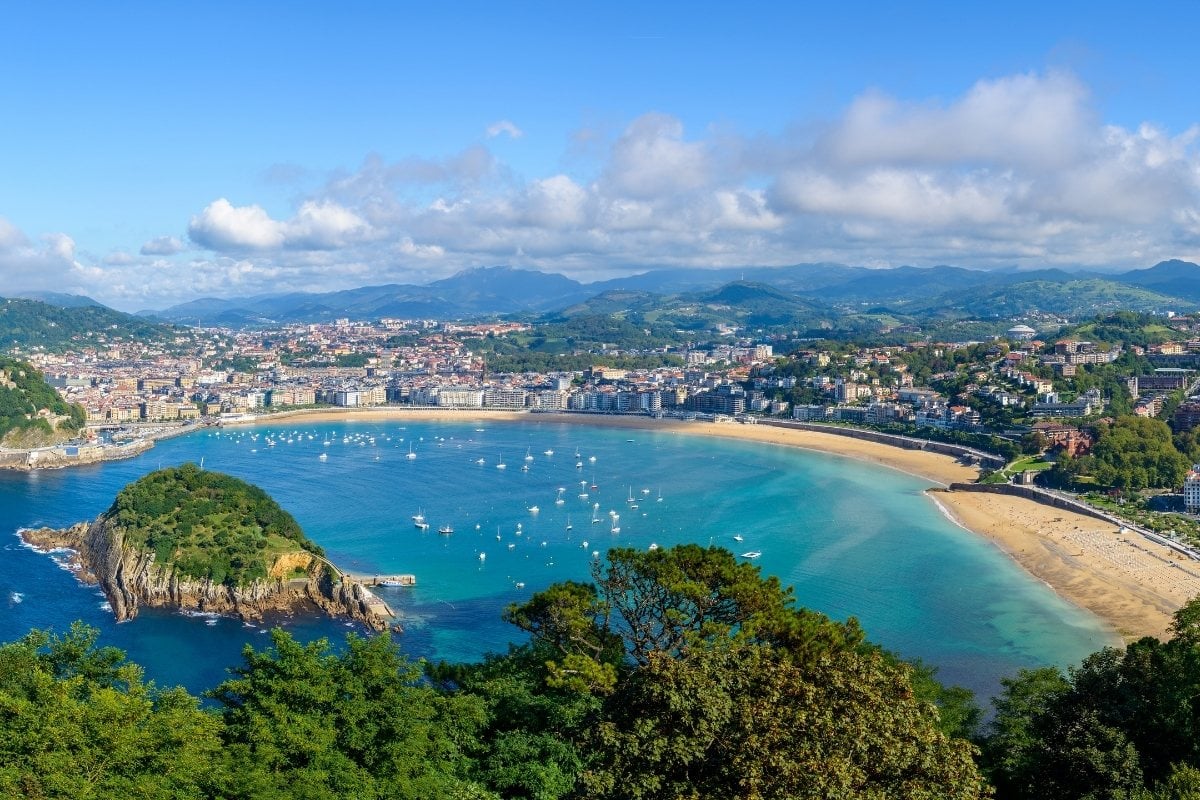
From Catalonia’s unspoilt coastline and Aragon’s scenic architecture to quaint cities in the Basque Country, this northern Spain road trip offers something for everyone.
Is there any better way to see a country than grabbing a set of car keys and having the freedom to explore at your own pace? If this is your favourite way to travel, then how about exploring the north of Spain?
Often it’s when you decide to travel slowly and go off the beaten track, you start stumbling across hidden gems. You’ll take a wrong turning and end up in an authentic Spanish town that isn’t in any of the tourist guide books!
While this road trip through northern Spain takes you to a few famous places, it also gives you the opportunity to explore lesser-known regions. You’ll experience spectacular vineyards a short drive from San Sebastian, the hiker’s paradise that is Ordesa y Monte Perdido National Park and stop by some truly underrated Spanish cities.
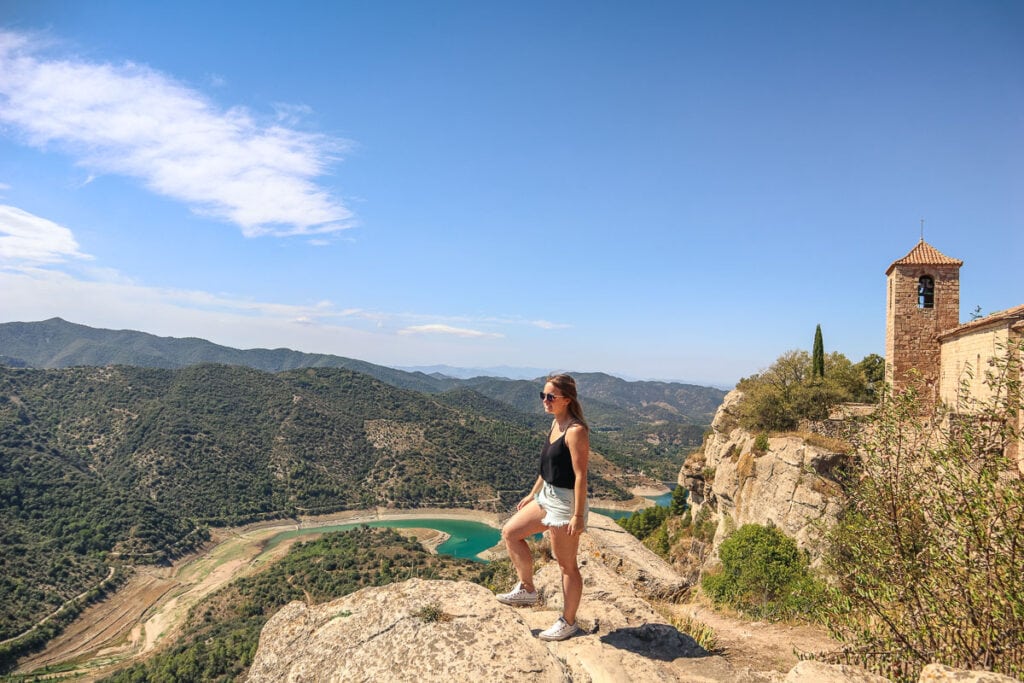
A road trip here through the north of Spain offers so much. Spend your time admiring the scenic coastlines in Catalonia and Asturias, before marvelling at the architecture of Castille and León.
If you’re a foodie, you’ll fall in love with the culinary scene in the Basque Country. It’s absolute pintxos heaven! Meanwhile, if you’re keen on the great outdoors, there are plenty of gorgeous green spaces and natural wonders to explore.
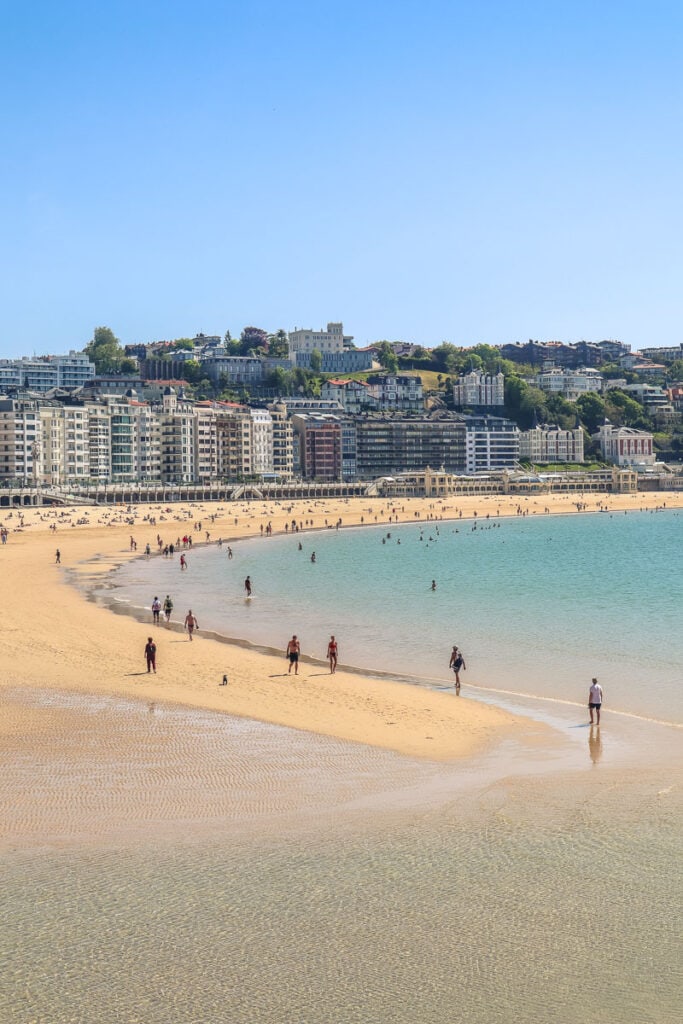
Spain is often associated with summer beach holidays, but it’s worth remembering that many of the interior parts of the country offer just as much natural beauty, with vineyards, mountains, canyons, olive groves and picturesque towns! This road trip itinerary will introduce you to several authentic experiences.
So, whether you’re looking for travel inspiration or you want to start planning your itinerary, this guide will cover all of the best places to visit in Northern Spain on a road trip.
Weather in Northern Spain
This region of Europe has warm summers and cool winters. The majority of people visit during the summer holiday season, when the weather is warmest.
If you want to make the most of the great outdoors, time your trip between May and September. It’s the ideal time for beach days or countryside hikes. During this time, temperatures range between lows of 16°C (61°F) and highs of 26°C (79°F). If possible, I’d suggest avoiding the peak summer (July and August) and travel in May, June or September. You’ll enjoy cheaper prices and won’t be battling against big crowds at the big attractions!
It gets pretty chilly in Spain in winter , but there’s a bit of magic to it! Between January and March the temperatures in the north of Spain range from 4°C (39°F) to 15°C (59°F).
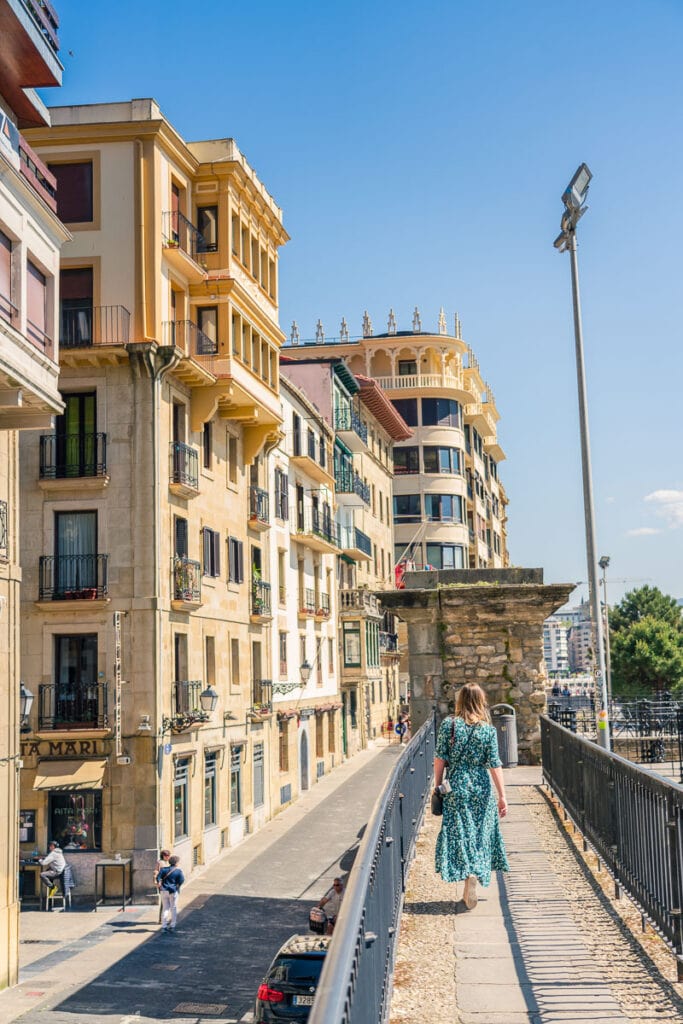
Northern Spain Road Trip Map
If you’re happy to move at a pretty moderate pace, moving on every single day, you could just about fit this itinerary into one week.
However, I’d recommend moving a little slower so you can soak up all the little details in each destination.
Here’s a handy map to go with this northern Spain road trip itinerary, which you can save to make your planning stress-free.
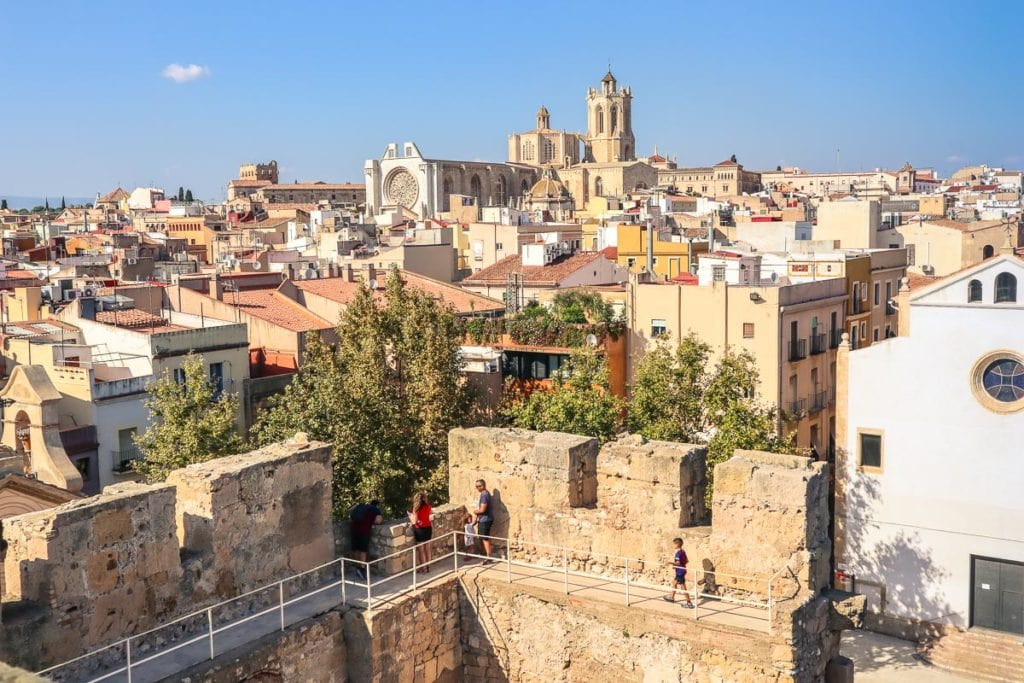
What to pack for your road trip
If you’re wondering what to pack for your trip, this guide to road trip essentials has you covered. From portable chargers to ways to stay entertained on long journeys, it’ll help you create your road trip packing list.
Northern Spain Road Trip Itinerary – Places to Visit in Northern Spain
Northern spain road trip: stop 1 – barcelona.
Barcelona is a great city to start your road trip from. Not only is it an incredible destination in its own right, but it’s also easy to reach by plane. There are lots of car rental options too, both from the airport or the city centre.
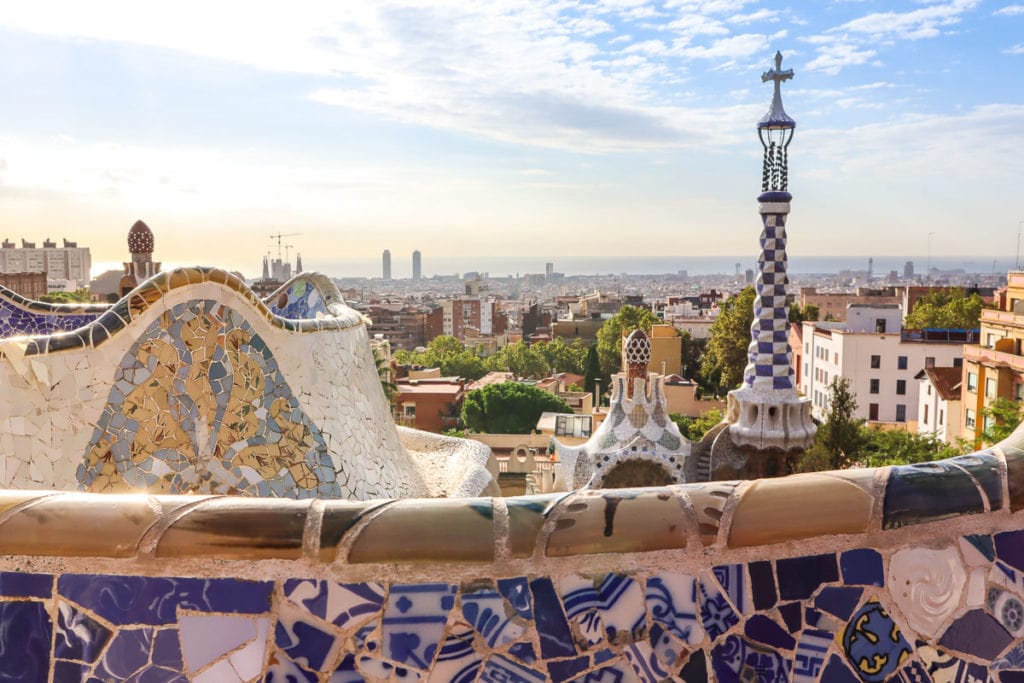
Marking the start of your Catalonia road trip , you’ll quickly fall in love with Barcelona’s scenic shoreline with sweeping views of the Balearic Sea. Enjoy the city’s unique ambience courtesy of street musicians and tapas bars dotted in the atmospheric Gothic Quarter’s narrow streets. I challenge you not to get lost in this mini maze – it’s very easily done, especially after a few glasses of Cava!

At the centre of Barcelona’s bustling social scene is tree-lined La Rambla, which boasts restaurants, cafés, and avant-garde architecture. It’s always busy with tourists, but I’d avoid most of the restaurants around here! Many are classic tourist traps, serving vats of low-quality paella at inflated prices. You’ll find more authentic dining experiences in the small bars in the Gothic Quarter.
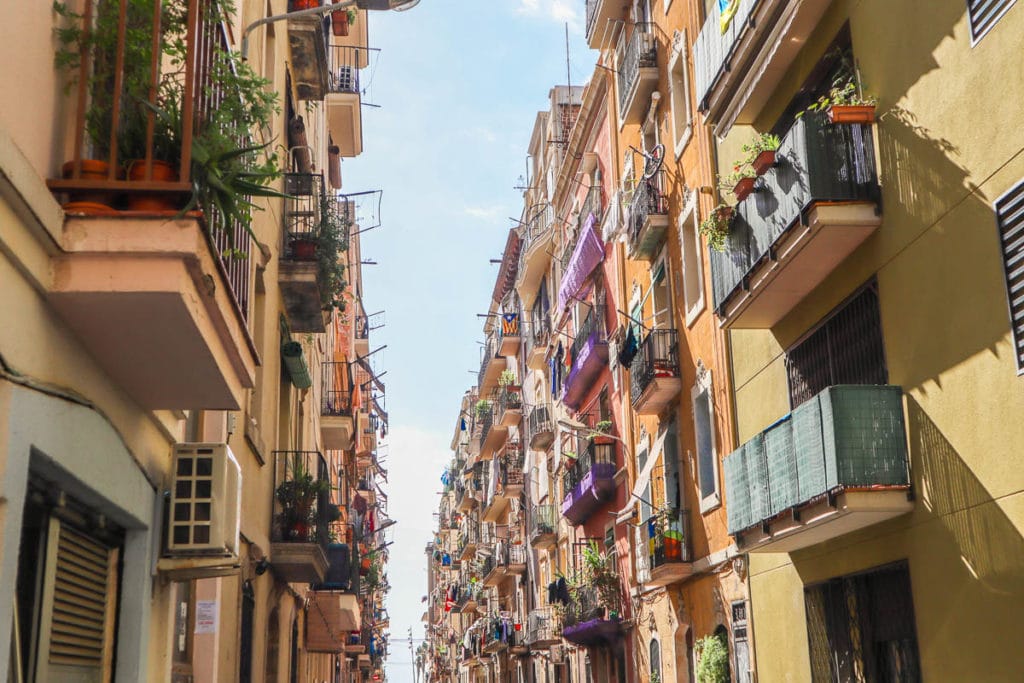
La Boqueria food market is located just off this main street and is an excellent place to take in the amazing ingredients of Catalonia. For a very special meal, book in for a tasting menu experience at Michelin-starred Disfrutar . I’ve been lucky enough to visit twice and I would regard these meals as the best meals I’ve ever eaten! Genuinely!
If you’re interested in art there are lots of great attractions in Barcelona. You could visit the Picasso Museum , the Museu Nacional d’Art de Catalunya or the Fundacio Joan Miro . Oh, and don’t miss a visit to one of Gaudi’s many masterpieces. His unique style is visible throughout the city at locations such as La Sagrada Familia and Parc Guell. I was enchanted by these spots – I’m sure you will be too!
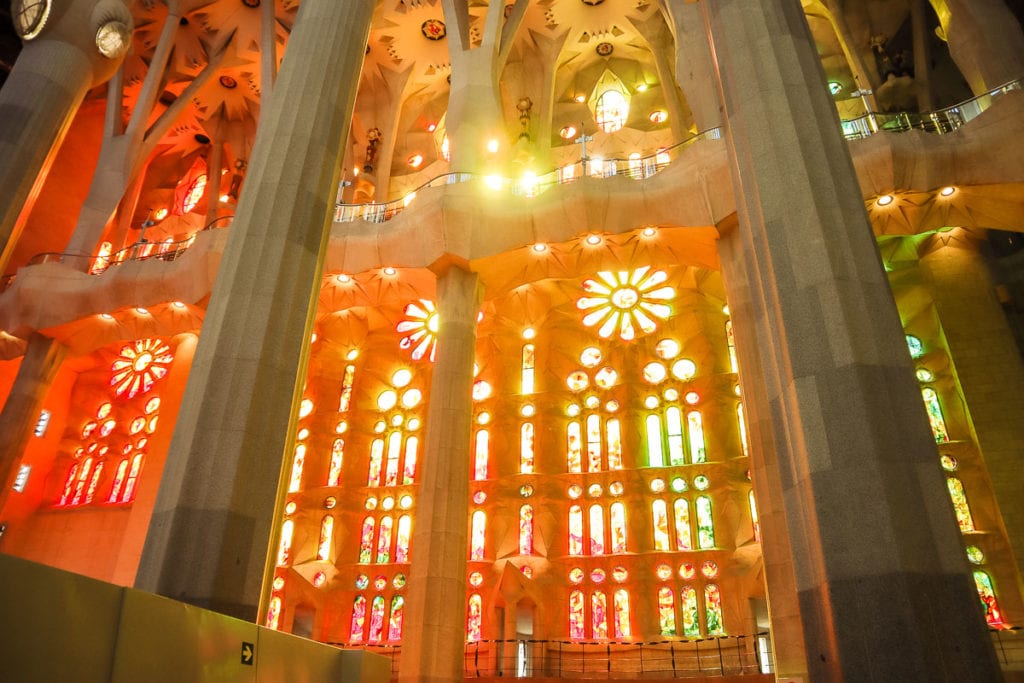
If you fancy a beach day, there’s also a large beach in the city centre, lined with beach bars. It’s amazing how much there is to do in this Spanish city. There really is something for everyone!
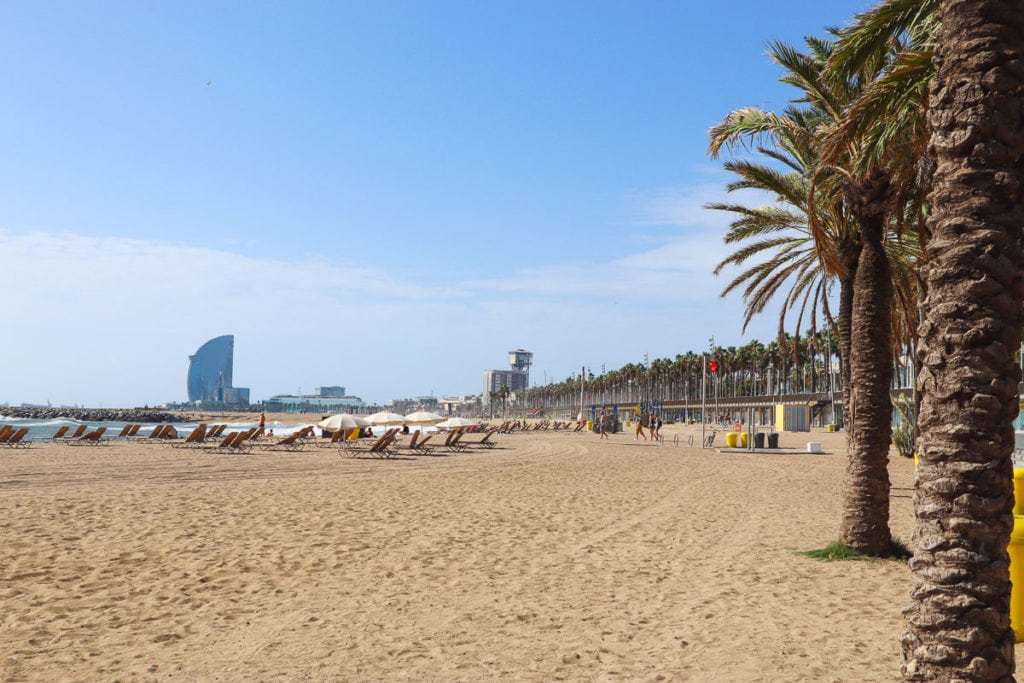
Northern Spain Road Trip: Stop 2 – Costa Brava or Catalonia
If time permits, you might want to head north of Barcelona to Costa Brava, before heading to Montserrat. One of Spain’s most mesmerising coastlines, the area oozes charm with its whitewashed towns and fishing villages.
Alternatively, I loved the area south of here, which includes the underrated Tarragona, Reus and Siurana.
Siurana was a new discovery for me on one of my most recent trips. It’s one of the prettiest villages in Spain and sits on top of a hill in the Prades Mountains. I’d recommend spending a couple of hours there. It’s pretty small so you can wander the streets looking at the Moorish castle, the pretty houses and perhaps stop for a coffee.
The best part about Siurana? The views! Head towards the rocky cliffs and look out over the huge gorge which is filled with a bright turquoise reservoir. I’d suggest visiting first thing in the morning and you should have it all to yourself!
If you want to learn more about Gaudi, but don’t fancy tackling the crowds in Barcelona, I’d suggest stopping by Reus. This small city is where Gaudi was born. You can learn all about his life and architectural wonders at The Gaudi Centre , before checking out some of the city’s buildings which inspired him.
You can read my detailed guide on how to tour this region by car in my Catalonia road trip post.
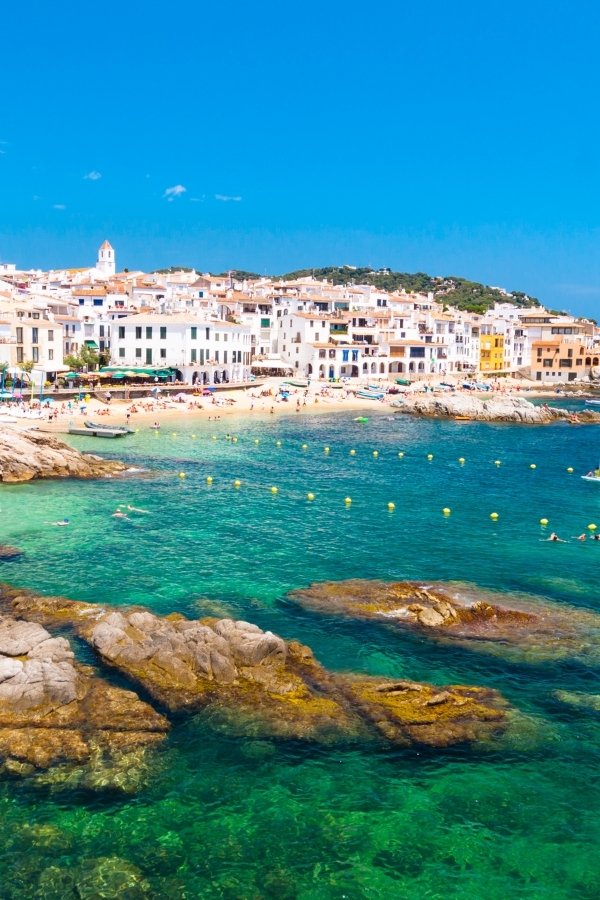
Northern Spain Road Trip: Stop 3 – Montserrat
Montserrat is another must-visit on your road trip through Northern Spain. The area’s top attraction is the Benedictine Montserrat Monastery, perched on a rocky crag surrounded by magnificent cliffs.
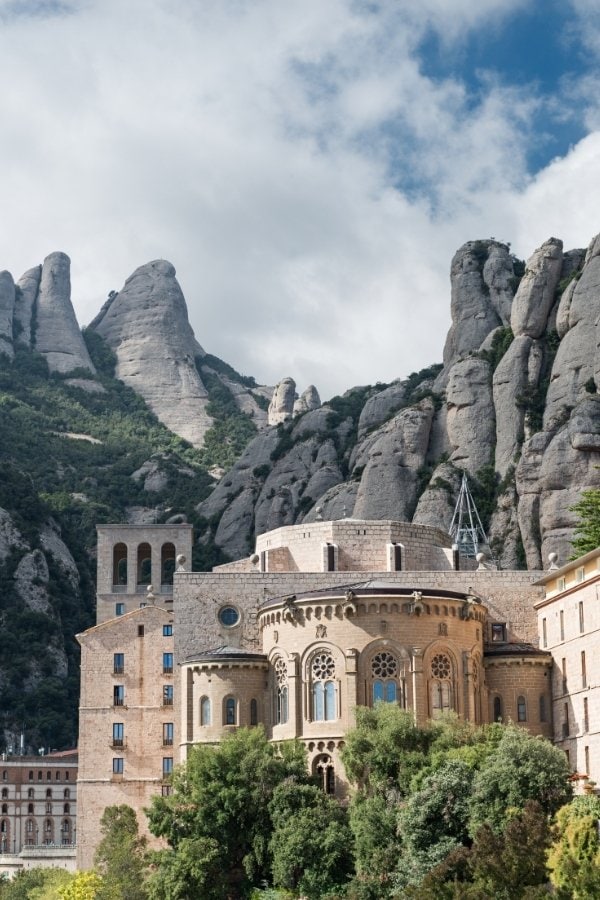
Just getting there is a bit of an adventure, as you reach the monastery via cable car! Once there, enjoy panoramic views of the Catalonian countryside while soaking in the sights and history of the monastery.
Montserrat to Zaragoza: 266 km / 2h 46min approx.
Northern Spain Road Trip: Stop 4 – Zaragoza
Next stop on your journey from Montserrat is Zaragoza, the capital of the Aragon region. This is a great place for museums, architecture, and historical monuments, including the Basílica de Nuestra Señora del Pilar .
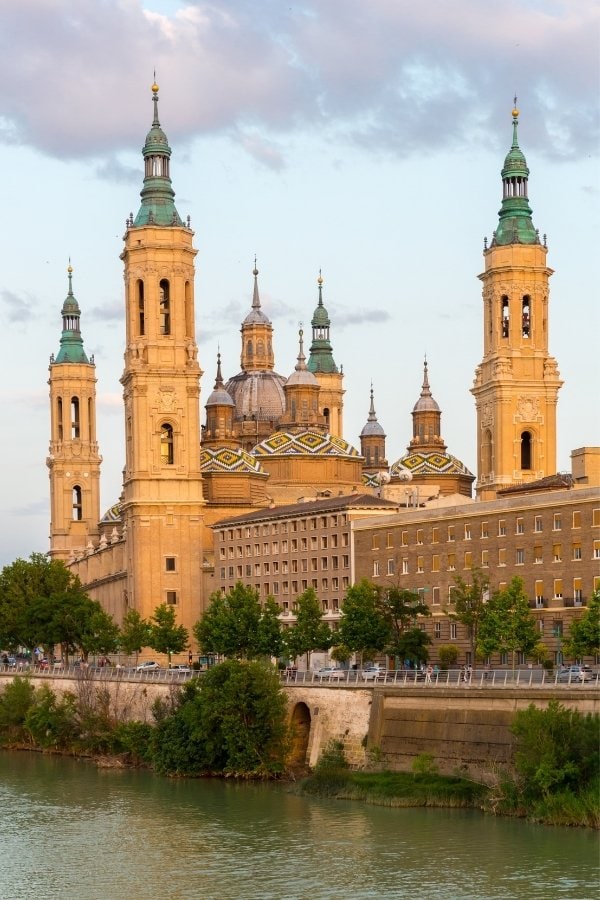
In between sightseeing, I’d recommend a bit of restaurant-hopping at Plaza del Pilar so you can taste some authentically Spanish delights. For a real flavour of the region, sit down to dinner at Restaurante La Borde de Chema . This rustic restaurant offers Aragonese dishes including roast goat, along with plenty of regional wines.
Northern Spain Road Trip: Stop 5 – Ordesa y Monte Perdido National Park
Step away from the glitz and glamour of city life with a visit to the Ordesa y Monte Perdido National Park. This hiker’s paradise has several trails to choose from, each leading to sweeping views of the mountains.
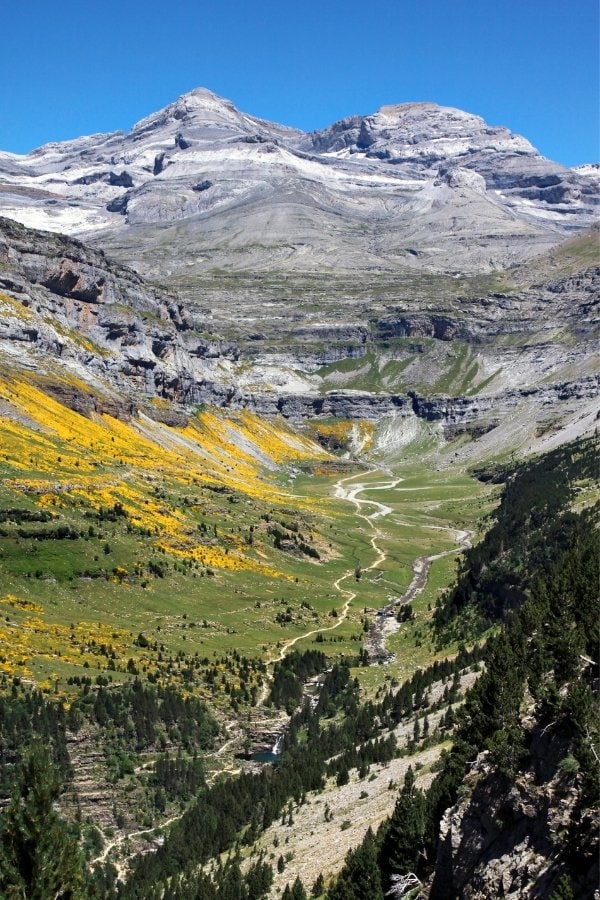
Be sure to pack your camera for this stop on your road trip! It’s one of the most photogenic places on this itinerary, so no doubt you’ll want to snap a lot of photos!
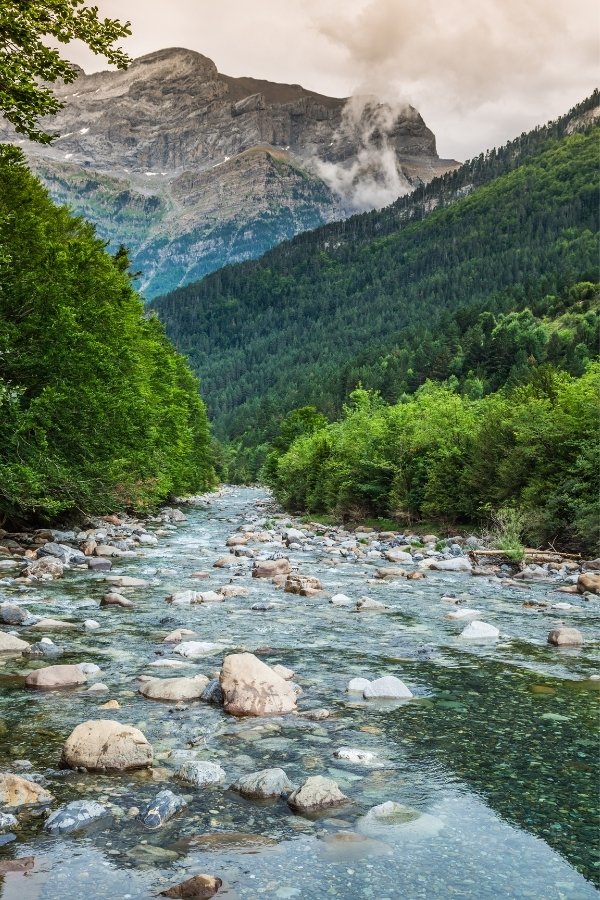
Ordesa y Monte Perdido National Park to San Sebastian: 252 km / 3h 10 min approx.
Northern Spain Road Trip: Stop 6 – San Sebastian
The Basque Country is renowned for its food scene. Every year, many people visit Northern Spain (myself included!) purely for a wining and dining experience like no other. It’s hardly surprising, after all San Sebastian in the Basque Country has the most Michelin-starred eateries per capita in Europe! In fact, there are more in this one city per capita than in London, and that’s really saying something!
The Basque Country even has two restaurants with ‘Green Stars’, Azurmendi and Enoko, which have been recognised for their sustainable, ethical and environmental approach.
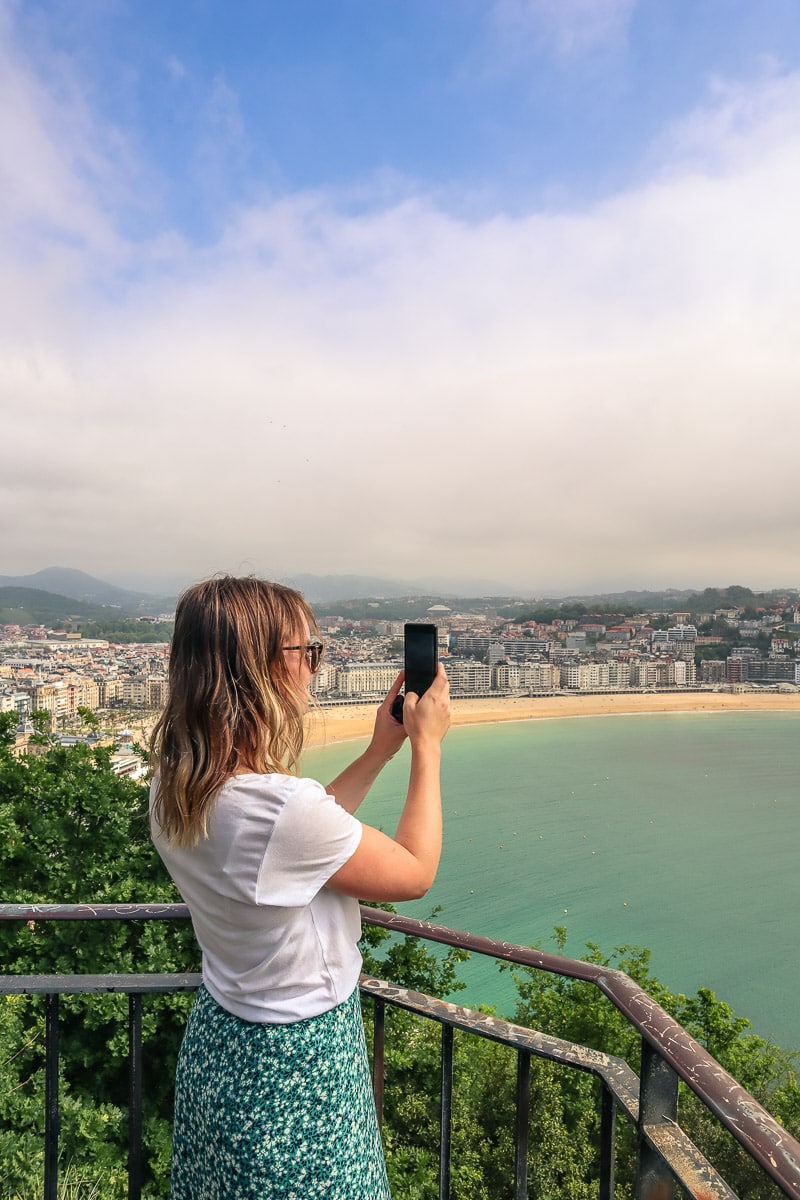
There are two sides to eating out in San Sebastian. You can either go high end with Michelin starred tasting menus, or eat the local way with dish after dish of pintxos (small dishes).
The old town of San Sebastian is filled with tiny restaurants specialising in individual dishes such as Spanish tortillas, prawns on skewers and slow cooked pork. The best way to enjoy a trip like this, is by stopping for food and drinks at multiple bars across an evening – like your very own pintxos tour .

It can be difficult knowing what to eat at each place, so I’d thoroughly recommend a pintxos tour like this one . The guide will give you tips on what to order, how to eat it and all the insider knowledge to make the most of your time in San Sebastian.
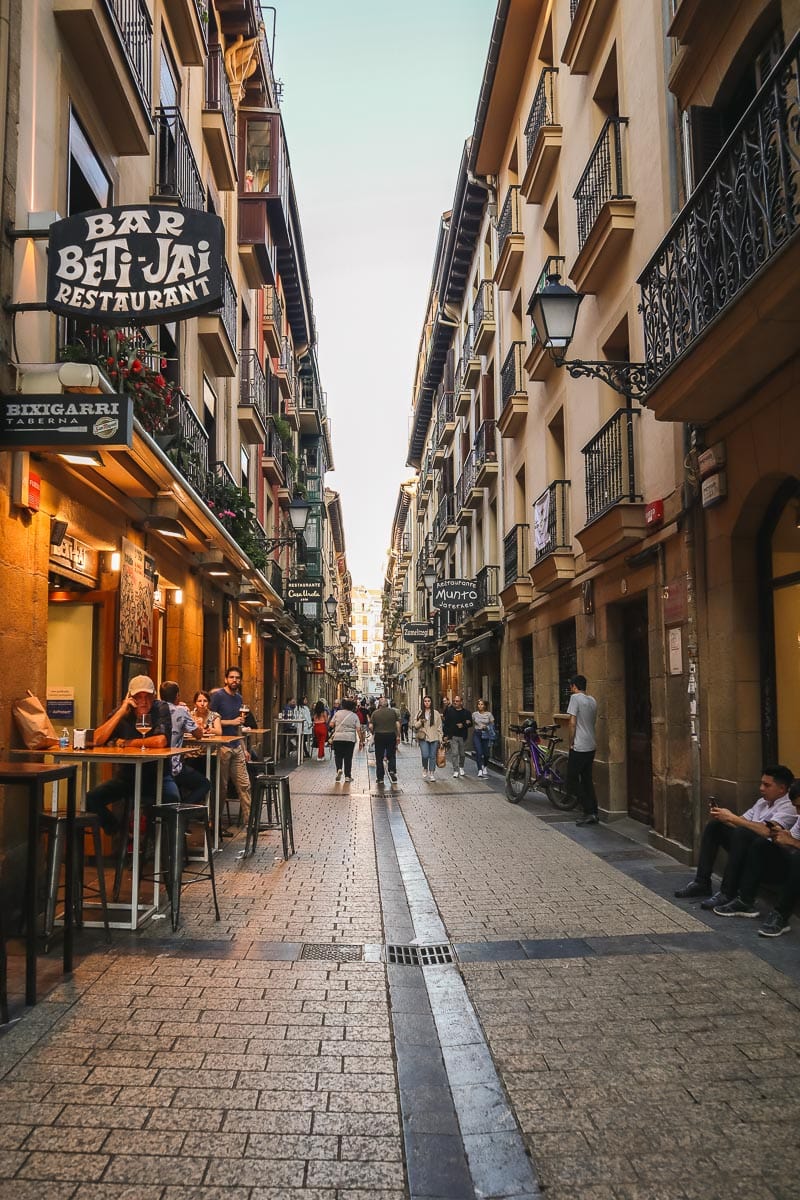
While you can’t go wrong with most restaurants here, I’d recommend the incredible steak, tomatoes and fried padron peppers at Bar Nestor as well as the famous San Sebastian cheesecake at La Viña! I popped all my top recommendations together in my post about the best pintxos in San Sebastian .
Also, if you’re looking for an extra special meal, how about going for a Michelin Starred meal with a view at Mirador de Ulia? We had a very memorable meal there!
San Sebastian is also a great beach destination, with turquoise waters, white sand and some great surf spots too!
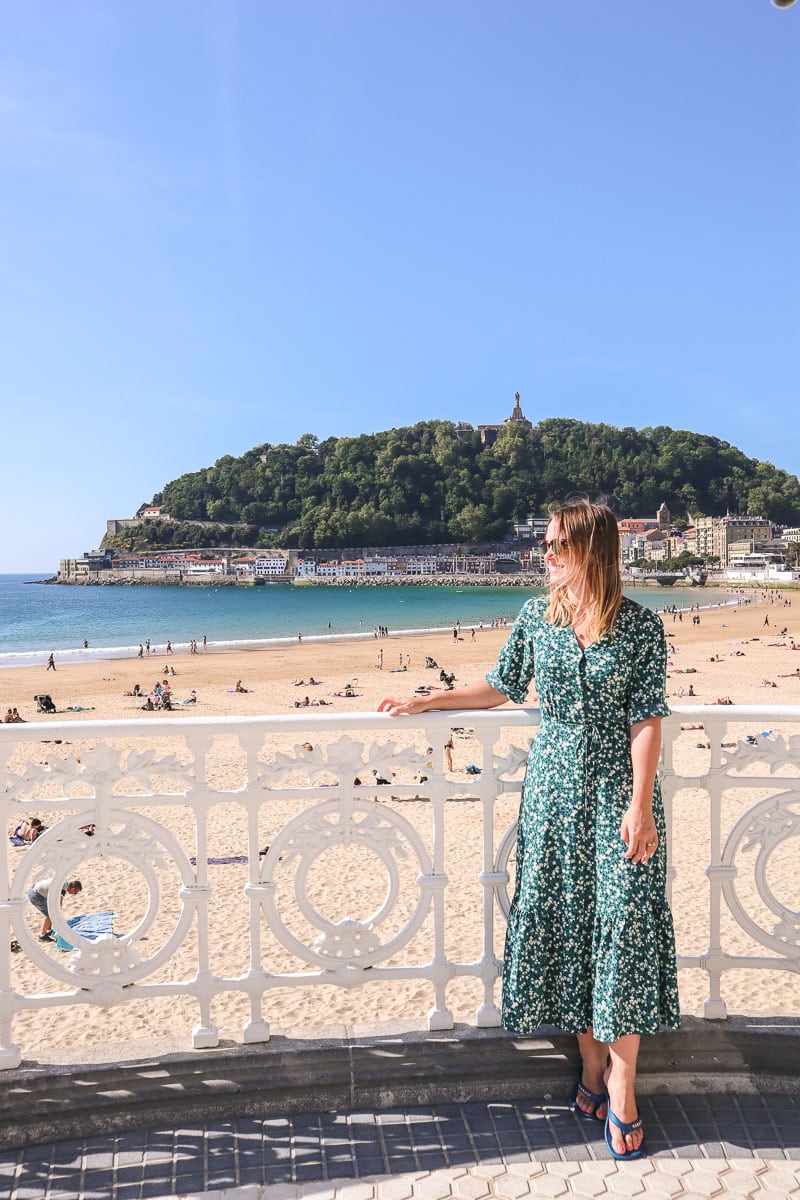
If you want to get off the beaten track in this region, how about spending a day wine tasting? Just 30-minutes away by car you’ll find wineries including Hirutza , where the local Txakoli wine is produced. This is a dry and lightly sparkling white wine, which is absolutely delicious!
The vineyards are in a really spectacular location too, with huge mountains and lush green valleys all around. Once you’ve toured the winery, you’ll get to taste some of the wines for yourself, paired with a few pintxos of course!
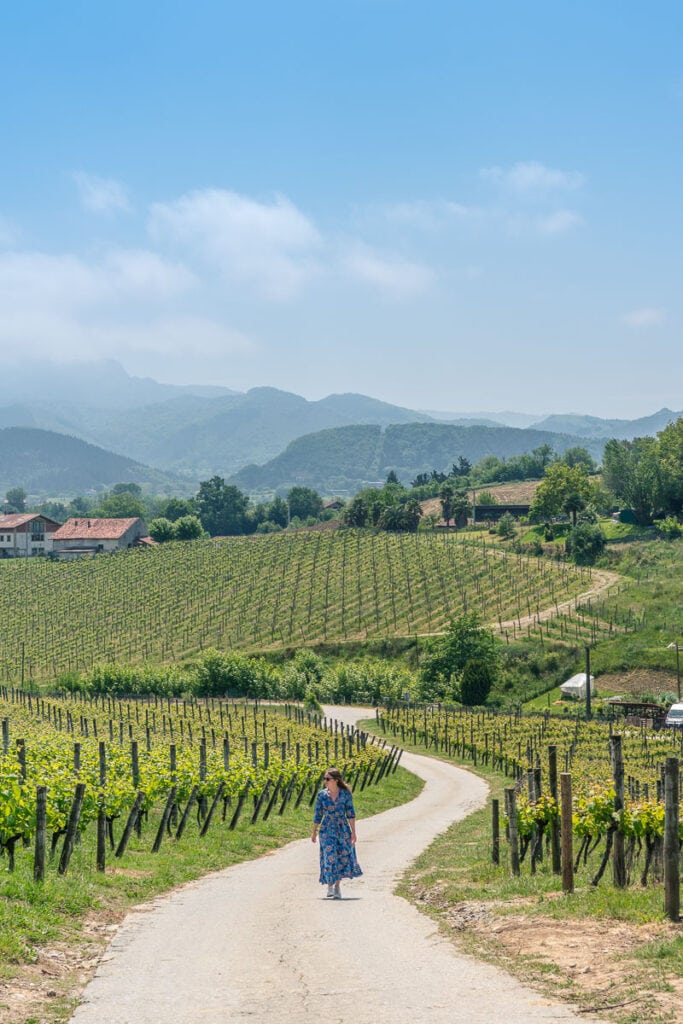
Northern Spain Road Trip: Stop 7 – Bilbao
Bilbao, the capital of the Basque Country, is home to centuries-old alleyways and modern-day architecture. The bustling city is small enough that you can explore it on foot, but big enough to keep you entertained for many hours.
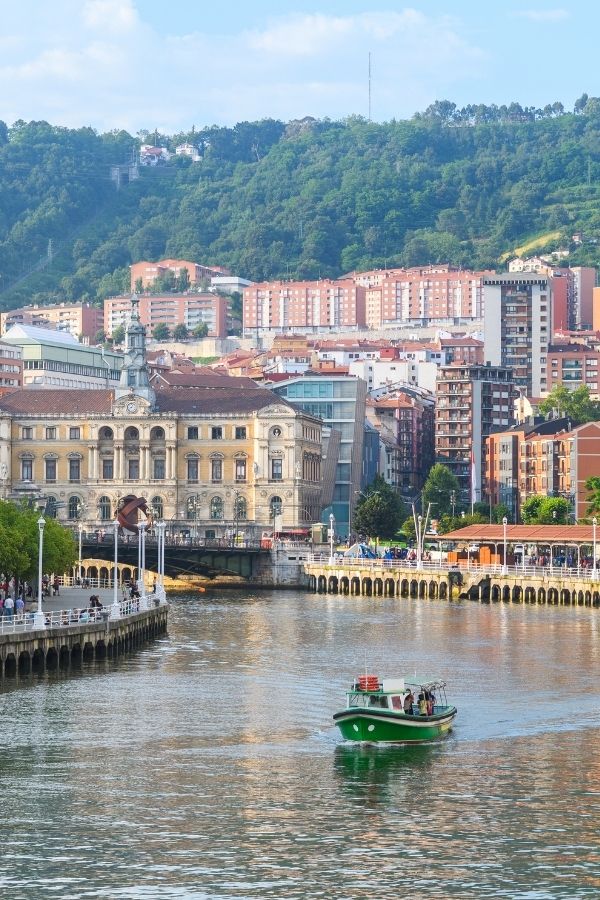
One place you simple have to visit is the world-famous Guggenheim Museum , set by the Nervión River. This art gallery has an incredible collection, as well as being housed inside a curved metal masterpiece by one of my favourite architects, Frank Gehry.
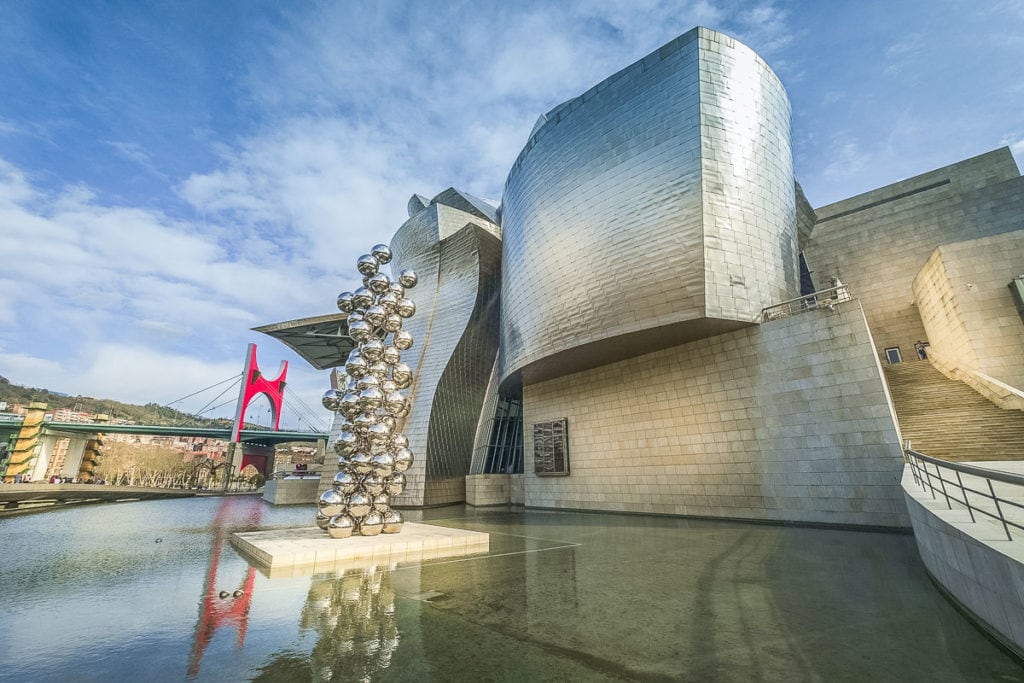
This is another great city for pintxos, so be sure to spend some time in the Old Town refuelling. You could also dine at one of the many Michelin-starred restaurants in Bilbao.
For one of the best viewpoints in the Basque Country, make your way to Gaztelugatxeko Doniene, made famous by Game of Thrones. The scenic hike is around 3km and features several fortified viewpoints. The views are worth the tired legs, I promise you!
Northern Spain Road Trip: Stop 8 – Santander
Afterwards, stop by Santander, where you can enjoy some seaside fun on the small town’s myriad of beaches. Dive into the water or enjoy a trek to the Cabo Mayor Lighthouse.
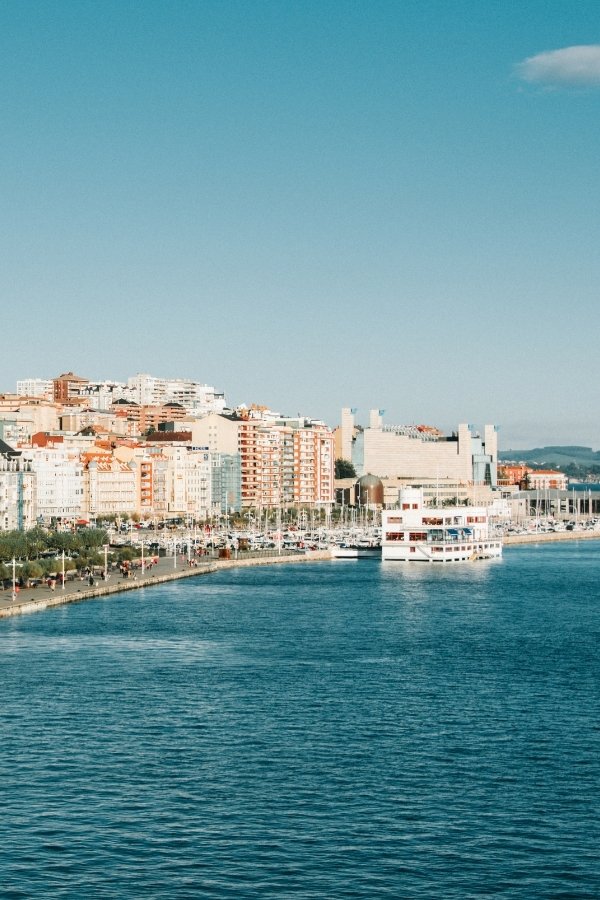
Away from the coastline, grab a bite at Plaza de Canadio before exploring Santander’s Cathedral. It features two churches built on top of one another.
Santander to Llanes: 89 km / 56 min approx.
Northern Spain Road Trip: Stop 9 – Llanes and Piloña
As you drive from Bilbao to Llanes and Piloña, the road trip scenery really steps up a notch! Take in the views of the mountains and rolling hills which serve as the ultimate driving backdrop!
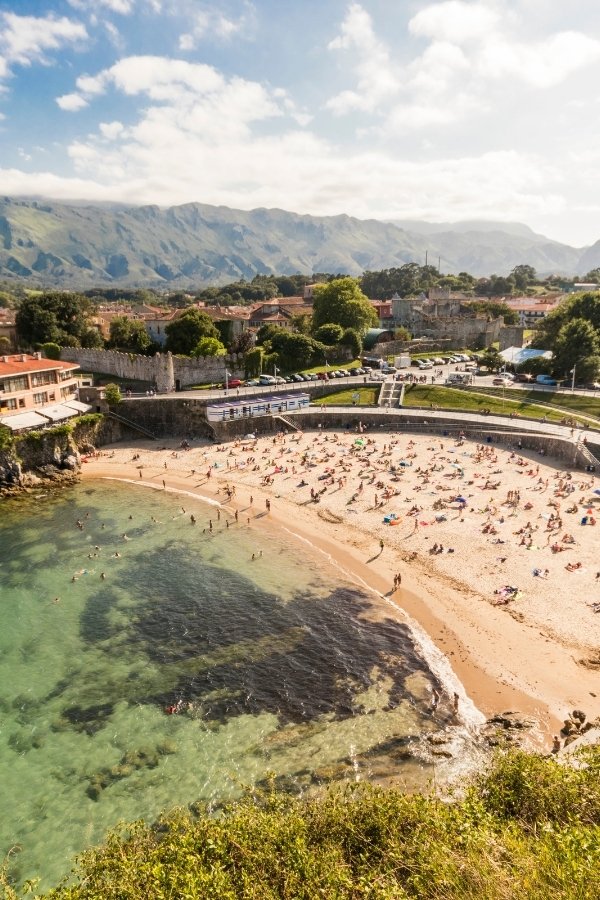
Llanes is a small-town region boasting medieval magic at every corner, as well as beautiful beach views. After some of the more touristy stops on this trip, this area is more chilled out and authentic.
Once in Piloña, you could hike up to the Area Recreativa del Monte Cayon, where sweeping views over Asturias’ Picos de Europa await. Alternatively, opt for a more strenuous hike at Picos de Europa, a green paradise surrounded by mountains.
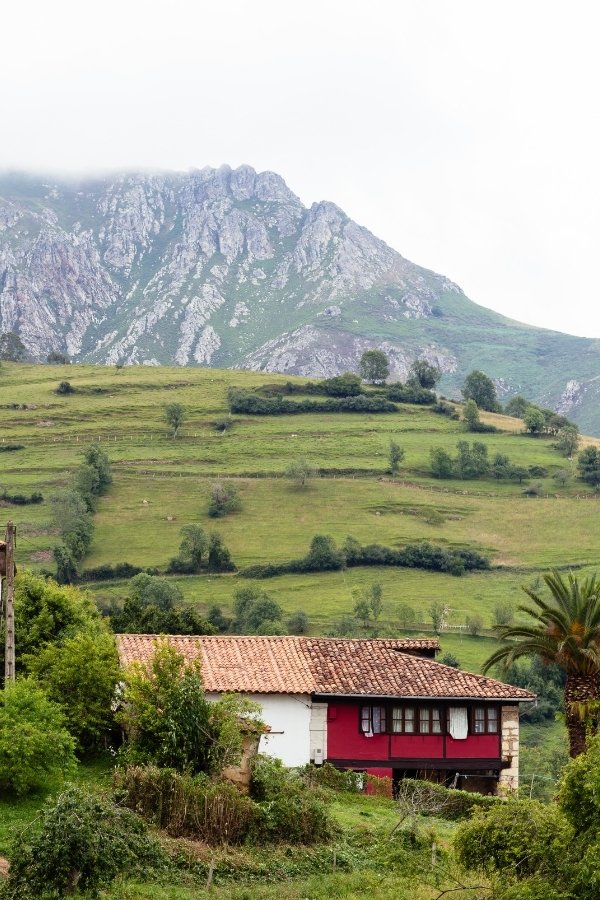
Northern Spain Road Trip: Stop 10 – Gijon and Oviedo
Gijon has a whole load of charm! The city’s old town, nestled on top of a cliff, is filled with a mix of fine-dining and casual eateries and boasts iconic Roman baths and a scenic promenade.
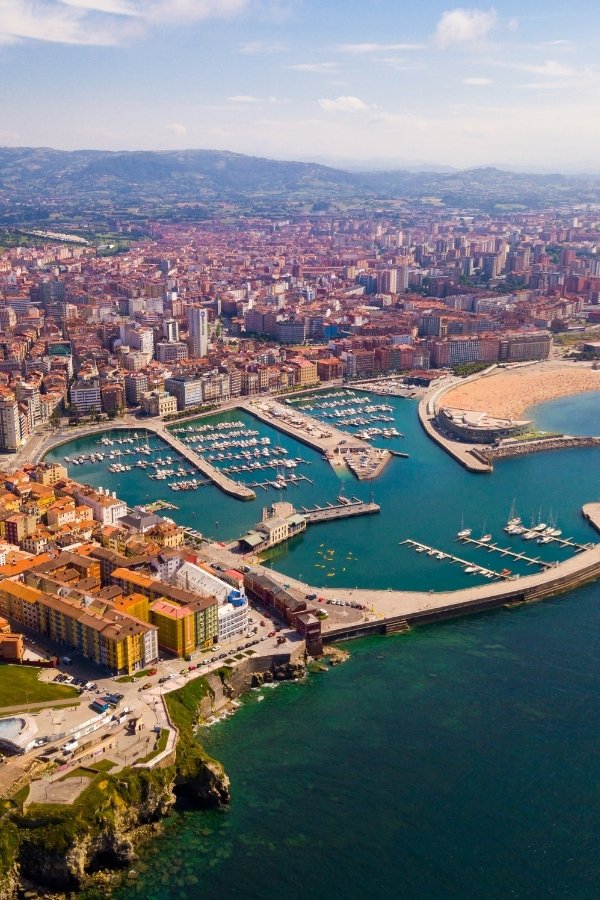
Oviedo, the region’s capital, is a compact city with a lively atmosphere owing to its student population. Enjoy a culinary extravaganza at the city’s many tapas bars ( Gloria Oviedo isn’t to be missed) and fine dining spots. There’s plenty more to do in Oviedo too, including shopping, museum-hopping, and marvelling at the city’s architecture.
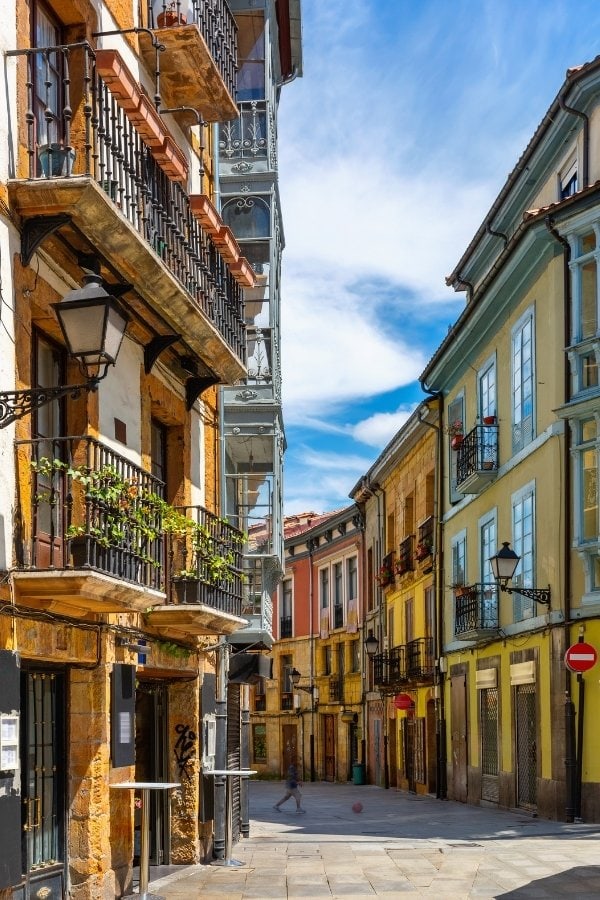
Oviedo to León: 125 km / 1h 28 min approx.
Northern Spain Road Trip: Stop 11 – León
León, the northernmost city in the region, is ready to welcome you with open arms. Top of the list of attractions here is the Catedral de León, which boasts impressive towers and colourful windows.
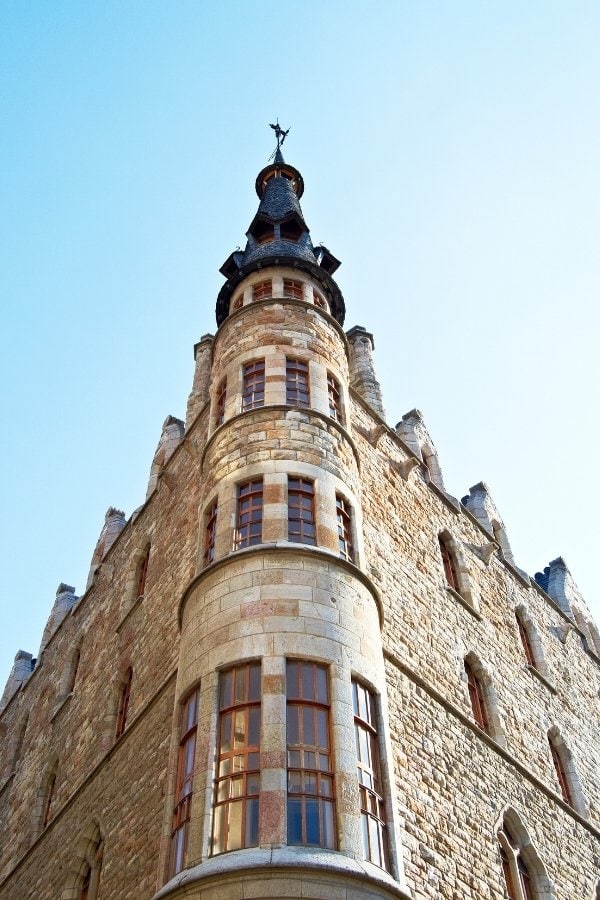
For a quintessential Leon experience, stroll through Plaza Mayor and enjoy a bit of people watching. This is also a great area for trendy restaurants, tapas bars, and impressive architecture.
Northern Spain Road Trip: Stop 12 – Valladolid and Salamanca
South of León is Valladolid, a small city famed for its architecture. The Cathedral of Valladolid is a sight to behold, as is the Museo Nacional de Escultura and the exhibits inside.
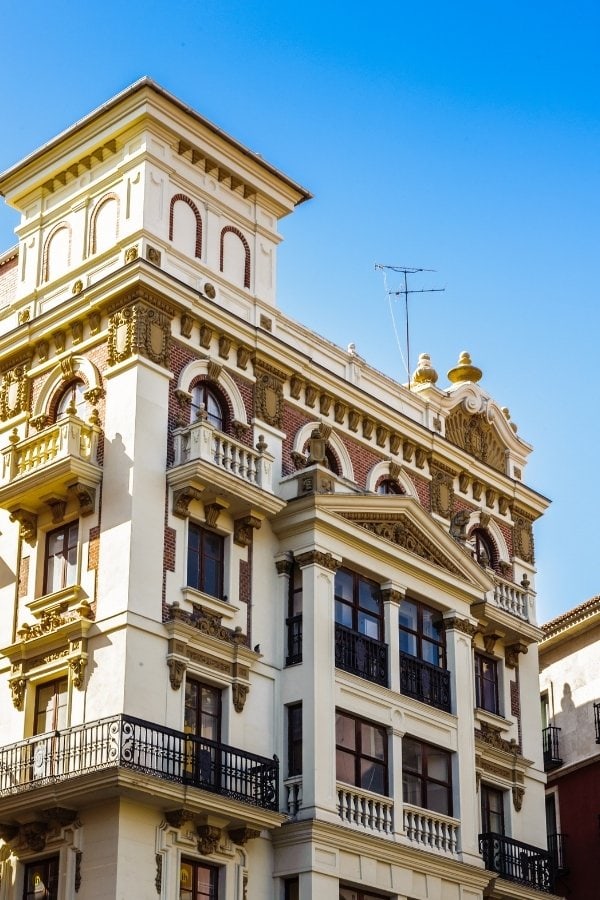
The final stop in the region is Salamanca, which has a burgeoning foodie scene that really delivers the heart and soul of Northern Spanish cuisine. In between the culinary experiences, enjoy visits to the Old and New Cathedral , Clerecía Church, and the Convento de San Esteban’s plateresque. For incredible viewpoints over some of the city’s attractions, be sure to visit the Roman Bridge.
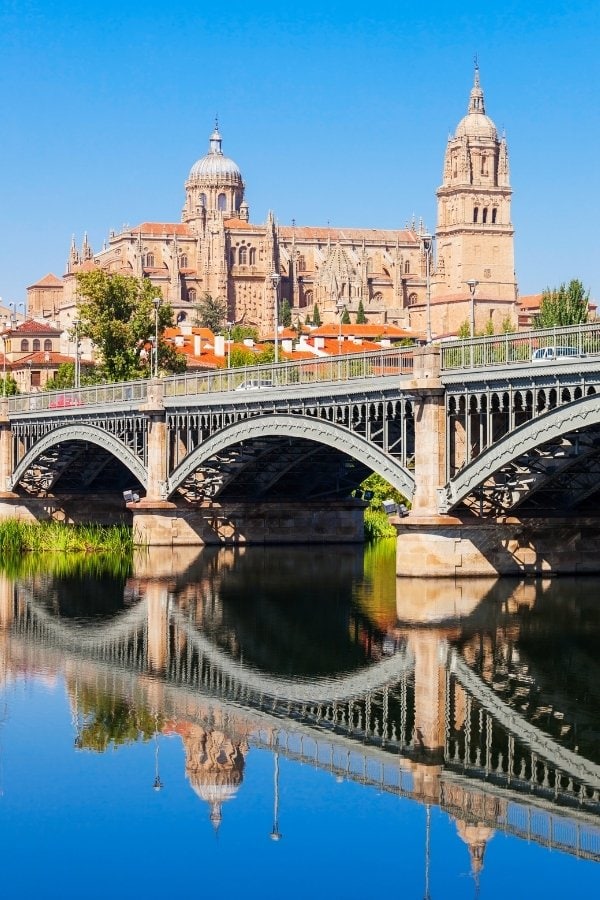
Where to Stay on a Northern Spain Road Trip
If you’re wondering where to stay in northern Spain, here are a few of my top choices along this route.
Hotel Palafox , Zaragoza
This is a great luxury hotel, offering sweeping city views from the rooftop pool.
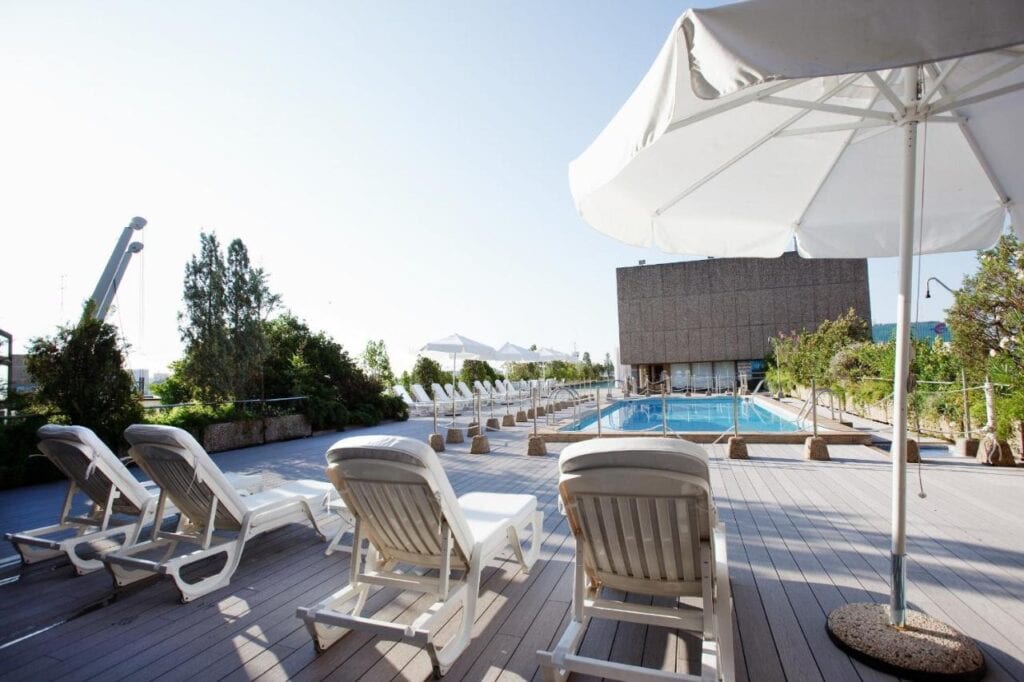
Hotel Carlton , Bilbao
This grand hotel in Bilbao offers spacious rooms with chic decor and a great restaurant serving regional delicacies.
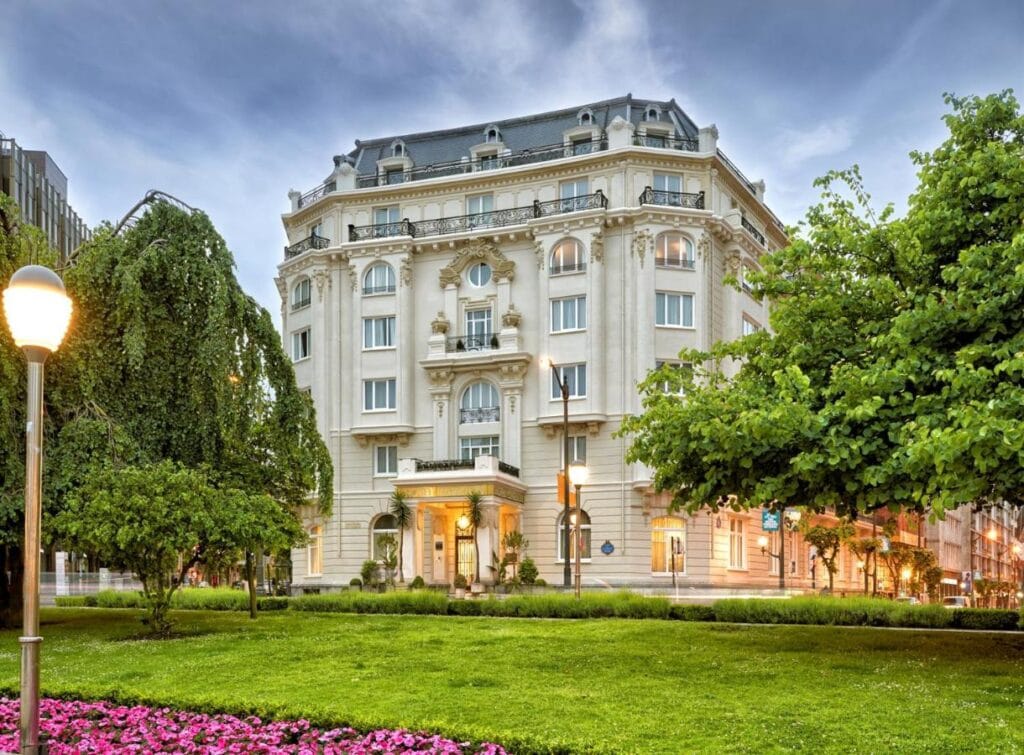
Hotel Villa Soro , San Sebastian
Enjoy a tranquil and chic hotel stay, just a short walk from the old town. This smart villa offers a country-house feel for your foodie city trip. Wondering how to get around? This hotel offers free bikes, making it easy to get around and see the sights.
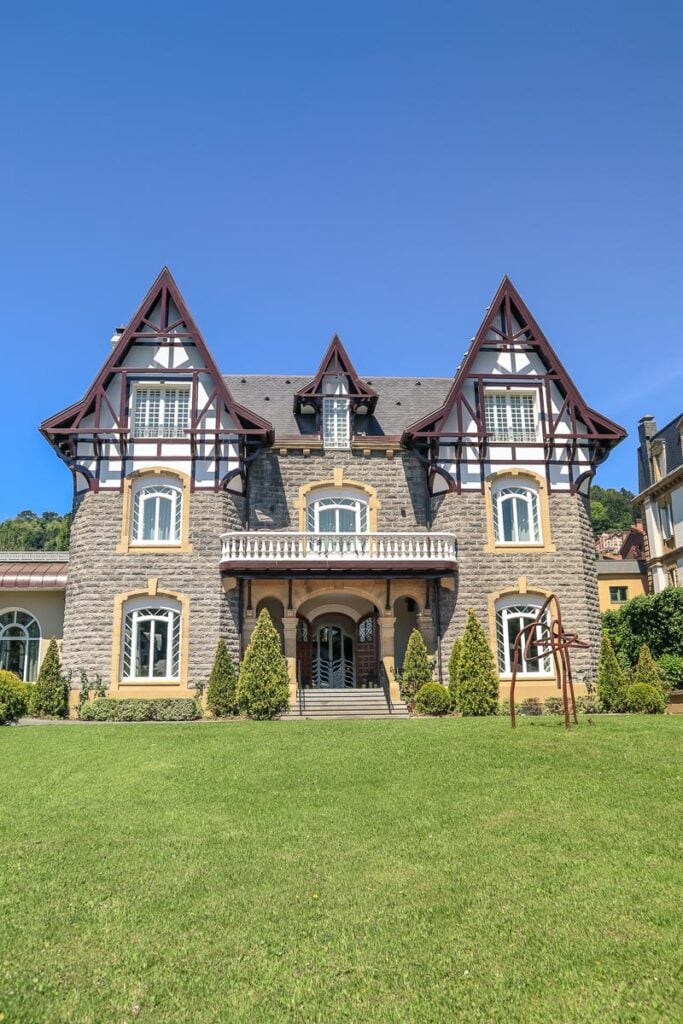
Parador de Turismo de León , León
This luxury hotel’s rooms feature antique furnishings and a balcony. There’s also a restaurant serving the region’s top wines.

I hope you’ve enjoyed reading my Northern Spain road trip itinerary. There are so many great places you could visit, it’s been hard to narrow it down to just a handful.
My best advice is to use this guide as a starting point, but don’t be afraid to add some extra spots along the way too. If you’re wondering where else to visit in Spain, check out my southern Spain road trip itinerary .
For more great road trip itineraries, check out my detailed guides to driving northern Italy and southern Italy .
Chloe Gunning
With a passion for food, fun and adventure, Chloe is the content creator behind one of the UK's top travel blogs Wanderlust Chloe. From volcano boarding in Nicaragua, to sailing around Sicily and eating her way around Japan, her travels have taken her to some of the coolest spots on the planet. Named Travel Influencer of the Year in 2022, Chloe regularly works with a number of tourism boards, producing inspirational travel content across multiple platforms. Find out more about Chloe here.
Leave a comment Cancel reply

Home » Destinations » Europe » Spain » 5-14 Day Spain Itinerary: A Guide For Planning Your Perfect Spain Trip
5-14 Day Spain Itinerary: A Guide For Planning Your Perfect Spain Trip
Links in this article may earn us a little money if you book/ order stuff. More here .

Plan Your Perfect Spain Itinerary with These Detailed Templates!
Want to explore Spain but confused about the perfect itinerary? You are not alone! It can be a true challenge to determine how many days to spend exploring.
From 5-day Spain itineraries to 7 or 10 days, to 14-day itineraries – there are certainly lots of different routes and options to choose from. The hard part? None of the routes are necessarily bad or wrong since there’s just so much to see and do all around Spain!
Spain is one of the most visited countries in the world. Because of its popularity, Spain knowledge is really flowing around the travel world these days!
It’s no secret that Lisa lived in Spain and took full advantage of her location (and her Spanish language knowledge)! So, she’s experienced quite a few of the places we recommend below for a great stop on your itinerary!
Spain Itinerary Overview
Best Time to Visit: Generally, summer is the hottest and winter is colder and wetter, but regional exceptions apply. March-June and September-end of October are best.
Getting Around: Trains ( RENFE ) and buses ( Alsa ) are reliable. A rental car in Spain is a must-have for smaller towns.
Popular Places to Visit: Barcelona , Madrid , and Valencia for larger cities, and Granada , Seville , and Córdoba are worth a look, too.
Where to Stay: Check for hotels in Spain here and Check for hostels in Spain here .
Table of Contents
Spain Itinerary – 5 Days
If you plan on travelling through Spain for only 5 days, it’d be best to fly into one of the bigger cities as they are usually well connected with other European cities.
Depending on your route, you can either take public transport if the travel times align with your plans or opt for a rental car if you would like more flexibility.
As with the other Spain itineraries in this blog post, our 5-day itineraries are pretty fast-paced. However, since it is pretty much impossible to go top to bottom and actually see parts of the country we decided to write two separate Spain itineraries for 5 days.
One covers the north and northeast of Spain while the other itinerary covers the south of the country . Choose the one that is more suitable for your interest and travel plans and feel free to modify the written itineraries however you see fit!
Spain Itinerary 5 Days – Northern Trip
For this classic 5-day trip across the northern parts of Spain, the total driving time is about 8 hours and covers around 750km .
If you rent a car, given this exact route, there are tolls on most of the highways so keep that in mind that it may be longer if you took non-tolled roads that may be more indirect. A bus would be able to breeze right along these highways, however.
navigate map
Spain Itinerary 5 Days – Northern Trip Overview
Day 1: Barcelona
- Day 2: Half-Day Barcelona/ Zaragoza
- Day 3: Logroño
- Day 4: Donostia-San Sebastián
Day 5: Bilbao
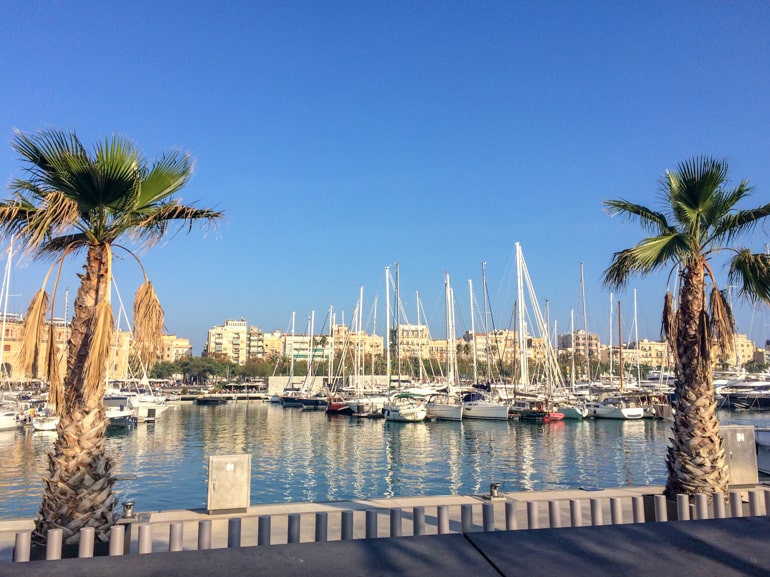
Barcelona is a good city to start a road trip since it is a popular tourist destination and thus has frequent flights to other European or International cities. Barcelona is the capital city of Catalonia which has its own unique culture and language next to Spanish.
Since it is such a popular city, the car rental industry is very well developed and it is easy to pick up a rental car from the airport or in the city.
Find your rental car in Barcelona here .
Alternatively, the bus station in Barcelona is great and easy to reach from the centre. There are numerous connections to Zaragoza which will be the next stop on your 5-day Spain itinerary.
Accommodation in Barcelona : As a super popular tourist destination, there are lots of hotels and apartments available in Barcelona.
Check here for Accommodations in Barcelona .
Specifically, for hotels check out Catalonia Born Hotel with a boutique style and rooftop pool in the city centre and close to the beach.
If you travel by car, Sallés Hotel Pere IV is a lovely and affordable hotel with spa in the heart of the city with a private parking garage onsite .
As for hostels, you can check out Barcelona hostels here. Specifically, we liked Kabul Hostel . This place even made our list of favourite hostels across Europe .
Overall, since Barcelona is so popular we strongly advise you to book in advance – especially during summer – as it can get very expensive otherwise.
Must-see Attractions in Barcelona:
- Sagrada Familia
- Casa Batlló
- The National Catalonian Arts Museum
We’ve written a whole guide on some of the incredible places to visit in Barcelona if you are interested in seeing more!
Day 2: Barcelona/Zaragoza
On the second day of your 5 days in Spain, you’ll spend the morning in Barcelona (you’ll get a cafe con leche y croissant in any cafe/bar for quite cheap if you get off the main tourist roads) and then drive from Barcelona to Zaragoza later in the day.
The drive from Barcelona to Zaragoza will take you approximately 3 hrs 10 min by car (includes a toll road), 3,5 hrs by bus and 1,5 hrs by train . If you end up taking the train, try to book in advance if you can as this will usually end up being cheaper.
Accommodation in Zaragoza: Since Zaragoza is a smaller city, there are fewer accommodations to choose from – but still lots of really great options.
Check here for hotels in Zaragoza .
Specifically, we love the look of Hotel Sauce . This bright and airy hotel is located right in the city centre and offers a homemade buffet breakfast, air conditioning, and private parking onsite for those travelling by car.
If you are looking for a rooftop pool, Hotel Palafox has you covered! Also located right in the heart of the city, the hotel has a cool decor, great city views, tasty breakfast, and also has parking and air conditioning!
There aren’t a ton of hostels but the ones that do exist are well-rated – so you can check here for hostels in Zaragoza .
Must-see Attractions in Zaragoza:
- Basílica del Pilar
- Aljafería Palace
- Cathedral San Salvador
Day 3: Logroño
On your third day, you will drive from Zaragoza to Logroño which is the capital of the autonomous region of La Rioja and known for its delicious wine.
If you get the chance visit one of the wineries and do a wine tasting – please plan ahead if you’re travelling by car since drinking and driving is a big no-no!
The drive will be a lot shorter than the day before. By car, it’ll take you approximately 1 hr 40 min and by bus the journey would be around 2 hrs if you get a direct bus.
Accommodation in Logroño : Similarly to Zaragoza, Logroño is a smaller city with many great accommodations in the heart of the city.
Check here for apartments and hotels in Logroño .
Specifically, Hotel Murrieta is a popular and very affordable option with a good breakfast right in the heart of the city. If you drive a car, Hotel Calle Mayor is a more charming (but still very affordable) hotel with secure underground parking at the hotel.
If you are looking for a hostel in Logroño, there aren’t many but the ones that exist are very good. You can check here for hostels in Logroño .
Must-see Attractions in Logroño :
- Cathedral of Santa María de Redonda
- Church of San Bartolomé
- The Bodegas (Wineries)
Day 4: Donostia-San Sebastián
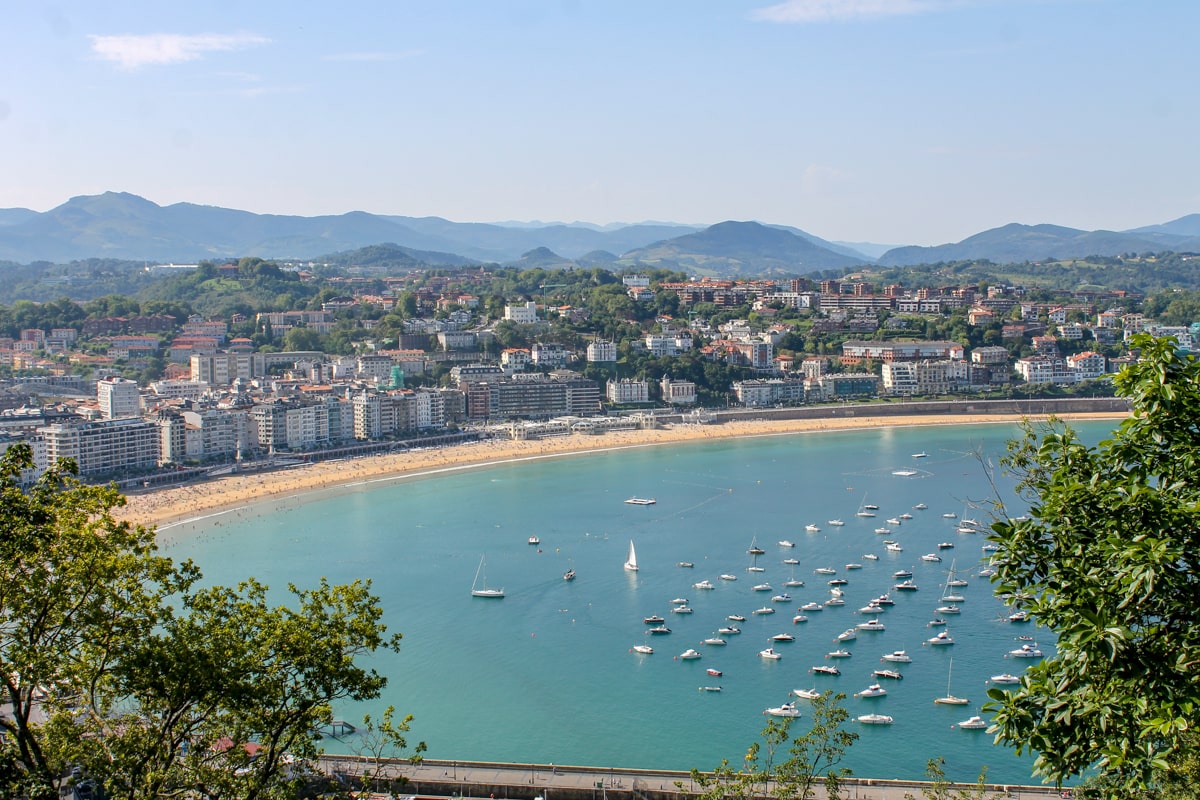
Some would consider San Sebastián one of the most beautiful towns in Spain and Lisa can see why.
When she lived in Bilbao she visited San Sebastián quite a few times and really enjoyed the vibe of the town (and having a beautiful beach so close). Don’t forget to eat some delicious Pintxos since San Sebastián is especially known for them!
The drive from Logroño to San Sebastián takes around 2 hrs by car, and between 2 and 5 hrs by public transport .
Since you are travelling between two smaller cities the connections are not that great and we would recommend planning ahead to compensate for this.
Accommodation in San Sebastián : San Sebastián is one of the most expensive towns in Spain and very popular among luxury travellers.
So, don’t be surprised if accommodations seem a little more expensive overall. That said, you can still find a great place to stay that suits your budget and style if you’re not looking for luxury.
Check here for hotels in San Sebastián .
Specifically, you can check out Casual de las Olas San Sebastián . This hotel is a bit further from the old town and beach but makes up for it in sleek decor, breakfast, and air conditioning.
If you want more of a laid-back guesthouse feel, check out Talaia HT . This authentic and cozy guesthouse is located in the heart of the old town – and has public parking nearby .
If you are looking for a hostel, you can find great hostels across San Sebastián here . Wherever you book, our advice is to book early to find deals and generally save money when booking.
Must-see Attractions in San Sebastián :
- Urgull Hill
- Plays de La Concha
- San Sebastián Cathedral
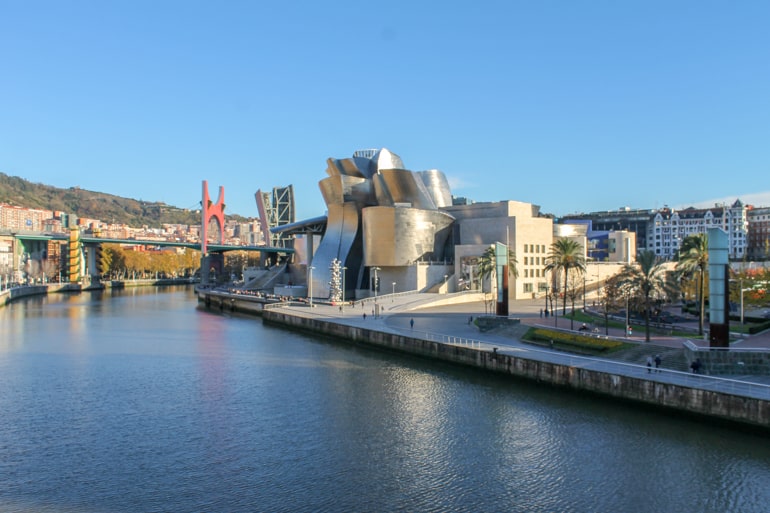
Bilbao has to be one of Lisa’s favourite Spanish cities. Not because it is especially beautiful, but because she lived there for a few months and it felt like home from the beginning. If you get the chance, take the metro to one of the beaches – you won’t regret it!
The drive from San Sebastián to Bilbao is a short and beautiful one as you will drive through some mountainous regions. By car it’ll take you approximately 1 hr 15 min and by bus the journey will be around 1,5 hours .
Bilbao also marks the end of this 5 day Northern Spain itinerary.
Bilbao is a good city to fly out of as it is one of the biggest cities in the region and well connected to bigger airports in other European cities. To get to the airport you can simply take the Airport bus from the bus station at San Mames.
Accommodation in Bilbao : Since Bilbao is a bigger city there is a wider variety of accommodations available.
Check here for apartments and hotels in Bilbao .
Specifically, Hotel NH Bilbao Deusto is a bright and simple hotel with buffet breakfast and private underground parking . Lisa had friends stay there and liked it. It’s not right in the heart of the city centre – but across the water from the Guggenheim Museum!
If you want to stay right in the heart of old town Bilbao, you should definitely check out Ercilla Hotela . This is a very stylish and popular hotel with an amazing rooftop terrace, lounge, also onsite parking , and traditional Basque food in the restaurant!
If you are looking for a cheaper place to stay, Bcool Hostel is a very “cool” hostel in Bilbao. In general, remember to book accommodations closer to the city centre/the river since the rest of Bilbao can be quite hilly!
Must-see Attractions in Bilbao:
- Guggenheim Museum
- The Old Town (Casco Viejo)
- Zubizuri Bridge
*Just so you know, we have a whole detailed guide on Bilbao things to do !
Spain Itinerary 5 Days – Southern Spain Itinerary
If you would like to explore Southern Spain instead of the north, then we would recommend the following 5-day Southern Spain itinerary.
Generally, the south is a little bit warmer than the north so maybe don’t try to do this trip in the middle of the summer heat as it can be quite exhausting!
The itinerary is just over 600 kilometres with a total driving time between 7 and 8 hours depending on your mode of transportation.
Spain Itinerary 5 Days – Southern Itinerary Overview
- Day 1: Málaga
Day 2: Day trip to Granada
- Day 3: Marbella
- Day 4: Cádiz
Day 5: Seville
Day 1: málaga.
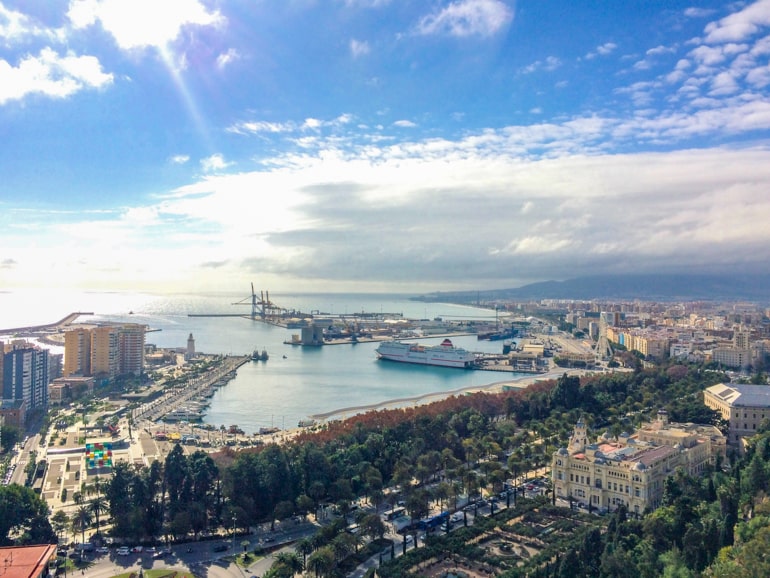
We are starting this itinerary in Málaga since it is an easy airport to fly in from other parts of Europe.
When Lisa arrived at the airport the first time she was actually kind of shocked to see that all the signs were written in German as well.
Needless to say, Málaga is a very popular destination among German tourists. It’s also an interesting city to visit in the wintertime !
Lisa didn’t like the city that much (as in wouldn’t want to live there), but it is definitely worth exploring for a day or two. It is also quite easy to get from the airport to the city centre by public transport. You can find your rental car from Malaga here .
Accommodation in Málaga: Malaga is a popular tourist destination in the south of Spain and so there are lots of different accommodation options. That said, apartment rentals are a very popular option.
Check here for apartments or hotels in Malaga .
Specifically, if you want a hotel, check out Hotel Boutique Teatro Romano . This minimalist design hotel is bright and clean and offers an excellent breakfast while being located right in the heart of the city centre.
If you are planning to stay in Malaga a bit longer, check out Apartamentos Nono . Located close to the beach and a quick walk to the city centre, these apartments have kitchenettes for smaller meals, terraces, and onsite private parking .
If you are searching for a hostel, Malaga has lots. You can search for hostels in Malaga here . When visiting Malaga with a friend, Lisa stayed at Casa Al Sur Terraza .
Even though it’s a “hostel”, it’s a popular place to stay in Malaga. They have private rooms and a lovely rooftop terrace. She and her friend stayed in a private room and loved it!
Just remember for this itinerary, wherever you book you will need to stay for 2 nights !
Must-see Attractions in Málaga:
- Alcazaba Palace
- Picasso Museum
- Cathedral of Málaga
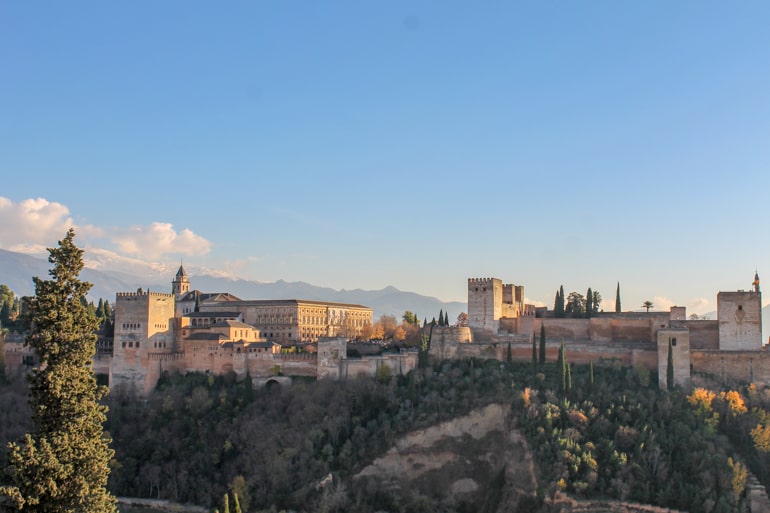
Today you’ll take a day trip to Granada. If you decided to rent a car you can do this by car, but then have to find parking in Granada. Lisa and her friend took the bus to Granada which was pretty easy to do since there are frequent buses throughout the day.
In Granada, you HAVE to go see La Alhambra. Make sure to book your ticket in advance (since there is only a limited amount of spots per day).
Lisa and her friend had to pick up her tickets at an office in the city before going to the actual attraction. Double-check your ticket since you might have to do that, too!
The journey from Málaga to Granada is approximately 1.5 hrs by car and 2 hrs by bus .
Accommodation in Granada: You won’t need a place to sleep in Granada since you’ll be returning to Málaga at the end of the day.
But IF you are curious – check out Hotel Granada Center or Granada Five Senses Rooms & Suites for two great hotels in the heart of the historic city centre!
Must-see Attractions in Granada:
- Alhambra Palace
- Albaicín District
- Cathedral of Granada
Day 3: Marbella
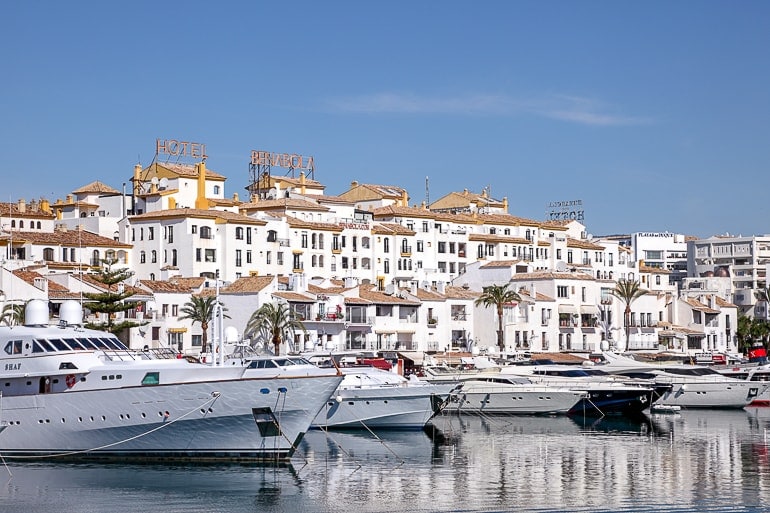
On the third day of this 5 day Southern Spain itinerary, you’ll drive from Málaga to Marbella. Marbella is a city by the water and part of the well know Costa del Sol. It is one of the most popular tourist cities in the region mainly due to its nice beaches and climate.
Since Marbella is quite close to Málaga the drive won’t be long – giving you more time to explore the city and relax at the beaches. The journey takes approximately 1 hour by car (there are different routes some of which include toll roads) and 1.5 hours by bus .
Accommodation in Marbella : Since the tourism industry is quite developed in Marbella, there are lots of amazing sunny accommodations to choose from.
Check here for hotels and apartments in Marbella .
Specifically, Paloma Blanca Boutique Hotel is a gorgeous (and affordable) boutique hotel with breakfast and free private parking onsite.
If you are looking for more of a beach resort, Amàre Beach Hotel Marbella is a beautiful all-inclusive adult-only beachside resort with breakfast, spa, pool, amazing views, and more!
Must-see Attractions in Marbella:
- The Old Town of Marbella
- Avenida del Mar
- Puerto Banús
Day 4: Cádiz
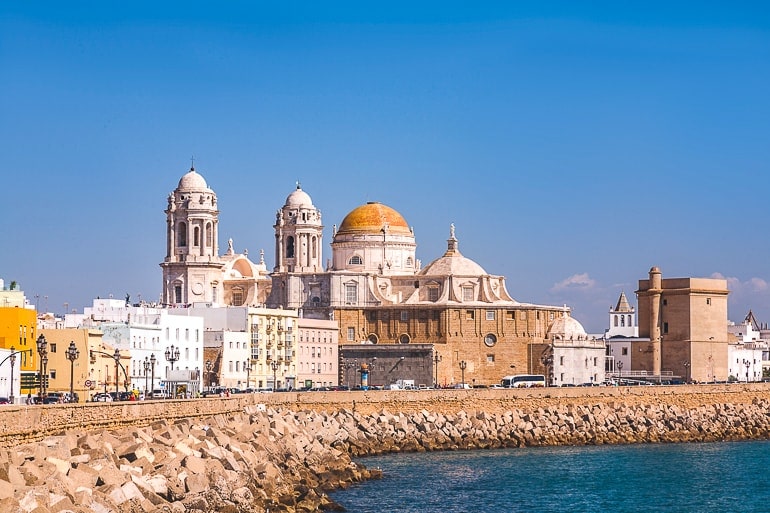
Cádiz is often considered a hidden gem in Spain. Lots of people who have been there seem to love it and Lisa is dying to visit the city.
Fun fact: Some think of Cádiz as the oldest continuously inhabited city in Western Europe. It is just slightly smaller than Marbella with lots of attractions waiting to be explored.
Driving from Marbella to Cádiz by car will take you approximately 2 hours including a toll road and slightly longer if you want to avoid toll roads.
You’ll drive along the coast for a while and could consider stopping along the way. Another option would be to make a pit stop in Gibraltar which you will pass along the way.
Unfortunately, Marbella and Cádiz do not seem to be connected well by public transport and travel between the two cities would involve going back to Málaga and/or through Sevilla (or Seville as the English like to call it).
If it is too much of a hassle for you to get from Marbella to Cádiz, consider skipping it and going straight to Seville instead.
Accommodation in Cádiz: Even though Cádiz is a smaller city, there are plenty of places to stay.
Check here for hotels and apartments in Cádiz .
Specifically, Hotel Boutique Convento Cádiz is a gorgeous hotel in the old town (close to the beach) with a great breakfast and private parking nearby .
Alquimia Albergue-Hotel is a cool and cozy hotel (also in the city centre) close to the beach and also with parking nearby. As for hostels, Cádiz does have quite a few hostels with amazing ratings. You can check here for hostels in Cádiz .
Must-see Attractions in Cádiz:
- Cádiz Cathedral
- Fortress San Sebastian
- Plaza de San Juan de Dios
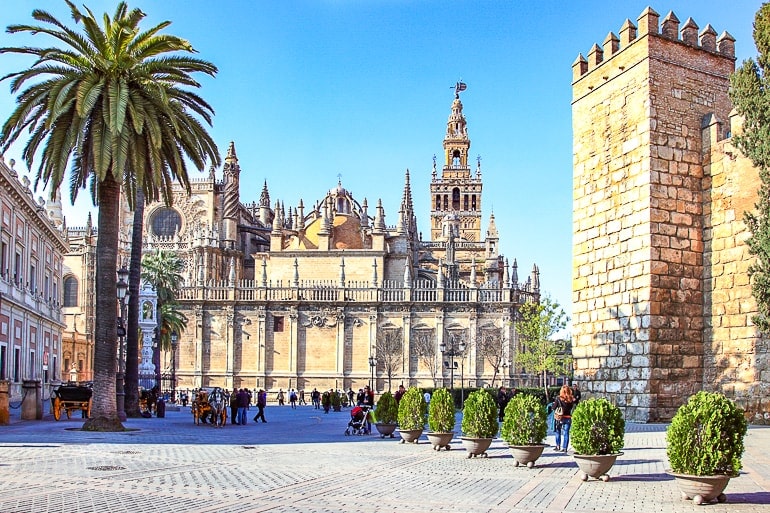
Seville is another popular destination in Spain and is often considered one of the hottest cities of the country. Therefore we would not recommend going there during July and August if you don’t like extreme heat (Lisa definitely doesn’t).
It is a beautiful city with lots of attractions to check out so be sure to have a good amount of time for exploring. If you don’t end up going to Cádiz, there is more than enough to do in Seville to keep you busy for two days!
Driving from Cádiz to Seville will take you approximately 1.5 hours by car and just slightly longer (1 hr 45 min) by bus . Seville also marks the end of this Southern Spain trip as it has a big airport which makes it super easy for you to fly back home.
Accommodation in Seville : Seville is a bigger and very popular city so there is no shortage of great accommodation options.
Check here for apartments and hotels in Seville .
Specifically, you have to see Petit Palace Puerta de Triana . This very trendy and cool design hotel offers a buffet breakfast and is located right in the city centre close to top attractions.
If you want a more historic stay, Hotel Simon is a more simple and authentic hotel. It’s located in a historic building, also does breakfast, and is also located in the heart of the city centre.
Neither of the above hotels offers parking – but few in the city centre of Seville offer onsite parking (or even public parking nearby).
If you are looking to have parking available, then you can check out La Parada del Marqués . It’s a beautiful guesthouse/hotel also centrally located and offers breakfast options and good connections to public transit!
If you are looking for a hostel, you can search for hostels in Seville here . Again, since Seville is so popular we would advise booking ahead – especially during the high season!
Must-see Attractions in Seville:
- Seville Cathedral
- Plaza de España
Spain Itinerary 7 Days
If you have slightly more time to explore Spain, we have also created two 7-day Spain itineraries for you. You’ll see that once again we give you two options since seven days are – in our opinion at least – still not enough to see the whole country.
Therefore, you’ll find a 7-Day Western Spain Itinerary and a 7-Day Eastern Spain Itinerary below. As always, feel free to modify them to make them fit your exact plans!
Spain Itinerary 7 Days – Western Trip
For this itinerary, the total driving time would be around 14 hours and the distance would be around 1300 km .
These estimates account for the Toledo day trip (and back to Madrid) AND finishing with ONE of either Seville OR Malaga from Córdoba. So, in theory, it could be shorter or longer than we have indicated here on the map!
We’ve already covered some of the places above, but we will mention the important parts again to make it easier for you to plan your exact trip.
Please note that we won’t actually include any places on the west coast of Spain – that would be a whole other trip in itself. Your 7-Day Western Spain Itinerary could look something like this:
Spain Itinerary 7 Days – Western Trip Overview
Day 1: Bilbao
Day 2: burgos.
- Day 3: Salamanca
- Day 4: Madrid
- Day 5: Madrid / Day trip to Toledo
Day 6: Córdoba
Day 7: seville or málaga.
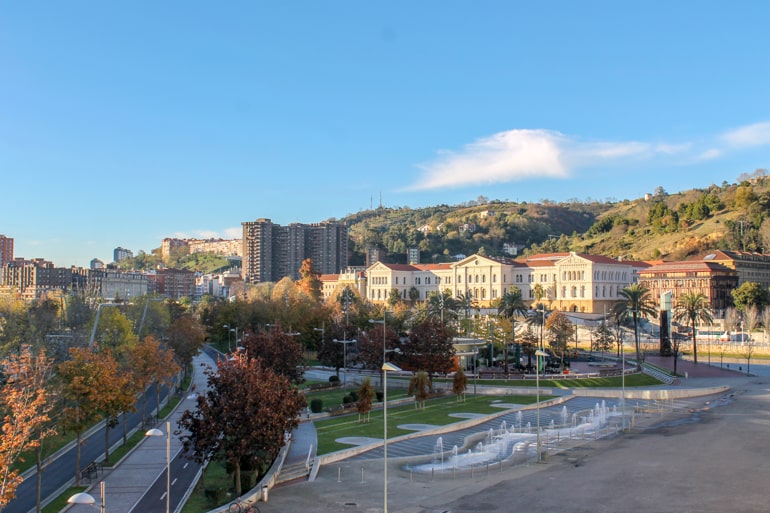
Similarly to how we ended the five-day itinerary in Bilbao, we’ll start this itinerary there as it is a relatively easy airport to fly into from other places in Europe. If you’re starting your longer Spain trip, you can find your rental car in Bilbao here .
Make sure to use your time to explore the Casco Viejo (the Old Town) and walk along the river! There are some great Pintxo places in the Old Town that you should absolutely check out!
Accommodation in Bilbao : Bilbao is a larger city so there’s quite a variety of accommodations available.
Check here for hotels in Bilbao .
Specifically, Hotel NH Bilbao Deusto is a bright and simple hotel with good breakfast and underground private parking . Friends of Lisa stayed there and said they enjoyed it. It’s close to the river across from the Guggenheim Museum but still a quick walk to the old town.
To stay in the heart of old town Bilbao, you have to see Ercilla Hotela . This is a very stylish and popular hotel with a lovely rooftop terrace and lounge, onsite parking , and they even serve traditional Basque food!
As for hostels, Bcool Hostel is a very “cool” hostel in Bilbao. In general, remember to book any hotels or accommodations somewhat closer to the city centre/the river because Bilbao can be quite hilly around the edges!
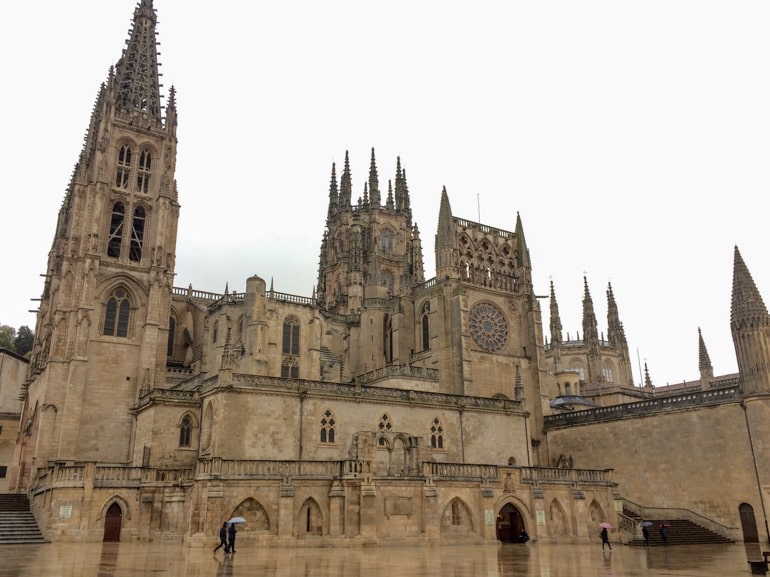
Burgos might not be a city that is immediately on your radar for places to visit in Spain but we would recommend a stop there on your way south.
Lisa visited Burgos with friends on a day trip from Bilbao so she knows how easy it is to get there. Burgos is a nice city but since there is not a ton to see, one night is the perfect amount of time in our opinion.
Getting from Bilbao to Burgos takes approximately 1.5 hours by car and 2 hours by bus .
Accommodation in Burgos : Burgos is not an overly big city, but you can still find lots of great accommodations.
Check here for hotels in Burgos .
Specifically, Hotel Puerta de Burgos is a popular, trendy, and affordable hotel with private underground parking at the hotel. This makes it a great option if you have a car because it’s a little further from the centre (still quite close) and just off the motorway.
Another great hotel closer to the city centre/attractions is NH Collection Palacio de Burgos . This is an elegant hotel with a great breakfast and private parking, too.
If you want to stay in a hotel that physically faces the famous Burgos Cathedral, check out Hotel Mesón del Cid !
Must-see Attractions in Burgos:
- Burgos Cathedral
- Las Huelgas
- Museum of Human Evolution
Day 3: Salamanca
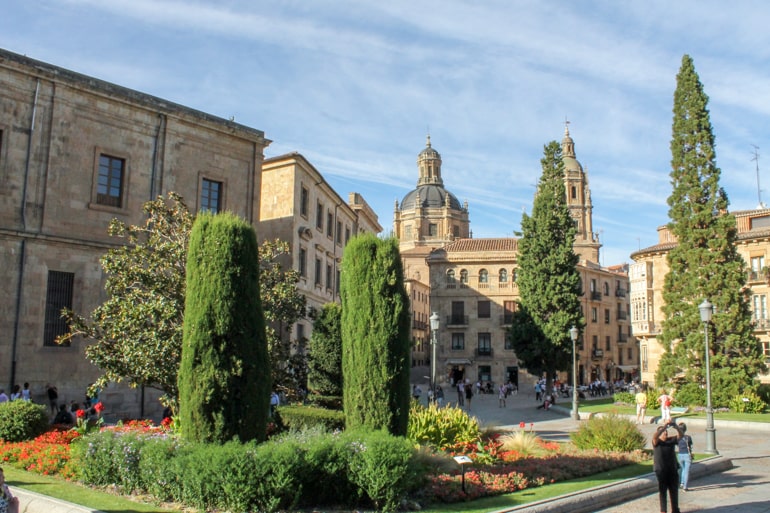
From Burgos, your journey continues to Salamanca – another one of Lisa’s favourite cities in Spain. Salamanca is sometimes called “The Golden City of Spain” and you’ll understand why.
The many sandstone buildings get illuminated beautifully by the sun – making it appear golden. Be sure to bring your camera because you’ll want to use it in Salamanca. Our tip: Cross the river to get amazing photos of the cathedral.
Getting from Burgos to Salamanca is easy and will take approximately 2.5 hours by car or 3 hours by bus .
Accommodation in Salamanca: Salamanca has lots of great accommodations in the city.
Check here for hotels in Salamanca .
Specifically, Hospes Palacio de San Esteban is an authentic-style hotel in the city centre with an incredible breakfast and onsite private parking .
If you are looking for a very affordable hotel with views of the Cathedral, Hotel San Polo is for you. The popular hotel is in a location that doesn’t get much more central! There’s no parking available – making it great if you travel by bus and train only.
When Lisa visited Salamanca on a weekend trip, she stayed in a hostel with friends close to the Old Town and loved it. You can check out the good selection of hostels in Salamanca .
Must-see Attractions in Salamanca:
- Salamanca Cathedral (Old + New)
- Plaza Mayor
- Salamanca University
Day 4: Madrid
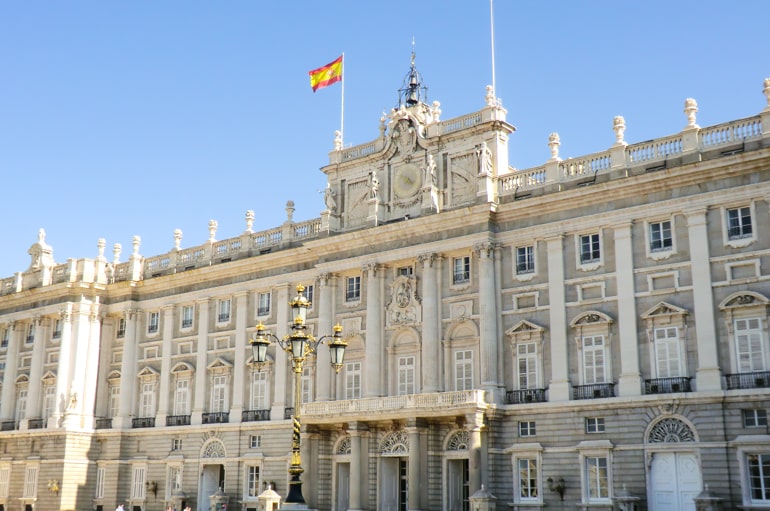
Since Madrid is the capital of Spain you shouldn’t miss it on your itinerary. Conveniently it is also quite close and easy to get to from Salamanca.
Since there is so much to see in Madrid one day to explore might not be enough for you. That’s why you might opt for spending two days in Madrid instead.
Lisa has been to Madrid two times now and still hasn’t seen everything there is to see. But at least you’ll get a good sampler!
As mentioned, getting from Salamanca to Madrid is easy. The journey will take approximately 2 hrs 12 min by car (including a toll road) and 3 hours by bus .
Madrid’s main bus station is actually underground which is kind of cool and caused a lot of confusion for Lisa and her friends when they tried to find it the first time.
Accommodation in Madrid : Being the capital city of Spain, Madrid is a popular city with lots and lots of accommodation options. Keep in mind that Madrid has many “hostals” which are technically guesthouses but are basically hotels.
Also, if you have a car don’t be surprised if parking is in a public lot for a high fee – that’s just Madrid.
Check here for apartments and hotels in Madrid .
Specifically, you might want to check out Room007 Select Sol . This charming and trendy hotel is right in the heart of the city, has air conditioning, and serves breakfast at a cafe next door!
If you are looking for a simple stay right in the centre, check out Hostal Madrid . This authentic guesthouse is so centrally located with top attractions and a metro station around the corner.
It’s such good value for money that the two times Lisa travelled to Madrid she actually stayed here both times!
Should you be on the hunt for an actual hostel, you can check here for hostels in Madrid . Keep in mind wherever you book, you will be booking accommodation for two nights.
Must-see Attractions in Madrid:
- Museum Reina Sofia
- Puerta del Sol
Keep in mind we have a whole separate detailed guide on amazing things to do in Madrid !
Day 5: Madrid or Day trip to Toledo
As mentioned, you might opt to spend another day in Madrid since there is so much to see.
If that’s the case read our Madrid guide linked above to get more recommendations. Alternatively, you could opt to go on a day trip to Toledo, a beautiful small city not too far from Madrid.
If you don’t want to drive there yourself, you can choose to book a day tour which includes a tour of Toledo among other things. If you want to drive yourself the journey will take you approximately 1 hour by car and the same amount of time by bus .
Must-see Attractions in Toledo:
- Toledo Cathedral
- Monasterio de San Juan de los Reyes
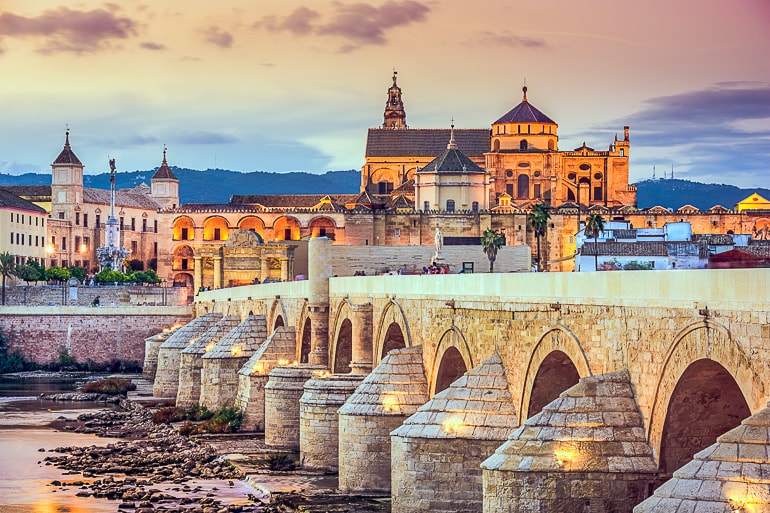
The next day you will drive to Córdoba, a city in Andalusia known for its famous flower street – among other things of course. There is a lot of history to be found in Córdoba so consider taking a walking tour if you want to learn more about it.
This is one of few routes where you will actually be faster taking public transport as if you were to drive yourself since there is a good train connection between Madrid and Córdoba.
Driving by car takes approximately 4 hours while the journey by train would be slightly shorter with 2 hrs 15 min .
Accommodation in Córdoba : If you’re looking for a hotel, there are lot of options to choose from.
Check now for hotels in Córdoba .
Specifically, Maciá Alfaros is an authentic hotel located right in the heart of the city centre with an incredible swimming pool and easy parking onsite.
Hotel Cordoba Center is an elegant hotel located outside the heart of the centre. It’s still very walkable to the centre, is very close to the train station, and has a rooftop pool with amazing views!
There are quite a few hostels with very good ratings in Córdoba so you can check here for hostels in Córdoba .
Must-see Attractions in Córdoba:
- Mosque–Cathedral of Córdoba
- Alcázar de los Reyes Cristianos
- Historic Center of Córdoba
For this itinerary, you can decide in which city you would like to end your trip. For some, it might be more convenient to fly out of Seville while for others Málaga might be the better option. So it’s really up to you and your preference!
The journey from Córdoba to Seville takes approximately 1 hr 40 min by car and 45 min by train . The time it takes to get from Córdoba to Málaga isn’t much longer with 1 hr 50 min by car and 50 min by train .
Accommodations in Seville : As mentioned above, Seville is a popular city so there is always accommodations to choose from.
Specifically, check out Petit Palace Puerta de Triana . This trendy design hotel offers a buffet breakfast and a really great location in the city centre.
For a historic stay, Hotel Simon is a more simple and more authentic hotel. It’s located in a historic building, does breakfast, and is also located in the city centre.
Neither of the above hotels have parking – but fewer properties in Seville offer onsite parking (or even public parking nearby).
If you are travelling by car and want parking available, then check out La Parada del Marqués . It’s a beautiful guesthouse/hotel also centrally located with breakfast options and good connections to public transit!
If you want a hostel stay, you can search for hostels in Seville here . Regardless of what type of accommodation you book, Seville is popular so we would advise booking ahead – especially during the high season!
Accommodation in Málaga: Malaga is a popular destination in the south of Spain with lots of different accommodation options. That said, apartment rentals are very popular.
Specifically, for hotels, you can check out Hotel Boutique Teatro Romano . This design hotel is bright and clean and offers breakfast while being located right in the heart of the city.
If you are planning for a longer stay, check out Apartamentos Nono . Located close to the beach and a quick walk to the city centre, these apartments have kitchenettes, terraces, and onsite private parking .
If you want a hostel, Malaga has lots. You can search for hostels in Malaga here . When visiting Malaga with a friend, Lisa stayed at Casa Al Sur Terraza .
Even though it’s a “hostel”, it’s a popular place – with private rooms and a lovely rooftop terrace. Her and her friend stayed in a private room and loved it!
Spain Travel Itinerary 7 Days – Eastern Trip
If the other 7-day Spain itinerary doesn’t really appeal to you and you would like to stay closer to the coast, maybe this itinerary is more to your liking. The driving time would be just shy of 11 hours and would be approximately 1000 km driving distance !
Spain Itinerary 7 Days – Eastern Trip Overview
- Day 1+2: Barcelona
Day 3: Valencia
- Day 4: Alicante
- Day 5: Murcia
Day 6: Granada
Day 7: málaga, day 1 + 2: barcelona.
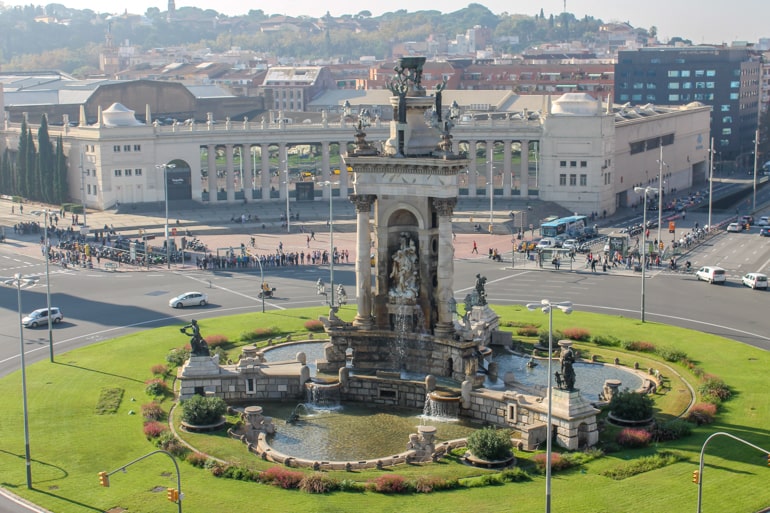
Once again, this itinerary starts in Barcelona since it is one of the easiest airports to fly into. Since you have a little bit more time with this itinerary you’ll stay in Barcelona for two days.
There is lots to see so you still won’t see everything, but definitely more than in just one day. To then continue on with this itinerary through Spain, you can find your rental car in Barcelona here .
Accommodation in Barcelona: As mentioned above, there are lots of hotels and apartments in Barcelona.
For hotels, you might like Catalonia Born Hotel with a boutique style and rooftop pool close to the beach in the city centre.
If you travel by car, Sallés Hotel Pere IV is an affordable hotel with spa in the heart of the city with a private parking garage .
As for hostels, you can check here for Barcelona hostels . We liked Kabul Hostel . Wherever you stay, remember to book in advance because the city does fill up and it can get expensive! And remember, you’ll be staying at this place for two nights .
- Las Ramblas
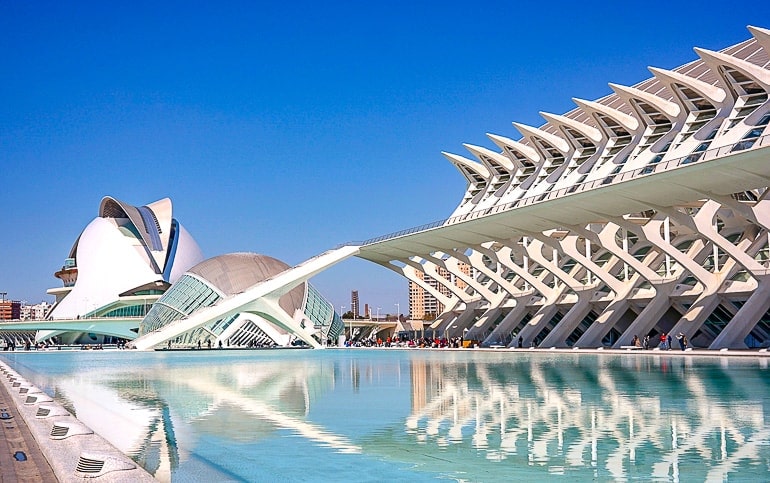
The third day of this Spain itinerary will take you from Barcelona to Valencia which is another city on Lisa’s favourite list.
It was actually the first Spanish city she visited and she fell in love with the city and its people right away. Her favourite part is that there is a huge part in what was formerly a river that stretches through a big part of the city.
In order to get from Barcelona to Valencia, you’ll drive along the coast for 3.5 hours by car and around 3 hrs 15 min by train.
Accommodation in Valencia: Since Valencia is a bigger city, you are sure to find accommodations that work for you.
Check here for hotels in Valencia .
Specifically, Petit Palace Ruzafa is a bright and boutique hotel right in the city centre.
They offer healthy breakfast options and free bike rentals. There’s no parking making this a great hotel for those travelling without a car.
If you want a place right on the beach, check out Hotel Miramar . This cool beachfront hotel has a bar and restaurant right downstairs and has paid parking onsite . If you are looking for a hostel, you can check here for hostels in Valencia .
Must-see Attractions in Valencia:
- City of Arts and Science
- Lonja de la Seda
- Cathedral of Valencia
Day 4: Alicante

Alicante is a popular holiday town that lots of Europeans visit to enjoy the nice weather and the beaches. Maybe you have heard of the name Costa Blanca?
Alicante is part of that exact region. When you’re there don’t forget to check out some of the nice beaches – but of course, there are also lots of other things waiting to be explored.
Getting from Valencia to Alicante won’t take overly long. The drive will take approximately 2 hours by car and 1.5 hrs to 2.5 hours by train or bus respectively.
Accommodation in Alicante: Alicante is a popular city due to its great location on the coast.
Check here for hotels in Alicante .
If you want to stay directly on the beach, Hotel Almirante is a bright and stylish hotel with breakfast buffet. It’s a bit farther from the city centre, but there is free onsite parking if you have a car.
If you want more of a resort style, Melia Alicante is also located right on the beach with stunning views over the water. It’s much closer to the centre of the city and has good amenities (pool), paid parking next door, and a really good breakfast!
You can also find a good mix of hostels in Alicante. In any case, don’t forget to book ahead in the summertime since it can get very crowded.
Must-see Attractions in Alicante:
- Castle of Santa Barbara
- Casco Antiguo (Old Town)
- Beaches such as Playa Postiguet
If you’re heading for Alicante to get some sunshine, we’ve got a guide on things to do and see in Alicante that includes some great food tips for you to check out!
Day 5: Murcia
Murcia is a city in the southeast of Spain and the capital of the region with the same name. Travellers who don’t know much about Spain (yet) might not have heard of the city before but this doesn’t mean it is not worth a visit.
The drive from Alicante to Murcia is quite short with 1 hr by car and 1 hr 10 min by bus . This will give you a good amount of time to explore the university city and get a rest from all the driving.
Accommodation in Murcia: Since Murcia is a less touristy city you’ll find great places to stay and (generally) fewer crowds.
Check here for hotels in Murcia .
Specifically, the Hesperia Murcia Centro is a clean and modern hotel right in the city centre near the Cathedral. There’s also private onsite parking and a tasty breakfast.
If you want to stay closer to the coast – you could stay in Cartagena (about 30 minutes away from Murcia). Here, check out NH Cartagena – with bright, sea views and parking all in a great location.
Must-see Attractions in Murcia:
- Murcia Cathedral
- Floridablanca Gardens
- Monteagudo Castle
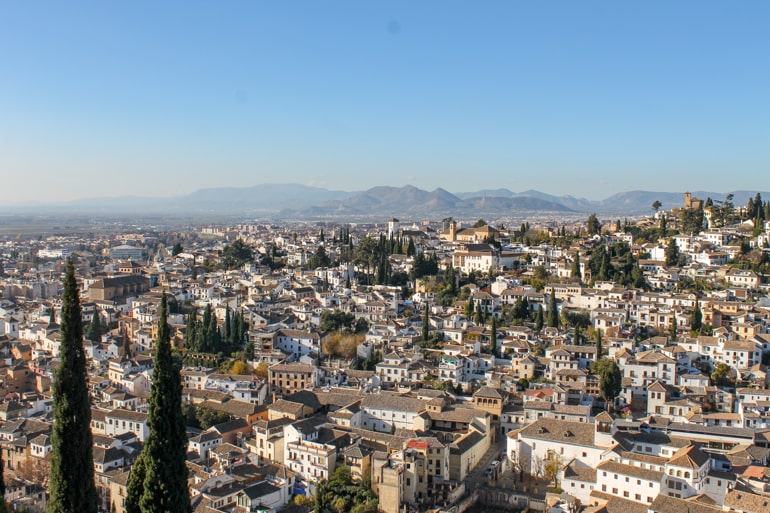
From Murcia, your journey will continue to Granada, a city which we have mentioned quite a few times by now so we won’t go into details again. If you haven’t yet, make sure to get your Alhambra tickets in advance!
Driving from Murcia to Granada will be a slightly longer trip with 2 hrs 45 min by car and around 3.5 hrs by bus .
Accommodation in Granada: Since Granada is a popular travel destination, many accommodations are available.
Check here for hotels in Granada .
Specifically, Hotel Granada Center is a VERY popular hotel with great breakfast, a very central location, and private underground parking onsite .
Also situated in the city centre is Granada Five Senses Rooms & Suites – a sleek and modern hotel with small rooftop pool with great views of the historic old town! If you are looking for a hostel, you can check here for hostels in Granada .
Since we have mentioned Málaga countless times above, there is not much to add. As you probably know by now Málaga has a great airport to fly out of so this is where this 7-day Eastern Spain itinerary ends.
The journey from Granada to Málaga is approximately 1,5 hrs by car and 2 hrs by bus .
Accommodation in Málaga: Malaga is a popular tourist destination in Spain so there are lots of available accommodations – with apartments being the most popular.
For hotels, check out Hotel Boutique Teatro Romano . This minimalist design hotel is bright and offers a great breakfast while being located right in the city centre.
For longer stays, check out Apartamentos Nono . Located close to the beach and to the city centre, these apartments have kitchenettes for small meal prep, terraces, and onsite private parking .
If you are searching for a hostel, you can search for hostels in Malaga here . When visiting Malaga with a friend, Lisa stayed at Casa Al Sur Terraza .
It’s a popular place to stay in Malaga with private rooms and a great rooftop terrace. She and her friend stayed in a private room and really liked it!
Spain Itinerary – 14 Days
This road trip would be a beast. As planned above with the scheduled day trips you’d cover around 2600 kilometres .
The driving time would be around 27 hours and 30 minutes – but of course, this varies by traffic and which day trips/stop days (beach days) you opt to take, etc.
If you swung down to Gibraltar at the end and then went to Granada and Malaga, it could very well be a tad longer.
You should also consider the price of renting a car for two weeks to see if there are any companies that offer discounts!
Compare prices for your car rental from Bilbao here .
Since you have read about most of these places in some of the itineraries above we’ll keep this one short.
Our version is written from north to south, so from Bilbao to Málaga. As with most of our itineraries, you can reverse the direction if you feel like it So, to really see the whole country, your updated 14-day Spain itinerary might look something like this:
14-Day Spain Itinerary Overview
- Day 2: Day trip to Santander, Vitoria-Gasteiz or Beach Day
- Day 3: Donostia-San Sebastián
- Day 4: Zaragoza
Day 5+6: Barcelona
Day 7: valencia, day 8+9: madrid.
- Day 10: Toledo or Córdoba
Day 11: Seville
- Day 12: Seville or Day trip to Cádiz/ Gibraltar
- Day 13: Málaga (or Granada)
- Day 14: Málaga
Once again we are starting this itinerary in Bilbao since it is an easy city to get to. There are quite a few things to see and delicious foods to try so with this itinerary you have slightly more time to explore the city!
Accommodation in Bilbao: Once again, Bilbao is a bigger centre in Spain so you’ll find lots of accommodations to suit many different styles and budgets.
Specifically, Hotel NH Bilbao Deusto is a bright hotel with breakfast and underground private parking . Friends of Lisa stayed here and enjoyed it. It’s the river from the Old Town – but it’s a nice area and a quick walk to everything.
To stay in the centre of Bilbao’s historic old town, check out Ercilla Hotela . This is a very stylish hotel with a great rooftop terrace/lounge, onsite parking , and food onsite, too.
If you are wanting a hostel, Bcool Hostel is a great option in Bilbao. Just remember: when booking any accommodations in Bilbao, try to book in the centre or near the river since the edges of the city can be very hilly!
Since the next day in this itinerary is a day trip we’d suggest booking your accommodation in Bilbao for two nights !
Day 2: Day Trip to Santander, Vitoria-Gasteiz or Beach Day
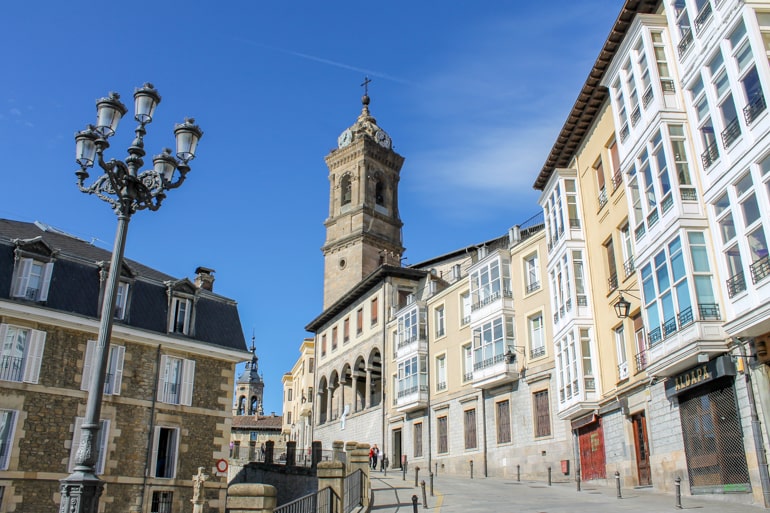
To give you the chance to see a bit more of the region we recommend a day trip to either Santander or Vitoria-Gasteiz, the capital of the Basque Country.
Alternatively, you can also opt to spend the day at the beach if the weather is nice (more on that below!) or use the time to see more of Bilbao.
Getting to Santander from Bilbao takes approximately 1 hr 15 min by car and 1.5 hrs by bus . The journey to Vitoria-Gasteiz is slightly shorter, taking approximately 1 hr by car and the same amount of time by bus .
Must-see Attractions in Santander:
- Palacio de la Magdalena
- Centro Botin
- Sardinero Beach
Must-see Attractions in Vitoria-Gasteiz:
- Catedral de Santa María
- Iglesia de San Miguel
If you opt for a beach day instead, we would recommend Sopelana beach. It is easy to reach by metro. Just take the line no 1 in the direction of Plentzia and get off at the Sopelana stop.
From there you can either walk or take the bus to the beach. It’s Lisa’s favourite beach in the Bilbao area since it looks beautiful and is not too crowded. It’s also a great stop to try some surfing.
Day 3: Donostia-San Sebastián
The next stop on your 14-day Spain itinerary is San Sebastián – a city we have already mentioned before. Beautiful beaches and delicious pintxos await you!
The drive from Bilbao to San Sebastián takes around 1 hr 15 min by car and 1.5 hrs by bus . There are very frequent buses by lots of different operators between these two cities.
Accommodation in San Sebastián : San Sebastián is one of the more expensive towns in Spain. It’s also very popular among luxury travellers. So, don’t be surprised if accommodations seem a little more expensive overall.
Specifically, check out Casual de las Olas San Sebastián . This hotel is a bit further from the old town and beach but makes up for it with sleek decor, breakfast, and air conditioning.
If you want more of a laid-back feel, check out Talaia HT . This authentic and cozy guesthouse is located in the heart of the old town – and has public parking nearby .
If you are looking for a hostel, you can find hostels across San Sebastián here . Wherever you book, our advice is to book accommodations early. Generally, you save money when doing that.
Day 4: Zaragoza
Day 5 of this itinerary will take you to Zaragoza, a city mentioned in the 5 day Northern Spain itinerary. The drive will be a bit longer but you’ll still have enough time to check out some of the attractions Zaragoza has to offer.
Driving from San Sebastián to Zaragoza will take approximately 2 hrs 45 min by car (including a toll road) and around 4 hrs by bus .
Accommodations in Zaragoza: Zaragoza is a smaller city but there are still lots of really great accommodation options.
Specifically, check out Hotel Sauce . This bright hotel is located right in the city centre and has buffet breakfast, air conditioning, and private parking onsite for those with a car in Spain!
If you want a hotel with a rooftop pool, Hotel Palafox is for you! Also situated right in the heart of the city, the hotel has a unique decor, city views, a nice breakfast, and also has parking and air con!
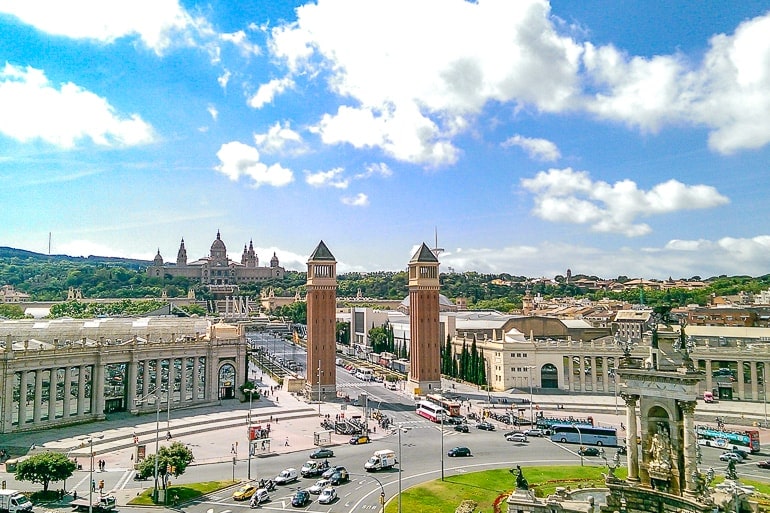
A tour across the country wouldn’t be complete without including Barcelona. Since there is so much to see you’ll be spending two nights in the city to give you enough time.
The drive from Zaragoza to Barcelona will take you approximately 3 hrs 10 min by car (includes a toll road), 3.5 hrs by bus and 1.5 hrs by train .
Accommodation in Barcelona : As mentioned above, you’ll find loads of great hotels and apartments in Barcelona.
If you are looking for a hotel, check out Catalonia Born Hotel with a boutique style and rooftop pool in the city centre (also close to the beach).
If you travel by car, Sallés Hotel Pere IV is a lovely and affordable hotel with a spa that is located in the heart of the city and has a private parking garage onsite .
As for hostels, you can check out Barcelona hostels here. Specifically, we enjoyed Kabul Hostel . Hostel or hotel – just remember to book early because Barcelona is a popular city. Also remember that for this itinerary, you’ll be staying over for two nights .
And we’re back in one of Lisa’s favourite cities. The drive from Barcelona to Valencia will be a bit longer but it is worth it (in our opinion at least).
Driving from Barcelona to Valencia will take around 3.5 hrs by car (including a toll road), 3 hrs by train and 4 hrs 15 min by bus .
Accommodation in Valencia: Since Valencia is a bigger city, you’ll find accommodations that work for your style and budget.
Check now for hotels in Valencia .
Specifically, Petit Palace Ruzafa is a boutique hotel very much in the lovely city centre. They offer healthy breakfast, free bike rentals, and no parking – making it great for travellers without a car!
If you’re looking to stay right the beach, you’ll likely love Hotel Miramar . This cool beachfront hotel has a bar/restaurant right downstairs, ocean views, and has paid parking onsite . If you want to stay in a hostel, you can check now for hostels in Valencia .
Must-see Attractions in Valencia:
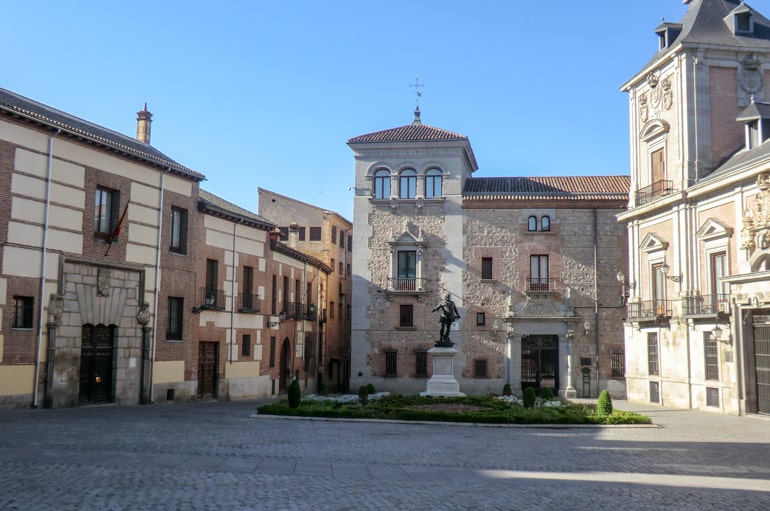
Of course, you can’t forget about the capital of the country when going on a trip through Spain.
Since there is so much to see and do you will spend two nights in Madrid. This will also give you some time to recover from the long driving days you’ve had.
Driving from Valencia to Madrid takes approximately 3.5 hrs by car and slightly less than 2 hrs by train .
Accommodation in Madrid : Being the capital city of Spain, Madrid is a popular city with lots of accommodations.
Keep in mind that Madrid has “hostals” which are technically guesthouses but are basically hotels. Also, parking can be very expensive per day but that’s just Madrid for you.
Specifically, check out Room007 Select Sol . This charming and trendy hotel is right in the heart of the city, has air conditioning, and serves breakfast at a cafe next door. You are very much in the city centre here!
If you are looking for more of a guesthouse stay right in the centre, check out Hostal Madrid .
This authentic accommodation is so centrally located with attractions and the metro close by. It’s good value for money – the two times Lisa travelled to Madrid she actually stayed here both times!
Should you want an actual hostel, there are loads of hostels in Madrid. You can check here for hostels in Madrid . Keep in mind wherever you book, you will be booking this accommodation for two nights if you are following this itinerary.
*We have written in-depth about many of the attractions you can visit in Madrid in our things to do in Madrid guide!
Day 10: Toledo or Córdoba
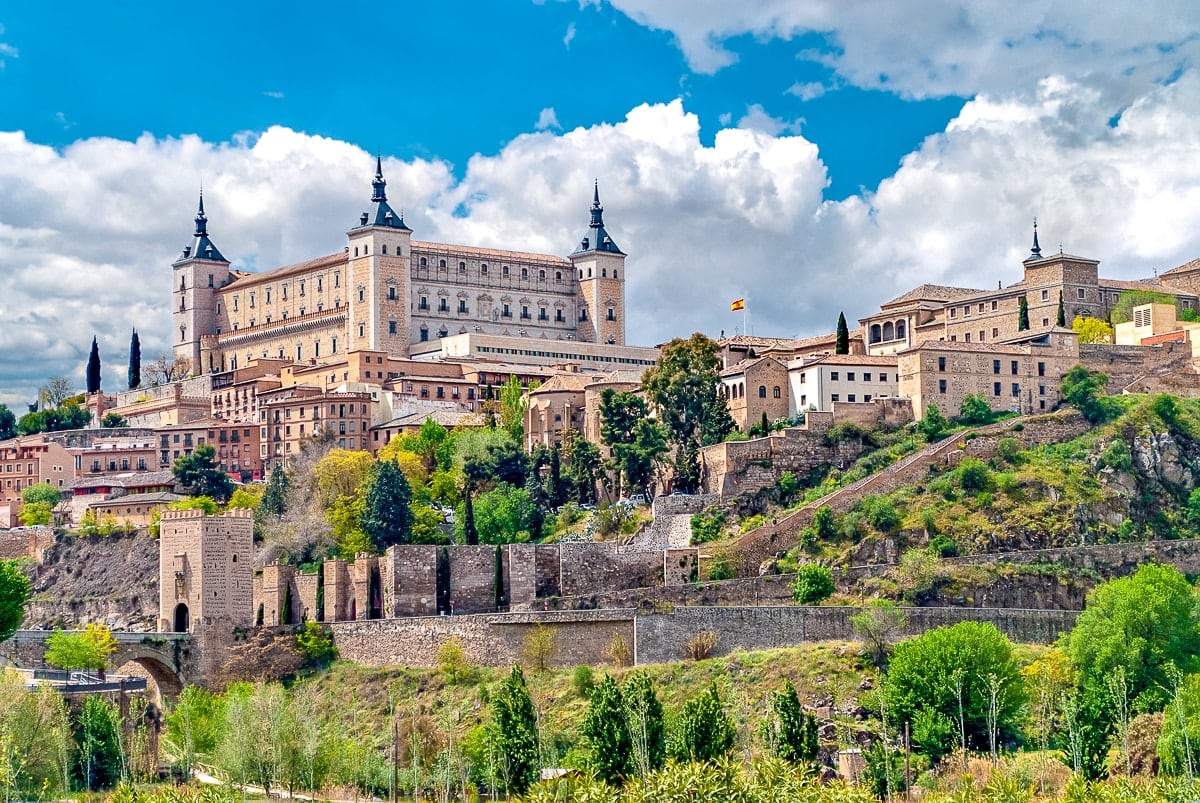
For the next stop on your itinerary, you can decide where you would like to stop. From Madrid you are driving further south and both Toledo and Córdoba would be great options for a stop on the way to Seville.
The drive from Madrid to Toledo will be short and only take an hour by car or bus . The drive from Madrid to Córdoba is a lot longer and takes approximately 4 hrs by car and 2 hrs by train .
While this drive would be longer, your drive the next day would be significantly shorter from Córdoba than from Toledo.
Accommodation in Toledo: If you choose to stay in Toledo, you can check here for hotels in Toledo .
Specifically, you have to check out Hotel Santa Isabel – an authentic and charming Spanish hotel in the heart of the city with an incredible rooftop terrace, good breakfast, and private parking under the hotel if you need it.
Accommodations in Córdoba: If you end up in Córdoba, you can check now for hotels in Córdoba .
Specifically, Maciá Alfaros is an authentic hotel located right in the heart of the city with a nice swimming pool and parking onsite.
Hotel Cordoba Center is an elegant hotel located just a short walk to the centre. It’s location is very close to the train station – and there is a lovely rooftop pool with city views!
There are also many hostels with very good ratings so you can check here for hostels in Córdoba .
On day 11 you will drive from either Toledo or Córdoba to Seville – a city we have mentioned multiple times now because it is very much worth the visit.
If you ended up staying in Toledo, it’ll take you 4.5 hrs by car and 4 hrs by train to get to Seville. If you stayed in Córdoba it’ll only take you 1.5 hrs by car and 45 min by train to get to Seville.
Accommodation in Seville : As we have mentioned above a bunch of times, Seville is a big and popular city so you’ll have no shortage of accommodations to pick from.
Check here for hotels in Seville .
Specifically, we like the look of Petit Palace Puerta de Triana . It’s a trendy design hotel with a buffet breakfast located right in the city centre close to top sights!
If you want more of a “historic stay”, Hotel Simon is a simple and authentic hotel located in a historic building!
They also do breakfast and are also located in the city centre. So you know: neither of the above hotels have parking – but not that many hotels in the city centre offer onsite parking (or even nearby public parking).
If you have/rent a car and need parking available, we’d say check out La Parada del Marqués . It’s a beautiful guesthouse/hotel also quite conveniently located but they also have parking, breakfast options, and good connections to public transit!
Should you be looking for a hostel, you can search for hostels in Seville here .
Again, since Seville is very popular so we would advise booking any accommodations ahead of time – especially during the high season! Remember, you’ll stay for two nights if you follow this itinerary!
Day 12: Seville or Day trip to Cádiz/ Gibraltar

Since there is a lot to see and do in Seville, you have the option to stay another day to explore more of what the city has to offer.
If you’d prefer to see a different place you can consider day trips to either Cádiz or Gibraltar. Know that Gibraltar is not officially part of Spain but belongs to the United Kingdom instead.
It’ll take you around 1.5 hrs by car or train to get from Seville to Cádiz. To get from Seville to Gibraltar it’ll take between 2 and 3 hrs by car .
There does not seem to be any public transport between Seville and Gibraltar since it is another country, but you can participate in an organized tour from Seville to Gibraltar .
Must-see Attractions in Gibraltar:
- Rock of Gibraltar
- Great Siege Tunnels
- The Old Town
Day 13: Málaga (or Granada)
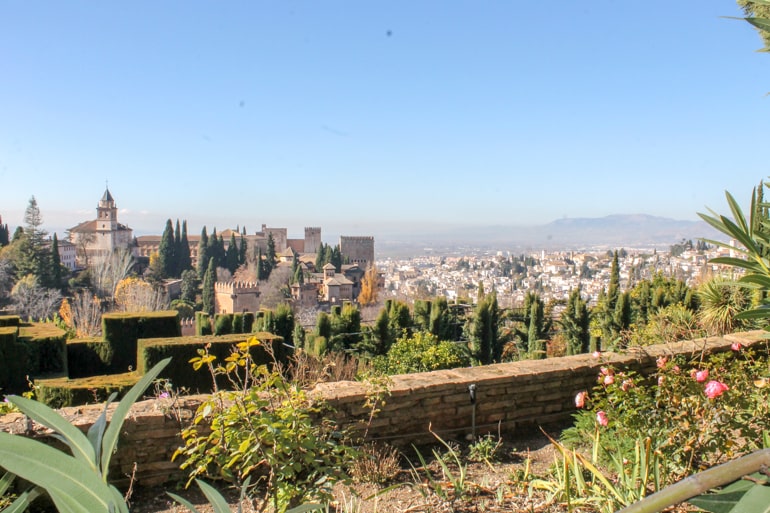
On your second to last day of this itinerary, you will drive from Seville to Málaga, a route we have mentioned quite a few times by now up above.
If you really wanted to visit Granada you could also drive there instead. You could then make the trip to Málaga at the end of the day or the next day.
The journey from Seville to Málaga will be approximately 2.5 hrs by car and 2 hrs by train. Whatever city combo you choose, just remember to book the right amount of nights in cities (one or two) for the end of your itinerary (keeping in mind where you fly out)!
Accommodation in Málaga: As a popular city in the south, Malaga has lots of places to choose from when it comes to accommodation options.
For hotels, have a look at Hotel Boutique Teatro Romano . This lovely design hotel offers breakfast – and it’s very centrally located in the heart of the city!
For an apartment rental (maybe for a longer stay), check out Apartamentos Nono . Located close to the beach and a quick walk to the city centre, the apartments have kitchenettes, terraces, and private parking onsite (if you travelling by car).
Malaga also has lots of hostels if you like. You can search for hostels in Malaga here . Lisa stayed at Casa Al Sur Terraza when travelling to Malaga with a friend.
For a “hostel”, the Casa is a very popular place to stay with private rooms and a sunny rooftop terrace. Lisa and her friend booked a private room and enjoyed it!
Accommodation in Granada: Since Granada is popular, many accommodations are available.
Specifically, Hotel Granada Center is a VERY popular hotel with a great breakfast, a very central location, and private underground parking onsite if you have a car.
Also situated in the city centre is Granada Five Senses Rooms & Suites – a modern hotel with a small rooftop pool with views of Granada’s old town! If you want to book a hostel, you can check here for hostels in Granada .
Day 14: Málaga
And this is the end of your two weeks Spain itinerary. Once again Málaga is the city you fly out of since there are lots of great flight connections to other places in Europe.
Alternatively, you could also stay in Seville and visit Málaga on a day trip if the airport in Seville works better for you.
Things to Consider When Travelling in Spain
Before you dive into Spain trip planning, you’ll want to consider a few details. From the currency they use (the Euro) to the weather, public transport, and the best time to visit, we cover a few key areas below to help you prepare.
Best Time of Year to Visit Spain
Spain is a destination that can be visited year-round – you just have to set your expectations right. Lisa visited Malaga with a friend in December and it was quite warm but of course not warm enough to go swimming.
Since the country is quite big and has a diverse geography, there are actually a lot of different climate zones in Spain. Generally, the summers are hot and dry while the winters are mild and quite rainy.
The average maximum temperature for July and August is 30 °C and 17/16 °C in December and January. However, this can vary greatly depending on which city you are visiting (e.g. Granada is always a little bit colder).
We would recommend that you avoid the south – especially Seville – and Madrid in July and August since it can get VERY hot.
And according to Lisa’s Spanish teacher in Bilbao, it would probably also be a good idea to avoid visiting the Basque country during the winter months since it can rain a lot.
In our opinion, the perfect months for visiting Spain would be from March to June and September to the end of October.
Public Transportation in Spain
Spain has a very well-developed long-distance bus system. Lisa was especially impressed by that since in Germany long-distance buses didn’t exist until a few years ago and sometimes it can still be a bit chaotic or unclear.
In Spain, almost every major city has an actual bus station (and not just a signpost). One of the biggest bus companies in Spain is Alsa .
Lisa has used them quite a few times when living in Spain (to go from Madrid to Bilbao for example) and always had a pleasant experience.
In addition to buses, Spain also has a pretty good rail system. You can check the train connections and prices on the RENFE website here .
We would recommend that you always check both buses and trains as sometimes they take approximately the same amount of time and the bus can be significantly cheaper.
In a few areas (such as parts of the Basque country), the buses can be actually a lot faster than the train.
You can reach all of the places mentioned in these Spain itineraries with public transport.
So if you don’t feel comfortable with renting a car in a foreign country you can still follow all of these itineraries. The bus and train stations are often very centrally located so it shouldn’t be a hassle to get into the centre in any of the cities.
Car Rental in Spain
If you would like to rent a car and make these itineraries a road trip that is a great option, too.
Driving in Spain is generally pretty safe – but it can get a little crazy in bigger cities like Barcelona or Madrid. Spaniards also like to speed – but if you are a confident yet careful driver then this shouldn’t be an issue.
Since Spain is such a popular destination, there are lots of different rental car agencies available. Make sure to read the fine print about additional costs in case there are any issues.
You can compare prices for your Spain trip with this handy comparison tool .
In Spain, there are quite a few toll roads which start with an ‘AP’ in the name. If you want to avoid paying tolls you can often find a road that runs in a similar direction.
Generally, your driving time will be longer if you avoid toll roads but you never know which hidden gems you come across on your way.
Travel Insurance for Spain
When visiting Spain you – and especially when renting a car – should get travel insurance.
While you’ll probably be fine, accidents do happen (and Spaniards are more reckless drivers than in other countries) and they can be expensive. That’s why we always travel with insurance.
If you live in a European country and have European health insurance, you can get the blue EU Health insurance card with which you are covered in emergencies. If you don’t have that option, we recommend that you get private travel insurance.
Related Posts
If you are planning your visit to Spain, check out our other posts on travelling, working, and studying in Spain!
- 12 Need to Knows When Travelling to Spain for the First Time
- 11 of The Most Beautiful Cities in Spain
- 17 of the Top Attractions in all of Spain
- Catalonia Road Trip Itineraries
And there you have it – 5 epic itineraries around Spain! Whether you need 5 days or 14, we think you’ll have lots to work with to plan that perfect trip. Lisa is so happy to be able to provide you with her knowledge of the country.
There is still so much to cover – but we think that these itineraries are a great starting point – you may even do the routes as is and see how they go!
As always, Happy Waddlin’, – L&E
- Compare flights on Skyscanner
- Check for Hotel Deals or Book A Hostel
- Get A Rental Car (depending on the destination)
- Research plug types and possibly get a travel adapter
- Go over our packing list
Pin it for later!

As an Amazon Associate we earn from qualifying purchases.
Destinations
Privacy policy
Disclaimer & Affiliate Disclosure
Terms of use
© 2024 Creativlier Media Inc.

Spanish route map
Route-planning map of spain.
- Site menu ►
- Travel in Spain
- Driving in Spain
- Car hire in Spain
- No tolls through Spain
- Spanish road and motorway map
- Trains in Spain
- Main attractions in Spain
- Roman Spain
- Moorish Spain
- Castles in Spain
- Best cathedrals in Spain
- The coasts of Spain
- Hidden gems
- Best walled cities in Spain
- Interactive regional map
- Cities of Andalucia
- Western Andalucia
- The east of Andalucia
- Cantabria & Basque country
- Castile & Leon
- Castile la Mancha
- Extremadura
- Valencia region
- Where to stay in Spain
- Camping in Spain
- Food and eating
- Understand the menu
- Driving
Route planning map of Spain - main routes and towns
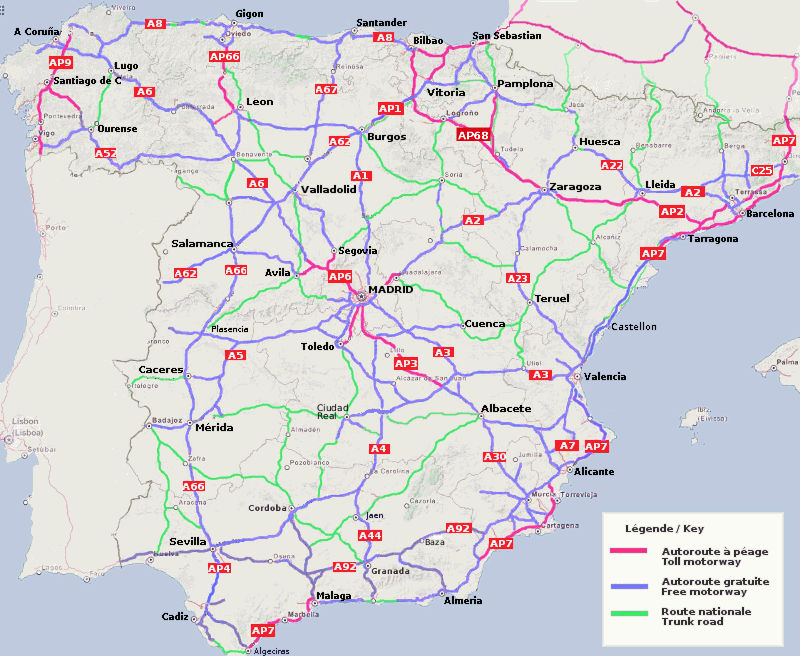
Main toll motorways in Spain:
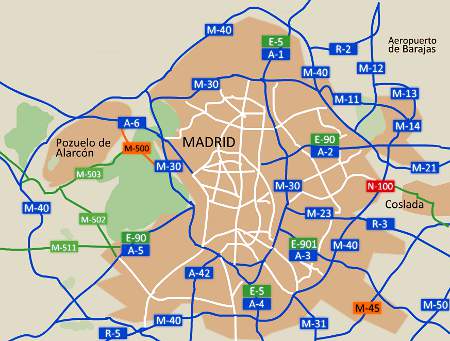
Motorways in the Madrid area

- Small hotels with character Independent hotels in Spain .
- Gitelink Spain : Rural holiday cottages in Spain
Spain Rail Map and Transportation Guide
:max_bytes(150000):strip_icc():format(webp)/james-globe-56a3a1c05f9b58b7d0d2e4e5.jpg)
This map is intended to be used for travel planning and to get an idea of the extent of Spain's rail network. It shows the major Spanish cities and rail lines. The lines in blue show high-speed train routes. The red lines are only suitable for slower trains.
Spain is also well served by bus service. The bus is often cheap and slow, the train sleek and fast(er). Check out the expert's opinion: Everything you need to know about public transport in Spain .
Types of Trains
In Spain the highest speed trains are called AVE - Alta Velocidad Española . The line that runs from Madrid to Sevilla takes 2.5 hours to complete, much of the distance traveled at nearly 186 miles per hour.
The Euromed is a high-speed train that operates between Barcelona, Valencia and Alicante.
A reservation is necessary to travel on any train other than Regional Exprés or Cercanías (suburban train).
You may also wish to check out the special touristic trains .
Spain Rail Passes and Discounts
A variety of different Spain rail passes are available, including the two-country France-Spain Pass and Spain-Portugal Rail Pass.
If you have achieved 60 years of age or more, you can purchase a Tarjeta Dorada Card for €6 at Renfe stations, Ticket Offices and Travel Agencies. It offers a considerable discount on all trains, ranging from 25% to 40%.
You can book many tickets online, including the AVE trains: AVE Booking Center.
Don't understand which of the many rail passes might be for you? See Rail Passes - Which Eurail Pass is Right for You?
Where You Should Go
If you are unfamiliar with European train travel, you might be surprised at the places you can get to by rail. Damian Corrigan, About's expert on Spain, offers his choice for the best rail trips: Best Train Journeys in Spain .
How to Get from City to City in Spain
Visit the East Coast of Spain
How to Travel From Seville to Cordoba by Train, Bus, and Car
Traveling by Train in Europe: Where, Why, and How
Plan the Perfect Trip to Spain
Getting Around Madrid: Guide to Public Transportation
Navigating Valencia's Bus and Train Stations
Guide to Bus and Train Travel in Spain
Your Trip to Madrid: The Complete Guide
Youth Discounts on the Eurail Pass
Top 25 Valencia Sights and Day Trips
How to Travel From Barcelona to Bordeaux by Train, Bus, Car, and Plane
Your Trip to Barcelona: The Complete Guide
AVE Trains in Spain
The 12 Best Day Trips From Barcelona
Where to Go in July in Spain

Get our Rail Planner app
Plan your trip, get extra discounts, and show your Pass as you go.

Our favorite spring routes
Celebrate spring with these 7 off-the-beaten-path train routes

All about seat reservations
Everything you need to know about booking your seats

Alternatives to Busy Routes
Travel between popular European cities without seat reservations

Through our Chatbot in the bottom right corner.

Ask the Community
Browse questions from fellow Eurail travellers, or ask your own!
- Plan your trip
- Top Destinations
Spain By Train
- Order overview
- Reservations overview
- My Trips & Travelers
- {{translatedTraveler}} {{#promotional}} {{currencySign}} {{standardPrice}} {{/promotional}} {{quantity}}x {{currencySign}} {{finalPrice}}
- Child {{childPasses}}x FREE
- {{translatedPassType}}
- {{translatedValidityPeriodDescription}}
- {{translatedClass}}
- Remove Pass(es)
- {{variant.localizedTravelPackDescription}} {{quantity}}x Free
- {{variant.localizedPassUpgradeDescription}} {{quantity}}x {{currency}} {{price}}
- Your order will arrive by {{expectedDeliveryDate}} 1 x {{currency}} {{price}}
Your cart is empty
Trains are the perfect way to travel in Spain. The country is filled with lively cities, cultural curiosities, lovely beaches, and great food. Your Eurail Spain Pass is your ticket to amazing rail adventures, from the Sierra Nevada mountain range in Andalusia to the unspoilt beaches of the Costa Brava.
Train types in Spain
The majority of trains you'll take on the Spanish rail network are run by RENFE , the country's national train company. High-speed and night trains connect Spain to other European countries. You can search for Spanish train times in the Eurail timetable as well as on the RENFE website .
- Domestic trains
- International trains
Night trains
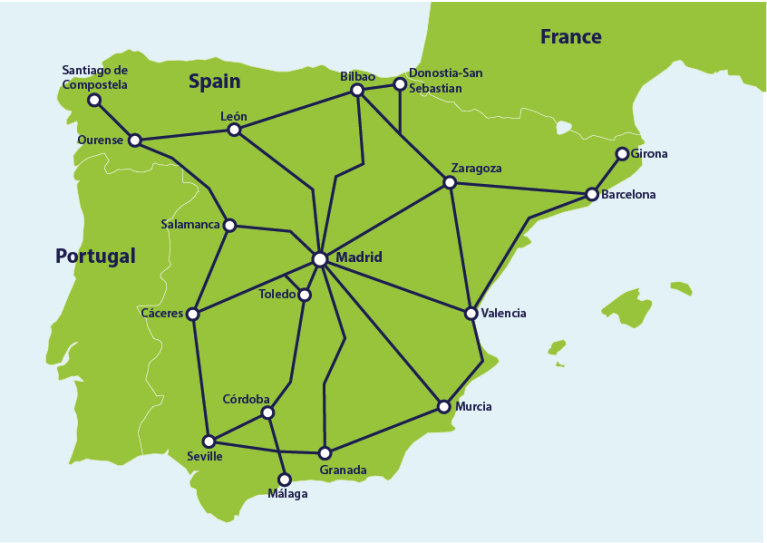
Regional and Intercity trains
Media Distancia (RE)
Connects larger cities with smaller destinations over medium distances.
Fast trains making frequent stops along their routes.
Cercanías (RE)
Suburban trains serving Spain's largest cities such as Madrid and Valencia. In Catalonia, around Barcelona, these trains are branded as Rodalies .
Domestic high-speed trains
Avant (AVN)
High-speed services for short journeys along short to medium routes.
Faster and more comfortable than Media Distancia with similar coverage.
- Covering Europe's largest high-speed rail network, these trains travel on speeds of up to 310 km/h (193 mph).
- Takes you from Madrid to Barcelona in under 3 hours.
Alvia (ALV)
Comfortable, long-distance trains connecting Madrid and Barcelona to destinations throughout Spain.
Intercity (IC)
Comfortable, long-distance trains connecting Madrid to destinations in the south of Spain.
Euromed (EUR)
High-speed, air-conditioned trains running along the Mediterranean coastline of north-eastern Spain.
Connects key cities in the Levante region: Barcelona to Valencia in just over 3 hours then onwards to Alicante.
International high-speed trains in Spain
TGV INOUI to France
- TGV INOUI Trains operated by the French railways.
- Barcelona – Paris.
RENFE AVE to France
- Barcelona – Lyon
- Madrid – Marseille
- Reservations are required
- Intercity trains that link Spanish train station Vigo Guixar with Porto in Portugal.
Other International routes to France (also see Night Trains section)
Rodalies (re).
It is possible to reach cities such as Perpignan and Toulouse by local trains from Barcelona. These French cities are very well connected to Paris and the rest of France by TGV and other trains, as an alternative to the direct Barcelona-Paris services.
- From Latour de Carol, connecting trains go to Toulouse.
- From Cerbere, connecting trains go to Perpignan, Montpellier, Nîmes, and Avignon (France).
Alvia (ALV) Madrid – Irun
- A 3km walk from Irun to Hendaye (France) to take direct trains to Bordeaux and Paris. Or take Euskotren (not included for Passholder)
Other International routes to Portugal
IC & Regional train (RE)
- Madrid – Badajoz by IC.
- Badajoz – Entroncamento.
- Entroncamento – Lisbon/Porto with connecting trains.
Intercités de Nuit (NT)
Night trains connecting the Spanish border to France. The following routes are useful for travelers to France:
- Latour de Carol – Paris (Daily)
- Cerbere – Paris (Not daily)
Use the Intercités de Nuit as an alternative route to France
Night trains from Latour de Carol and Hendaye are good alternatives for the busy TGV routes from Barcelona. The night train to Hendaye is a good alternative to reach San Sebastian and Bilbao.
- Search for Latour de Carol to Paris in our timetable and find the local train from Barcelona to Latour de Carol on the Rodalies website (‘La Tor de Querol-Enveitg’).
- Search for Cerbere to Paris and Barcelona to Cerbere in separate enquiries in our timetable. This train only runs daily during summer season.
- Search for Hendaye to Paris in our timetable and find the local trains from San Sebastian and Bilbao on Euskotren * to Spain. RENFE trains from San Sebastian and Madrid arrive to Irun, which is a 30 minute walk across the border or a 4 minute train ride by Euskotren.*
*Euskotren is not part of the Eurail network. Buy your tickets locally in Hendaye in vending machines or at the ticket desk.
Popular connections
- Domestic connections
- International connections
Here are approximate times between Spain's most popular cities when taking direct high-speed trains.
By traveling with slower regional trains you do not need to make reservations. For example, there's a direct regional train ride from Barcelona to Madrid that takes 9h 06m. That's 6 and a half hours longer than the high-speed train journey.
You can travel to and from Spain from popular cities in the following European countries:
Reservations
How can i make reservations for trains in spain.
More often than not, you need to make advance reservations for trains in Spain. Fees vary depending on the type of seat or bed you choose.
Eurail reservation self-service system
- TGV Barcelona – Paris (international tickets only)
- Only AVE, Euromed & Alvia trains (domestic tickets only)
Other platforms
- TGV Barcelona – Paris
- Intercités de Nuit Bayonne/Cerbere/Latour de Carol – Paris
At a local railway station
- Reservations for other domestic and long-distance trains in Spain can only made locally at the ticket desk of a Spanish Long Distance railway station. Find a list of long distance train stations here . You can make reservations on the day of travel or for up to one year in advance.
- The international TGV’s connecting Barcelona with Lyon and Paris in France, can only be booked at train stations in France and in the Eurail reservation self-service system.
- AVE international trains, reservations can only be made at a train station in Spain. They cannot be booked online or at a train station in France.
By calling RENFE phone sales
- +34 91 232 03 20
- Pre-reserving a seat is possible. You will receive a PNR code which you must use to pick up and pay for your reservation at a local station ticket office, making sure to show your Eurail Pass. After the booking, you must collect your reservation within 72 hours. The reservation can only be booked up to 24 hours before the train departure time. After this time the pre-reservation will expire.
- Please note that a pre-reservation is not the same as a reservation. It only holds a seat for you for 72 hours.
- Your ticket must be picked up from a train station in Spain.
If you have a disability or reduced mobility and you want to travel by train in Spain, you can request help from Atendo Service. You can contact them by phone:
- Phone number: +34 91 214 05 05
- Opening hours: 24/7
Other locations
- In Portugal , the following stations have international ticket desks where you can make reservations for RENFE trains departing from Badajoz and Vigo: Lisbon Santa Apolónia, Lisbon Oriente, Lisbon Rossio, Porto Campanhã, Porto São Bento, Aveiro, Coimbra and Faro.
- At a Deutsche Bahn ticket office. You need to provide the train number.
You can get more detailed information about train reservations in our reservation guide .
Get your Pass for Spain
Spend your whole vacation to discover Spain by rail.
Standard prices from $ 184
Global Pass
Have the freedom to visit Spain and up to 32 other Eurail countries.
Standard prices from $ 233
Tips and tricks
Quick facts.
Capital: Madrid
Population: 47.2 million
Language: Spanish
Currency: Euro (EUR)
Dialing code: +34
Spelling of city names
On Spanish train timetables and at train stations in Spain, you'll usually find the local spelling of Spanish cities and stations.
Here is the local spelling of some popular Spanish cities:
Alicante = Alacant
Seville = Sevilla
Spanish hub stations
Spain's main hub stations are Madrid Puerta de Atocha-Almudena Grandes, Barcelona Sants, Irun and Portbou . At these train stations, it's possible to connect to trains to Spain's main cities and many international destinations.
Station facilities
Stations in Spain usually have excellent facilities, often including:
Luggage lockers
Foreign exchange desks
Restaurants and cafés
Tourist information offices
ATM cash machines
Elevators and escalators
Access for disabled passengers
Gate at stations for some local lines
Barcode paper or mobile Pass cannot be used.
There is a number of stations with access gates. In these stations, customers can ask the staff to open them by showing the pass (and the seat reservation if necessary). In case there’s no staff at the station, the gates will be permanently open or will open automatically.
Get inspired
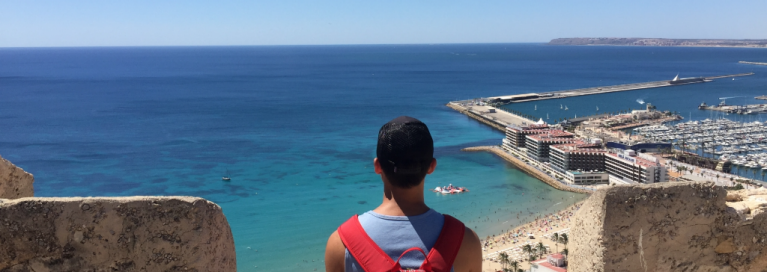
Change of currency
You cannot change the currency once you have a Pass in your cart. Remove the Pass, and then change the currency on the website header.
Spain Rail Line Map
Map shows major rail routes through Spain and connecting cities

IMAGES
VIDEO
COMMENTS
Practical information. Prepare for your trip in advance with our useful information on entrance requirements, money, safety, healthcare, opening times, etc.
9. Road trip around Mallorca. 5 days, 175 miles. Lazy. 10. The full circle - A complete road trip around Spain. 35 days, 2,800 miles. Challenging. Whether you want a relaxing drive along the coast or drive around the entire country of Spain, here are the 10 amazing options for a Spain road trip to pick from.
Here's my free Google Map of Spain. Map of Spain divided by regions (comunidades autónomas). Spain map: weather forecast (AEMET). ViaMichelin: Michelin route planner and maps to help you with directions and traffic. Spain map: train routes. Map: Spain's main travel destinations. You'll need a city map, but which one is best?
The best areas to rent a car are for Andalucía's hill towns (Arcos, Ronda, and more, in southern Spain), Camino de Santiago (east-west route in northern Spain), and Cantabria (chunk of north-central coast with beaches, mountains, and prehistoric cave replica), where sparse public transportation limits the efficiency of your sightseeing.
Tip #4 - Go On Day Trips To Spain's Hidden Gems. The adorable town of Competa. Everyone wants to go to Barcelona and Madrid, but fewer people are lining up around the block for Spain's lesser-known gems of towns. Some of my favorite smaller places in Spain were Frigiliana, Nerja, and Competa in southern Spain.
The Ultimate Spain Road Trip Itineraries: Routes, Sights, Guides, Maps And More. Last Updated: January 2, 2024. From San Sebastian's world-famous food scene and the attractions of Barcelona, to the incredible museums of Madrid, history of Granada and beaches on the Costa del Sol, this Spain road trip has it all!
Madrid - Segovia - Salamanca - Zamora - León - Valladolid - Penaranda del Duero - Madrid. This fantastic seven to ten day Spain road trip itinerary through the land of frontier castillos and roads that stretch into the distance for miles will take you across the high plateaus and rugged mountains of central Spain.
Northern Spain Road Trip Itinerary. Road Trip Through Tenerife (Canary Islands) Road Trip Through Catalonia (Catalunya) Road Trip Through Central Spain. Driving the Balearic Islands. Road Trip Along Spain's East Mediterranean Coast. Road Trip Across Galicia. Road Trip Around the Basque Country.
Plan your dream road trip through Spain with this epic Spanish road trip itinerary! I'll show you how to spend a perfect 3 weeks in Spain travelling from Barcelona to Seville, plus everything you need to know about renting a car to self drive in Spain.. I was part-way through planning a six-week Eurotrip with my partner when I became fixated on visiting Spain.
15 days in Spain: Planning the best route for a 2 weeks road trip! Days 1 & 2: Barcelona - 1st stop of your Spanish road trip! Day 3: Girona. Days 4 & 5: Valencia. Days 6 & 7: Madrid - A must in your Spain Roadtrip. Day 8: Toledo. Days 9 & 10: Seville. Days 11 & 12: Malaga. Day 13: Ronda and Pueblos Blancos road trip.
Ultimate Canary Islands Tour - 8 Days. Browse our collection of Spain travel maps to find tour & itinerary ideas for your Spain trip. Itineraries include: 7 Days in Spain - 4 Unique Itinerary Ideas, 10 Days in Spain - 6 Unique Itinerary Ideas, 5 Days in Spain - 6 Unique Itinerary Ideas, 14 Days in Spain - 6 Unique Itineraries, and 10.
Itinerary outline. How to get around. Barcelona. Madrid. Córdoba. Seville. More. One of the fascinating aspects of Spain is how each of its regions can truly feel completely different. Regions like Galicia, Basque Country, and Catalonia even have their own unique identities and languages.
Views over Zaragoza's skyline, a good starting point for a Northern Spain road trip. 📍 Google Maps Route | 🛣️ End-to-End Length: 611 miles (11 hours driving) | 🗺️ Highlights: Zaragoza, Donostia-San Sebastian, Bilbao, Santander, Gijon, Lugo, Santiago de Compostela . The Northern Spain road trip is a long route that covers 600 miles through seven cities.
Southern Spain Road Trip: Stop 1 - Madrid. Kick off your trip in Spain's amazing capital city. Madrid is somewhere I often think is underrated as it gets pigeon-holed as the business hub of the country. However, it has a lot of charm and some incredible places to visit too.
Northern Spain Road Trip: Stop 7 - Bilbao. Bilbao, the capital of the Basque Country, is home to centuries-old alleyways and modern-day architecture. The bustling city is small enough that you can explore it on foot, but big enough to keep you entertained for many hours. Bilbao is a great place to visit on your northern Spain road trip.
A Spain Road Trip: Perfect for Slow Travelers. Spain is one of Europe's top places to slow travel, and these 13 ideas for Spanish road trips — from the verdant north of Spain to the mountainous interior down to the stunning Andalucia coast and the arid Natural Park of Cabo de Gata — are some of the best road trips in Spain.. You'll even find several road trip routes in the Spanish ...
Spain Itinerary 5 Days - Northern Trip. For this classic 5-day trip across the northern parts of Spain, the total driving time is about 8 hours and covers around 750km.. If you rent a car, given this exact route, there are tolls on most of the highways so keep that in mind that it may be longer if you took non-tolled roads that may be more indirect.
Day 5: Granada. Next on our itinerary is a short stop in another Andalusian gem, Granada. Though you could spend several days discovering all the sights of Granada, there's really only enough time on this trip for a single day here. Start your day in the city center at Granada Cathedral.
The map below shows the main towns and cities of Spain, and the main road network. Free motorways are shown in blue, Spanish toll motorways are shown in red. Main roads (mostly modern single carriageway roads) are in green. See below for best route avoiding Spanish tolls.
This map is intended to be used for travel planning and to get an idea of the extent of Spain's rail network. It shows the major Spanish cities and rail lines. The lines in blue show high-speed train routes. The red lines are only suitable for slower trains. Spain is also well served by bus service. The bus is often cheap and slow, the train ...
2h 50m. Madrid to Irun. (Alvia high-speed train) arrow-bottom. 5h 50m. By traveling with slower regional trains you do not need to make reservations. For example, there's a direct regional train ride from Barcelona to Madrid that takes 9h 06m. That's 6 and a half hours longer than the high-speed train journey.
Spain has the second-largest high-speed rail network in the world, with over 3,200km (2000 miles) of high-speed railway lines. Our Spain Rail Map will show you where you can travel by train in Spain and across the border into France. Renfe is the primary operator of trains in Spain. It runs the impressive AVE service, which connects Spain's ...
Map shows major rail routes through Spain and connecting cities. Line. Key. high speed and fast intercity trains available. normal train services available. Spain Rail Travel Map showing major locations and routes through the country.
Some of Spain's most popular seaside cities and villages will soon be linked by a new train line. The €2.5 billion project will see the route from Malaga to Fuengirola extended along the Costa ...